Posts Tagged: loon
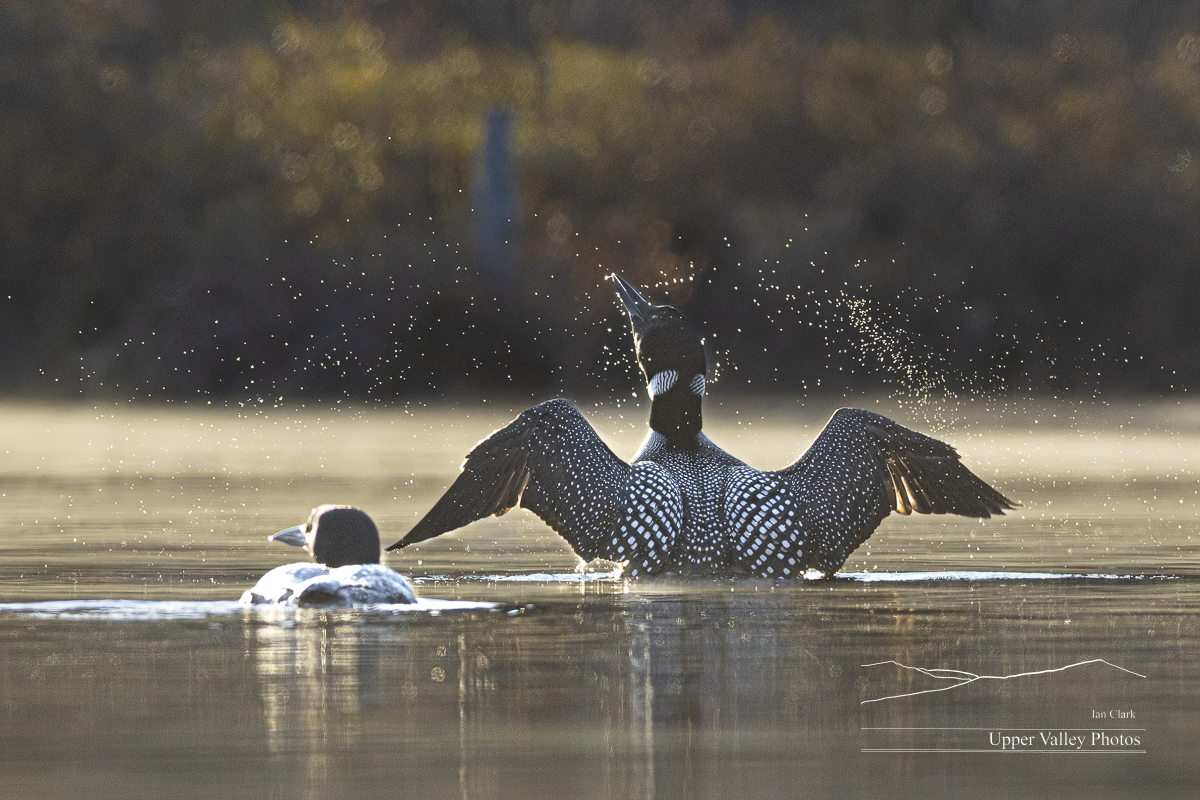

Catching Up with the Usual Suspects
I’ve been able to get out a few times to visit two of the loons’ ponds. The loons are out and about, along with the full cast of the usual suspects.
The Vermont Institute of Natural Science in Quechee is hosting my exhibit of loon prints through the end of July. There will be a reception where I show my slideshow, An Uncommon Look at the Common Loon, on Saturday, May 11 at 3 p.m. There are more details at https://vinsweb.org/event/artist-exhibition-ian-clark/ and https://www.facebook.com/events/454025283855444.
And, I’ll be presenting An Uncommon Loon again at the Lakes Region Art Association Gallery in Laconia, NH at 6 p.m. on May 20. The talk hasn’t been posted on their site yet, but details about the Association are at https://lraanh.org/.
Do you have critters around? While I do a lot of scouting on my own, tips for finding critters are always appreciated. I’m always looking for mammals, if you’ve got bobcats, coyotes, fishers or bears that show up more than once, I’d love a chance to photograph them. I’m also looking for owls, woodpecker nests and scarlet tanagers along with rarer species that may not visit feeders regularly. Places where I can come and go early in the morning or late in the evening without disturbing you or the critters are best.
And now, the critters. Here’s a skunk that doesn’t seem to appreciate my trail camera.
Last Friday, I caught up with some volunteers from the Loon Preservation Committee (LPC)
as they deployed their loon nesting platform on Post Pond in Lyme, NH.
Nesting platforms have been a huge success in helping restore the loon population. The LPC put out their first platform in 1977. Since then LPC volunteers and staff have floated loon nesting rafts on New Hampshire lakes 1,685 times – not including this year. Nesting loon pairs have used these rafts 917 times, and hatched 976 chicks on the platforms – an incredible one in four chicks hatched in New Hampshire. You can learn more about LPC at www.loon.org – and check out their loon cam watching a nest in the Lakes Region at https://loon.org/looncam/. Sign up for their newsletter to keep up with New Hampshire’s loons. Vermonter’s loons get assistance from the Vermont Center for Ecostudies, check out their site, https://vtecostudies.org/
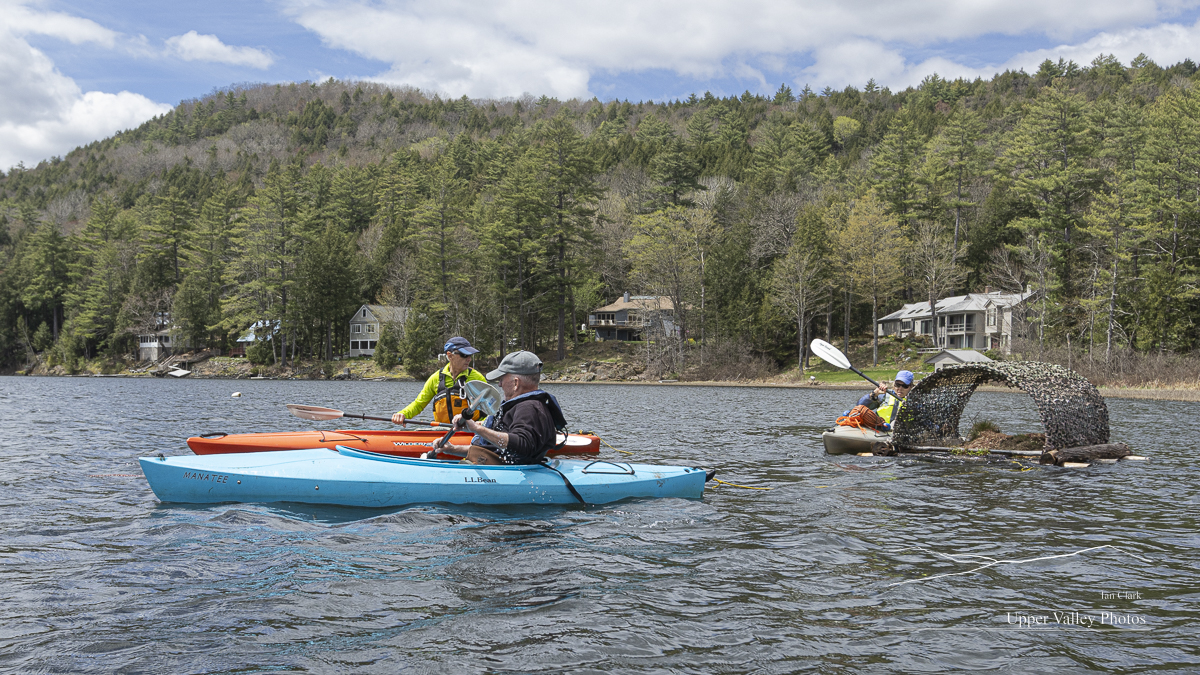
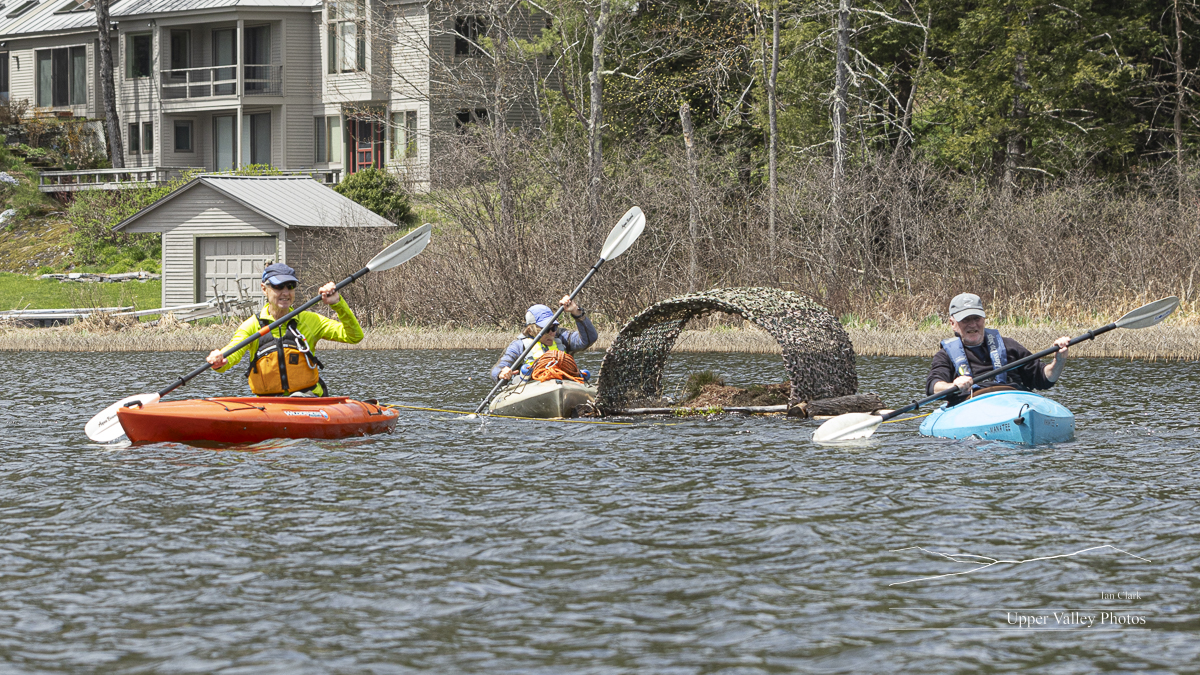

On April 23, I made it out to check in with the Westons. (For new readers, to give the loons some privacy, I named the loons on the pond to my east the Eastons. The loons to my west are the Westons, and the pond in the middle hosts the Middletons.)

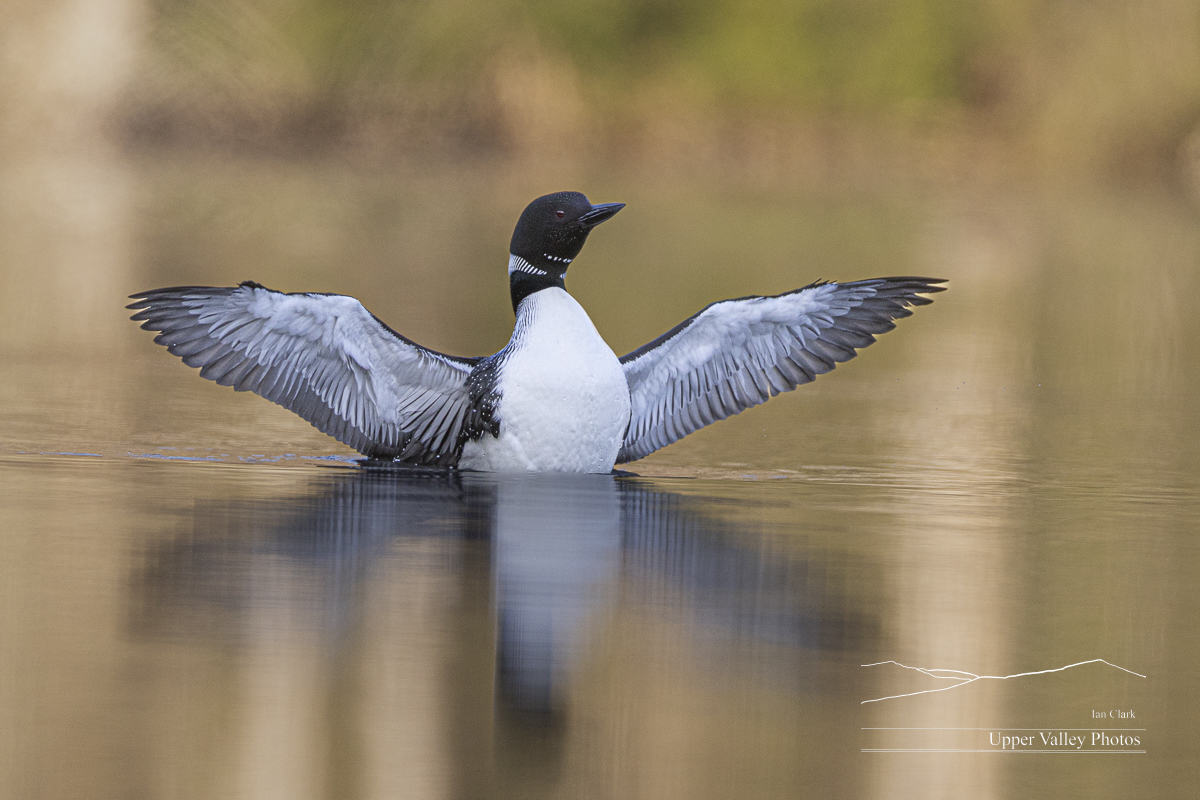
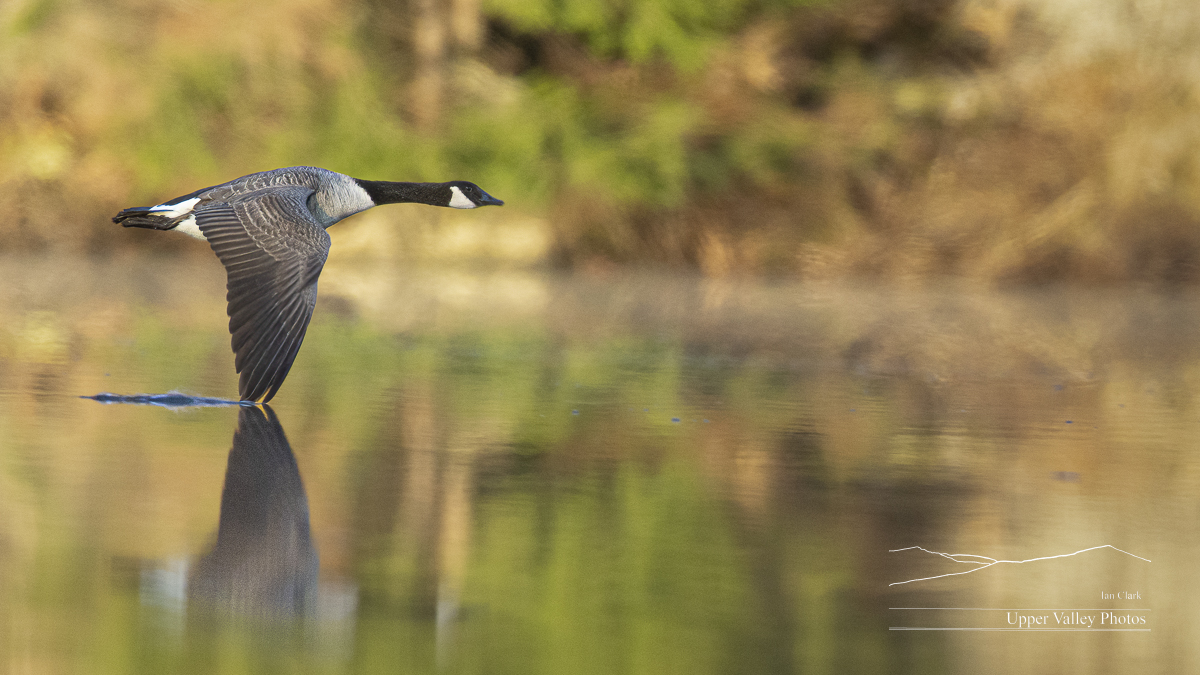
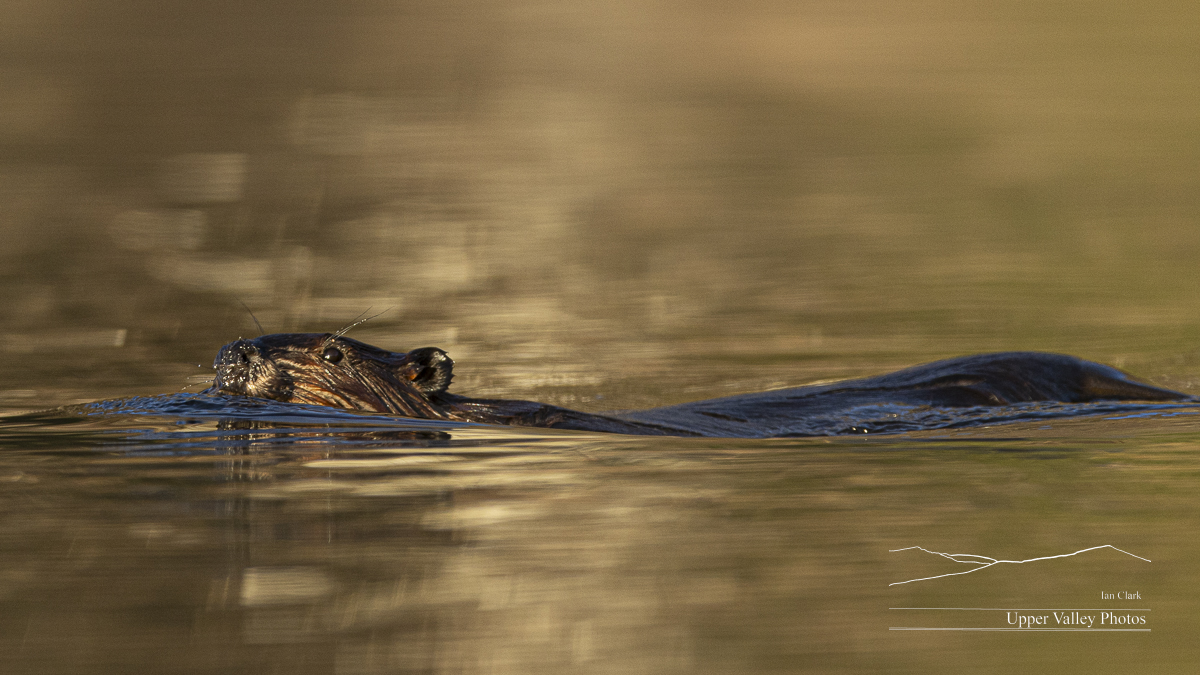
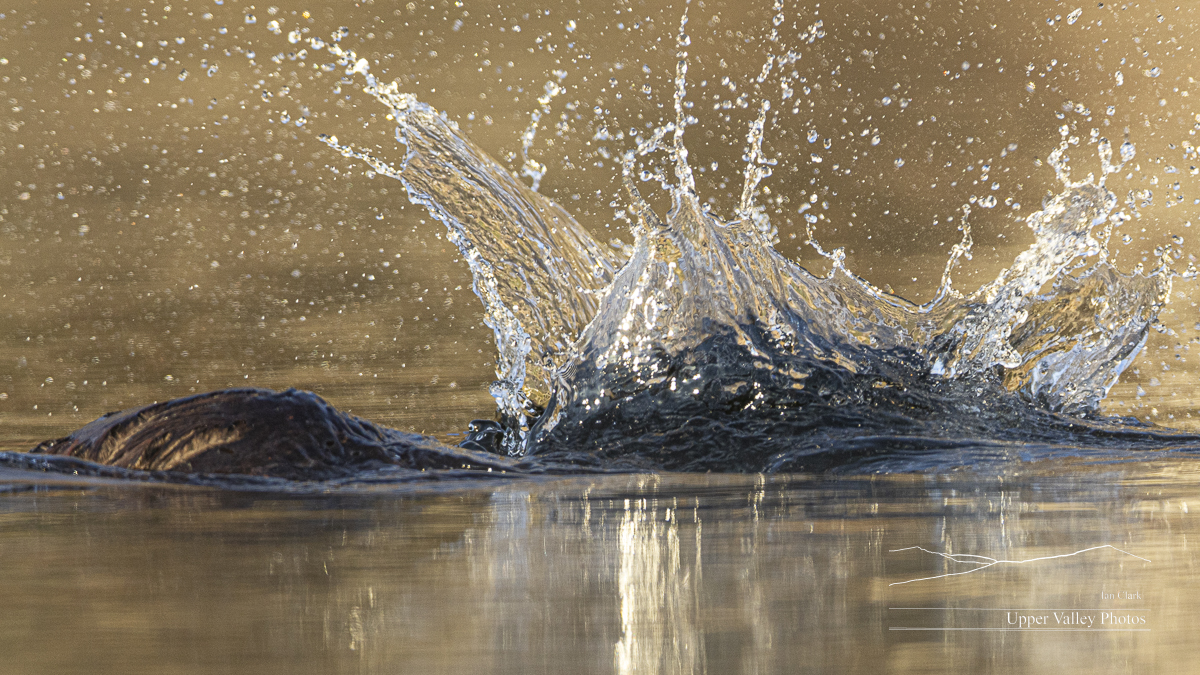
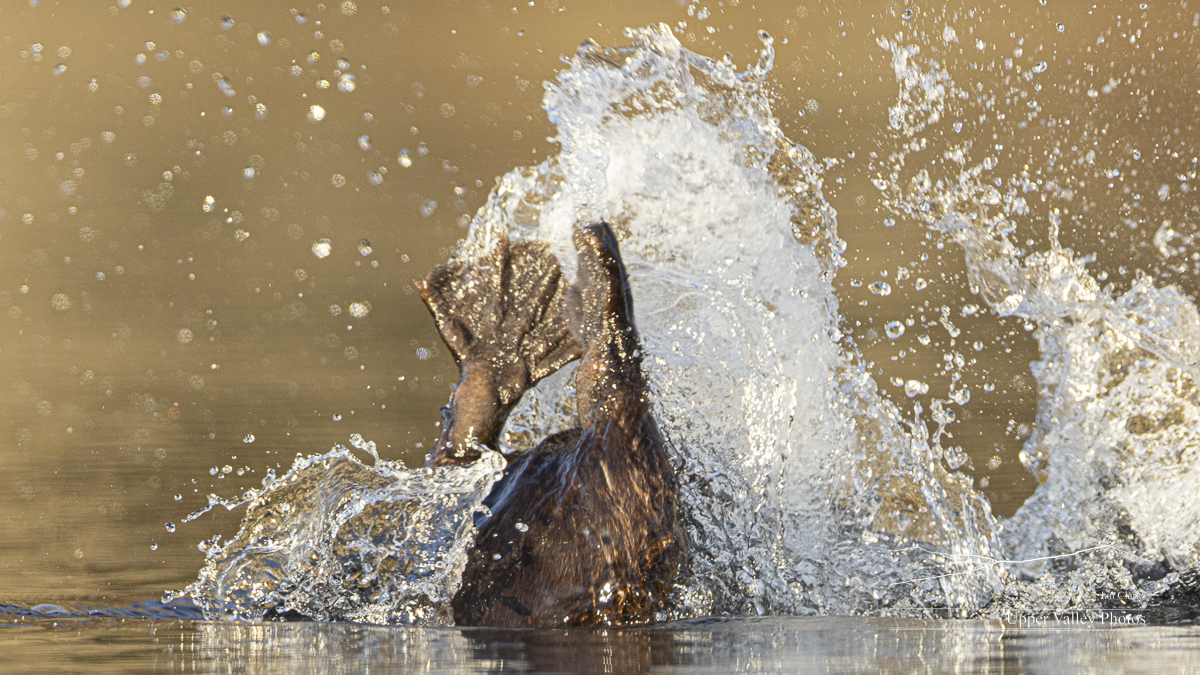


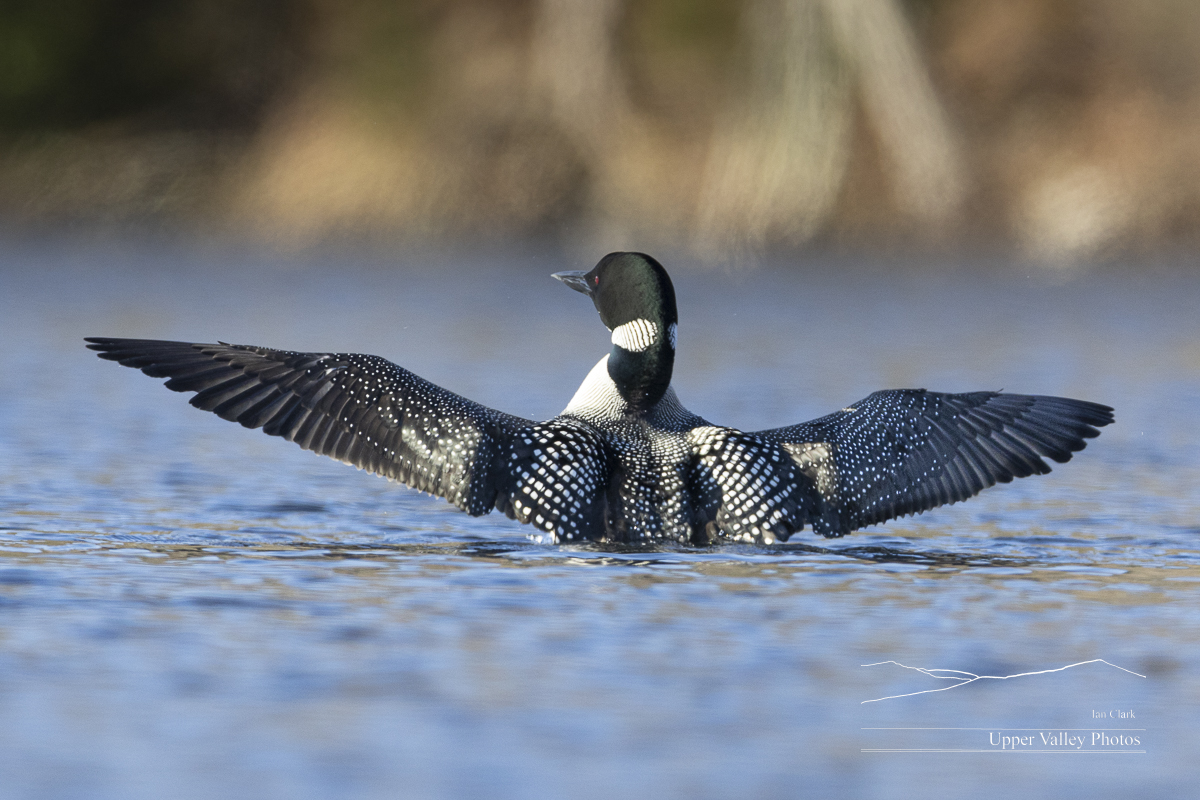

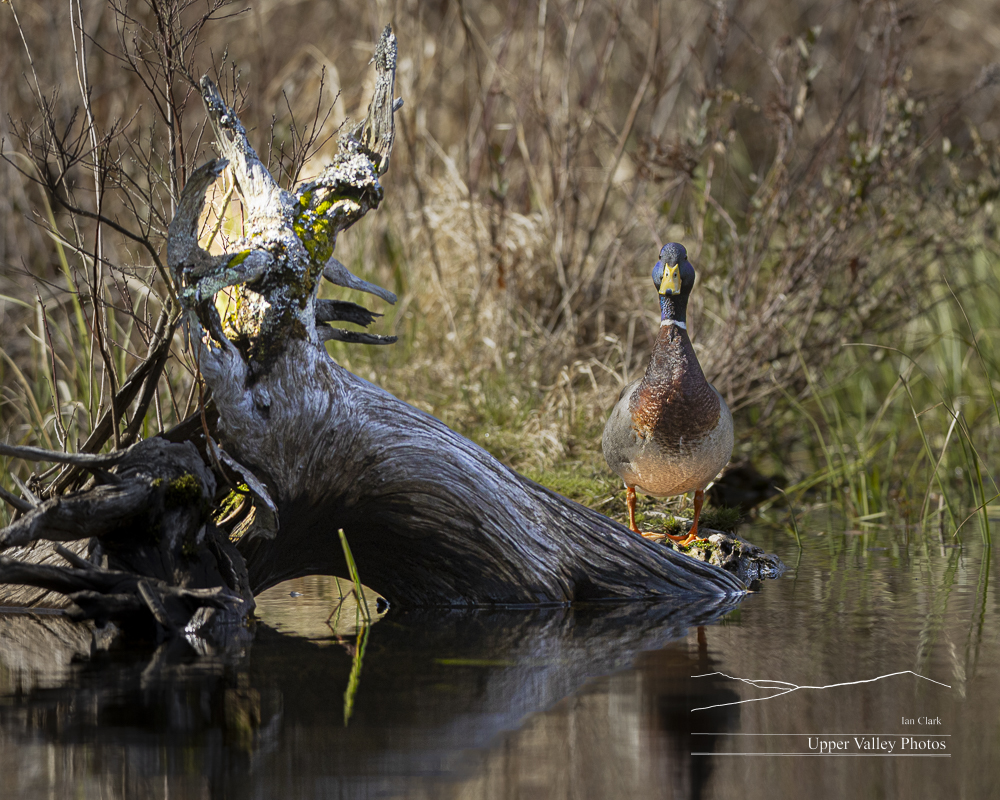
Last Friday, I visited the Middletons. They were busy foraging, apparently having to work for dinner. They were making long dives and covering lots of territory underwater. I went to see who else might be around the pond.
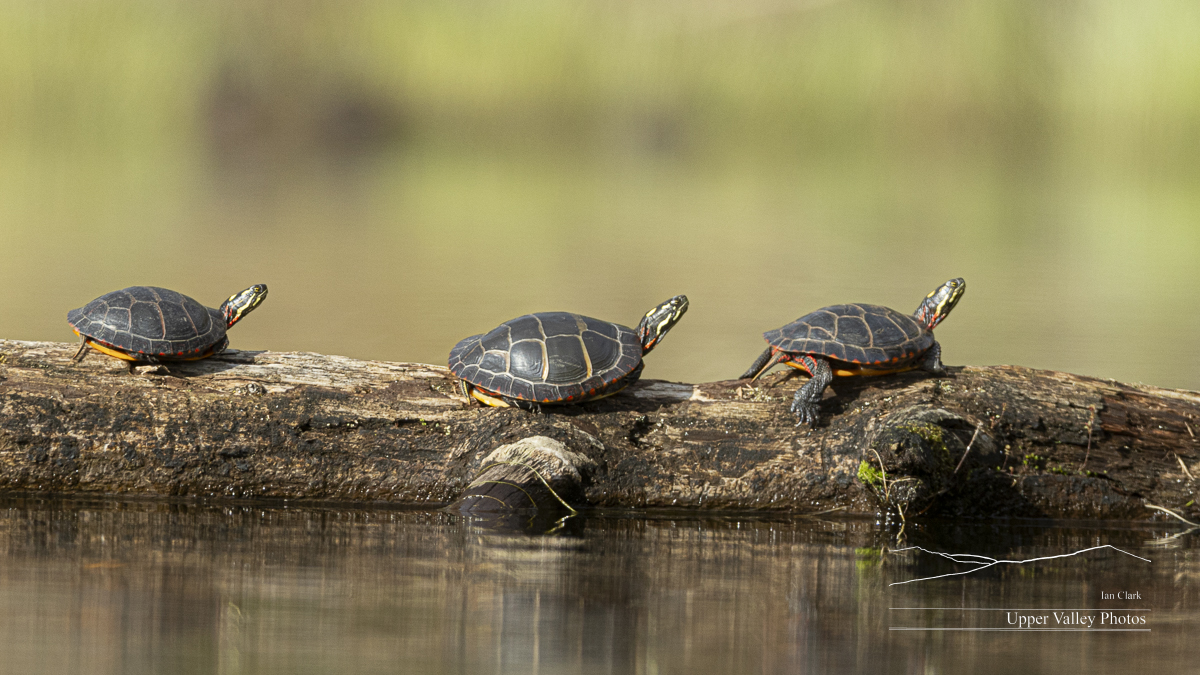
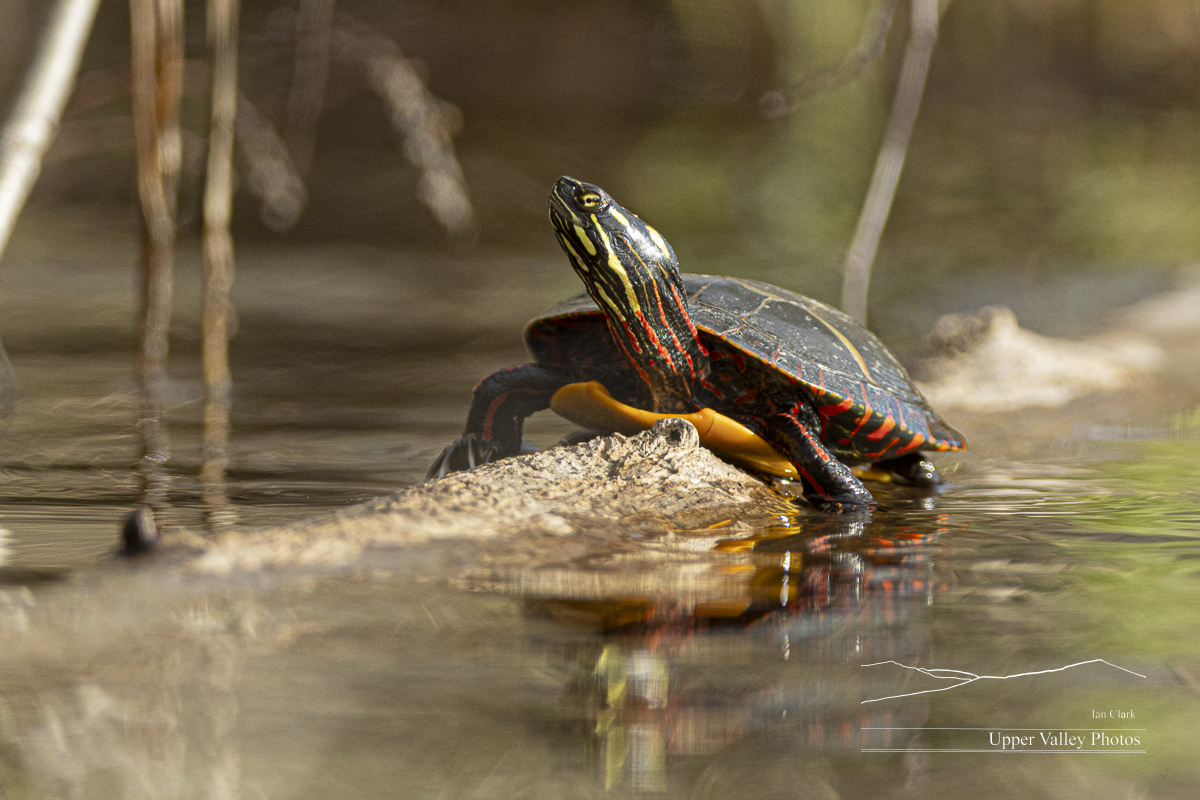
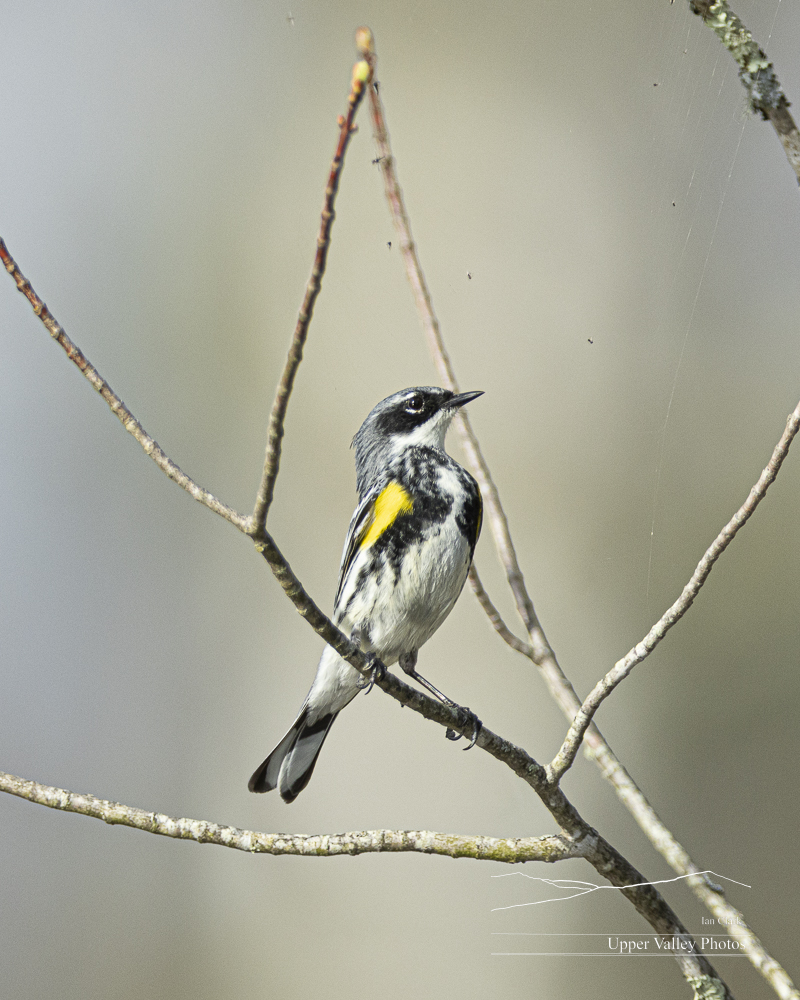

There were several pine warblers in the flock. I’ve yet to get a good photo of one. They tend to forage deep in the brush, making it hard to get an unobstructed view of them. It turns out one of my skills is photographing branches on which pine warblers were very recently perched. (My other talent is stalking heron-shaped sticks.)
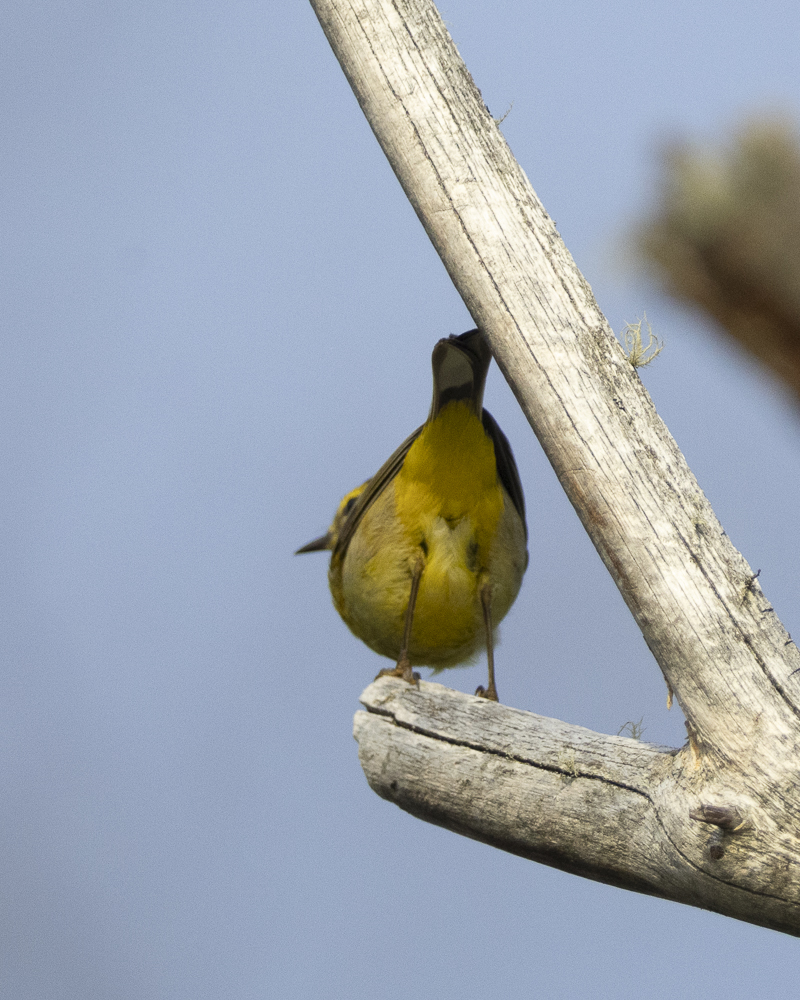
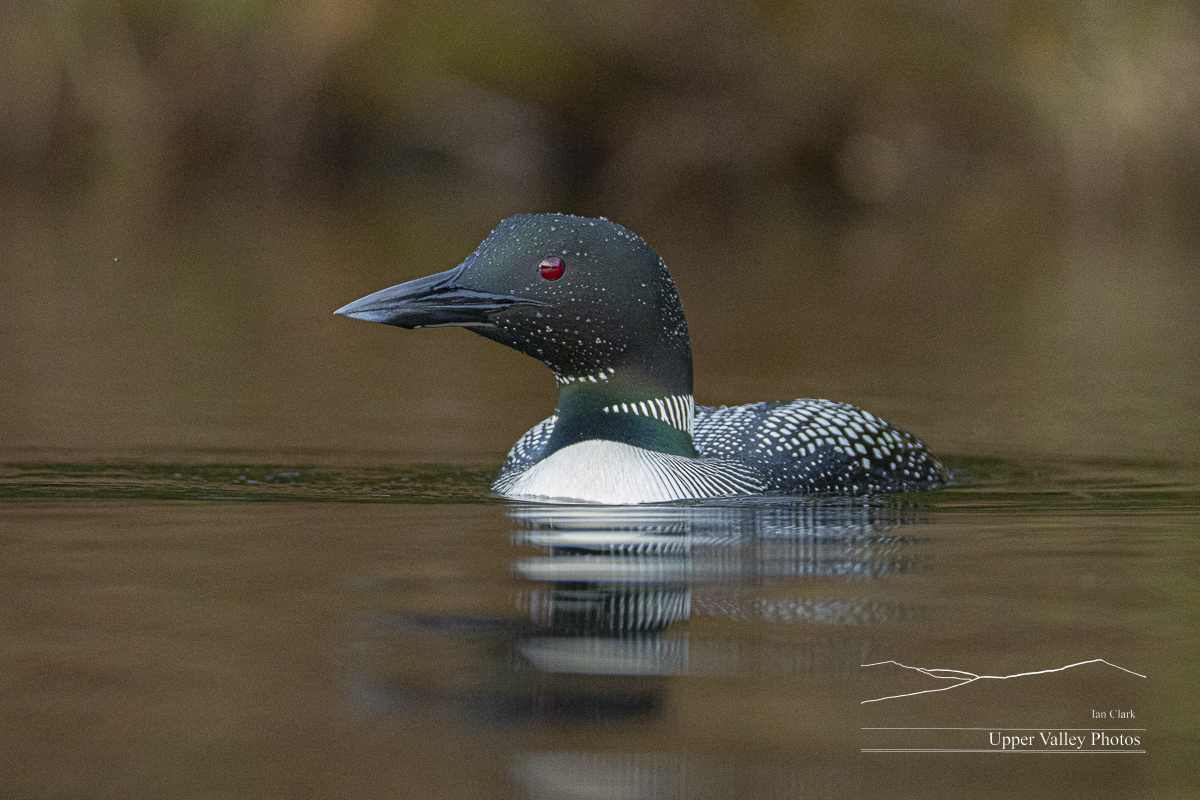
Saturday morning found me visiting the Westons once again. The weather went south rapidly and I left when it started raining.
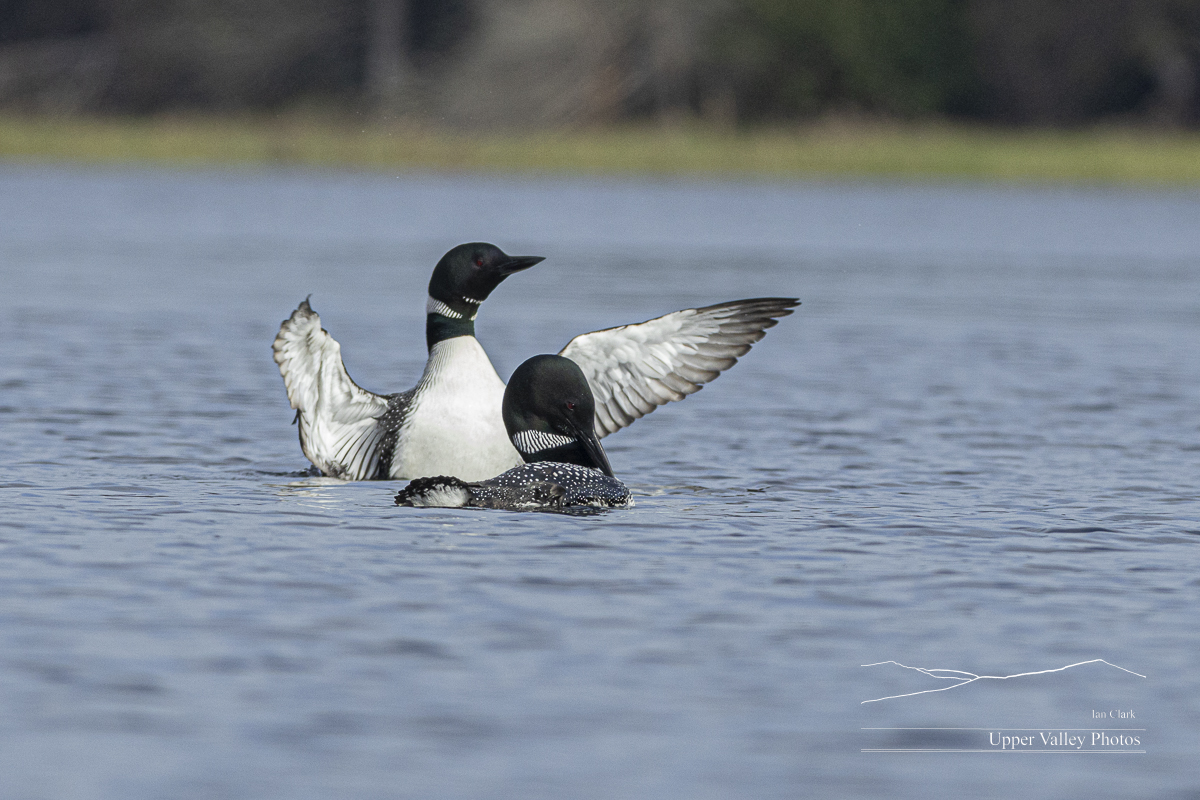
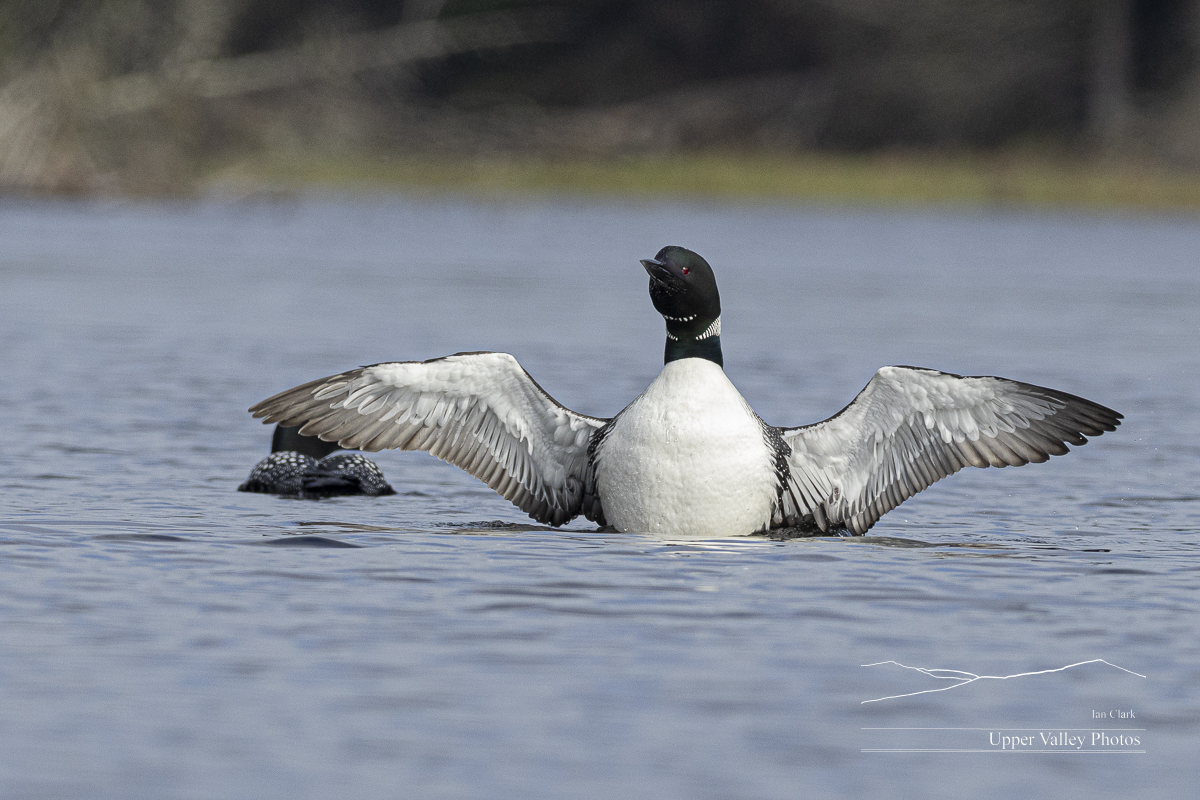
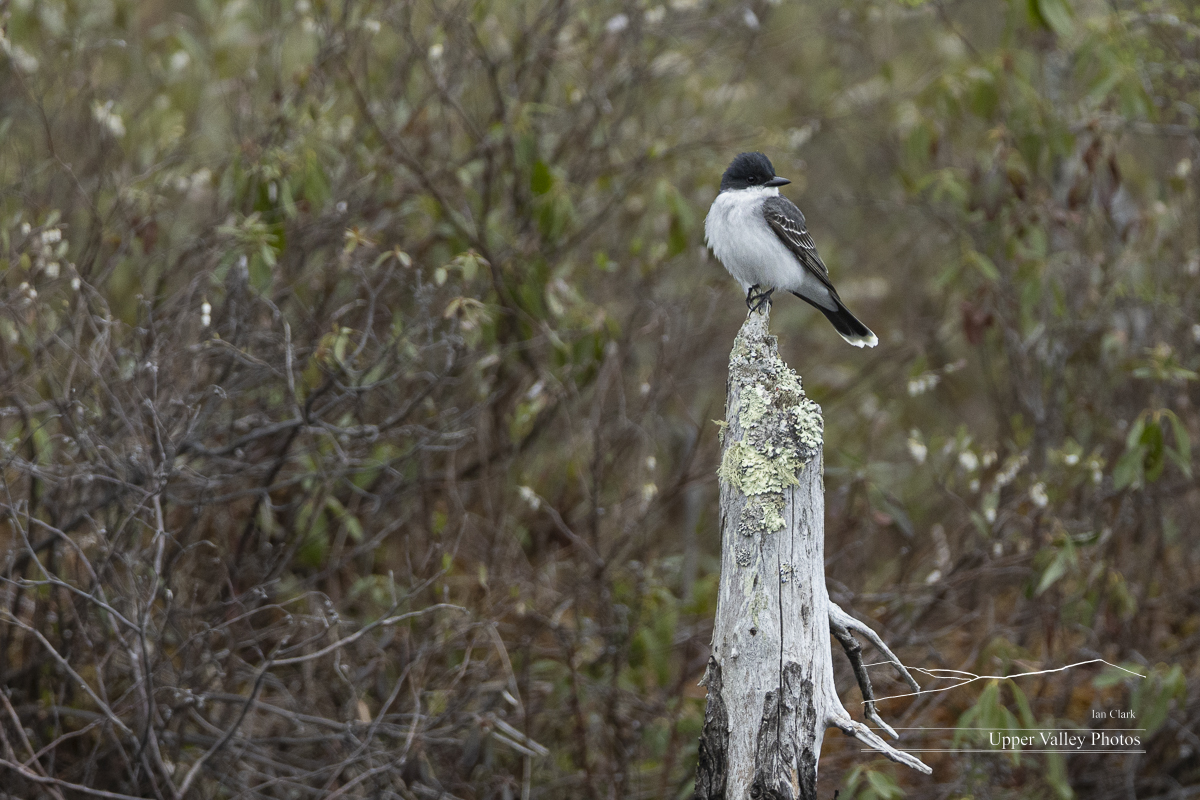
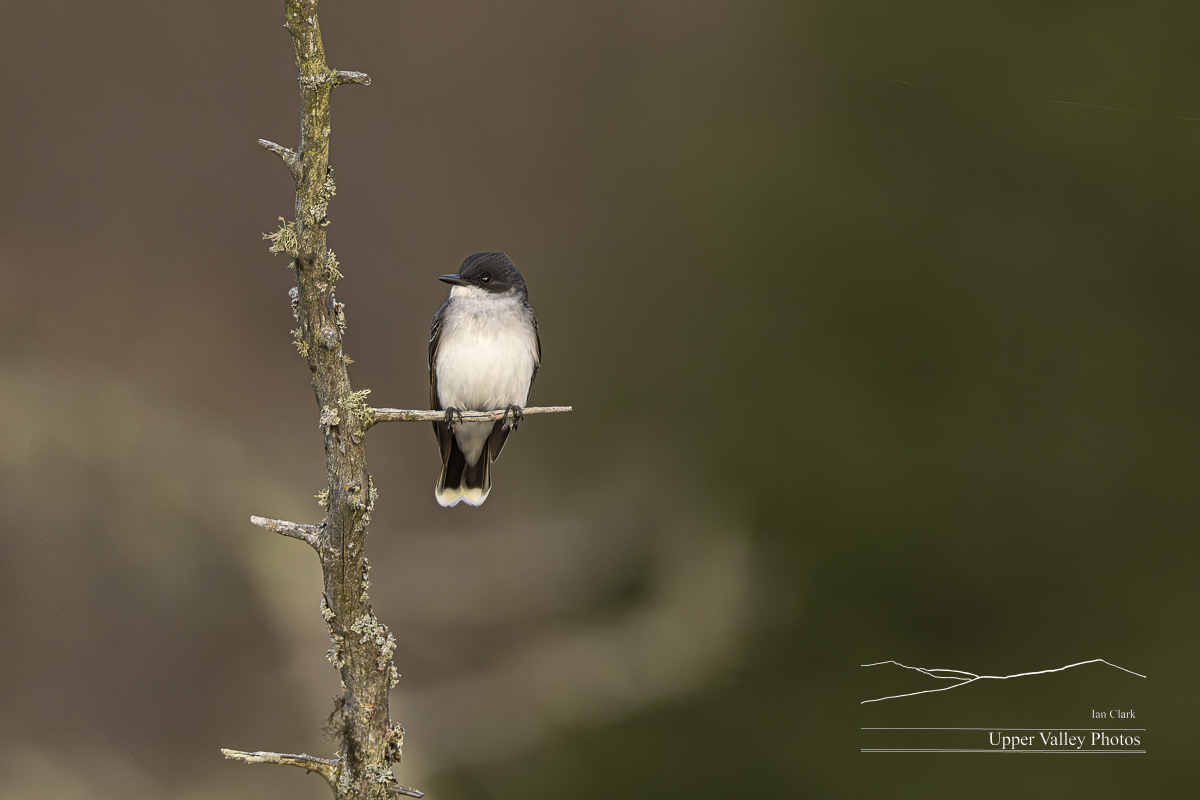
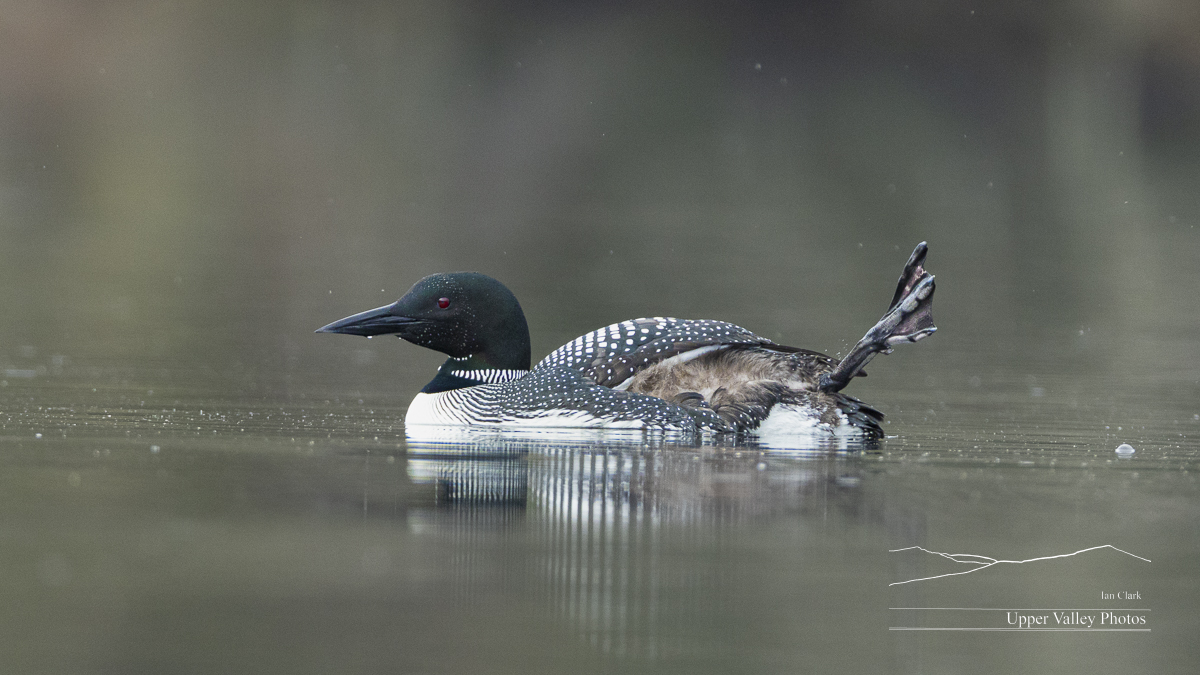
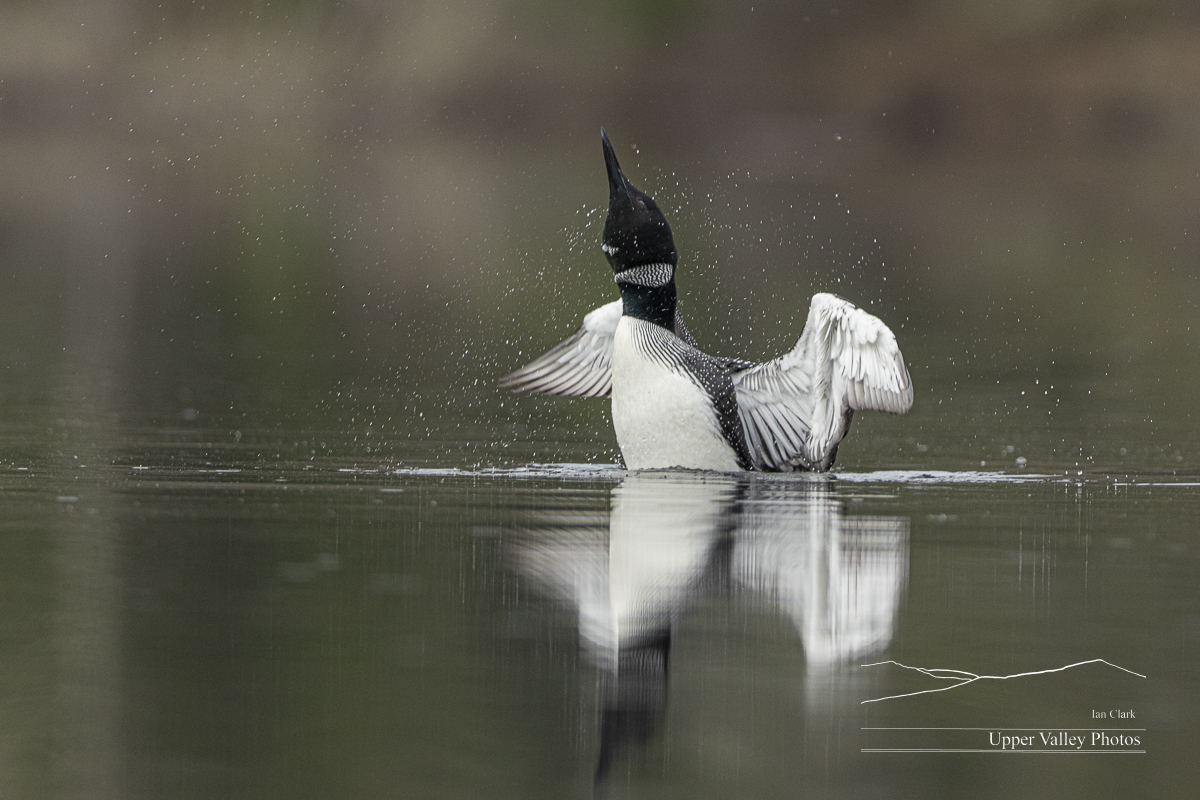
Battle for the Easton’s Pond
Sunday morning, the sky looked like there was a chance of some sunshine. I headed out to visit the Eastons. There was a light fog with hints of blue sky above when I arrived at the pond. And, it was a very pleasant 55° when I launched. The fog rapidly lifted for a beautiful morning. Our loon family was all together and the parents were both feeding the chicks.
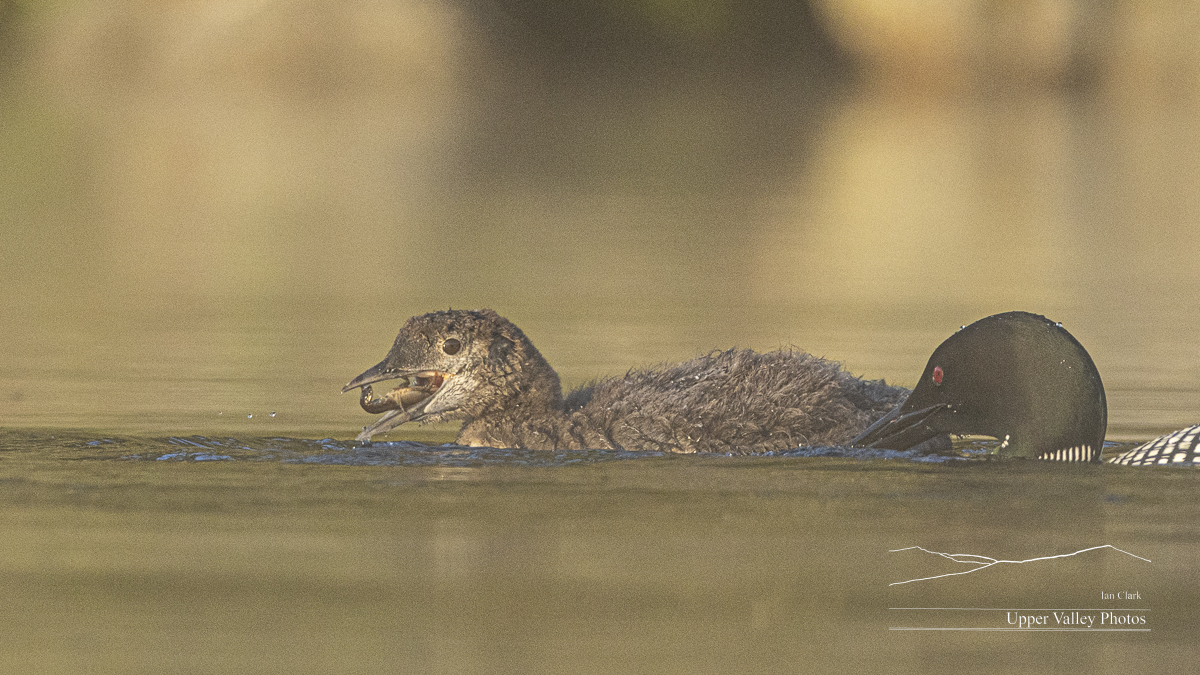
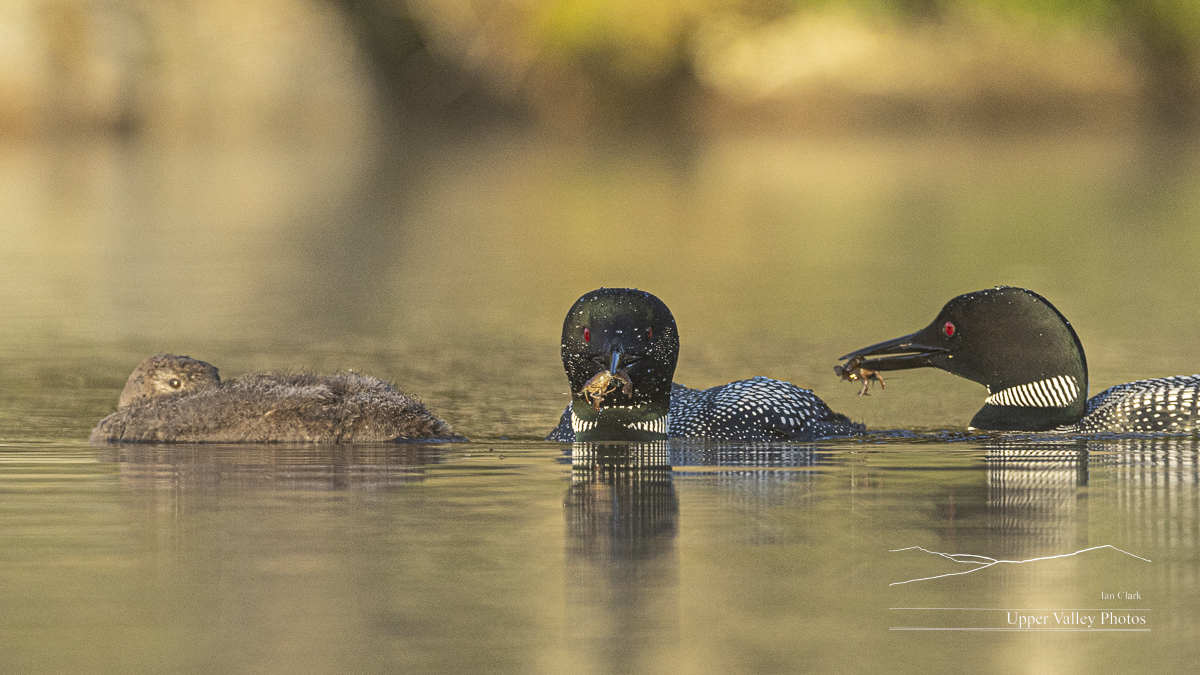
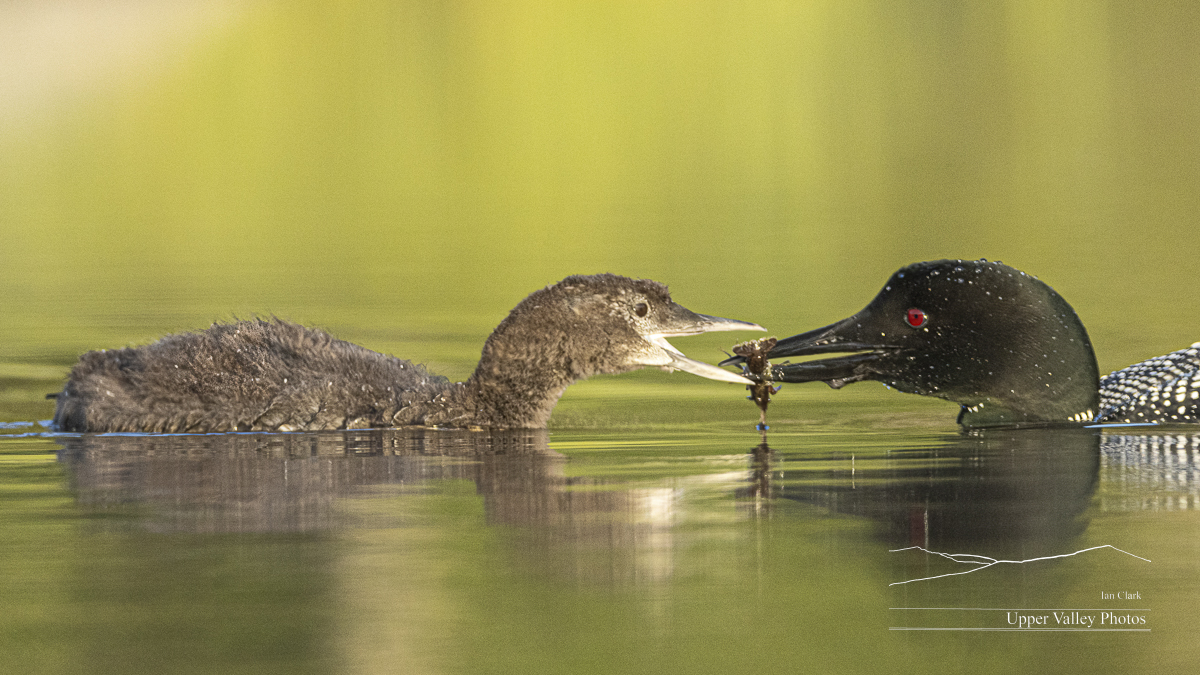
One parent went north, one went south. It wasn’t long before the one to the south sounded an alert. The one to the north went steaming down the pond at a good clip.

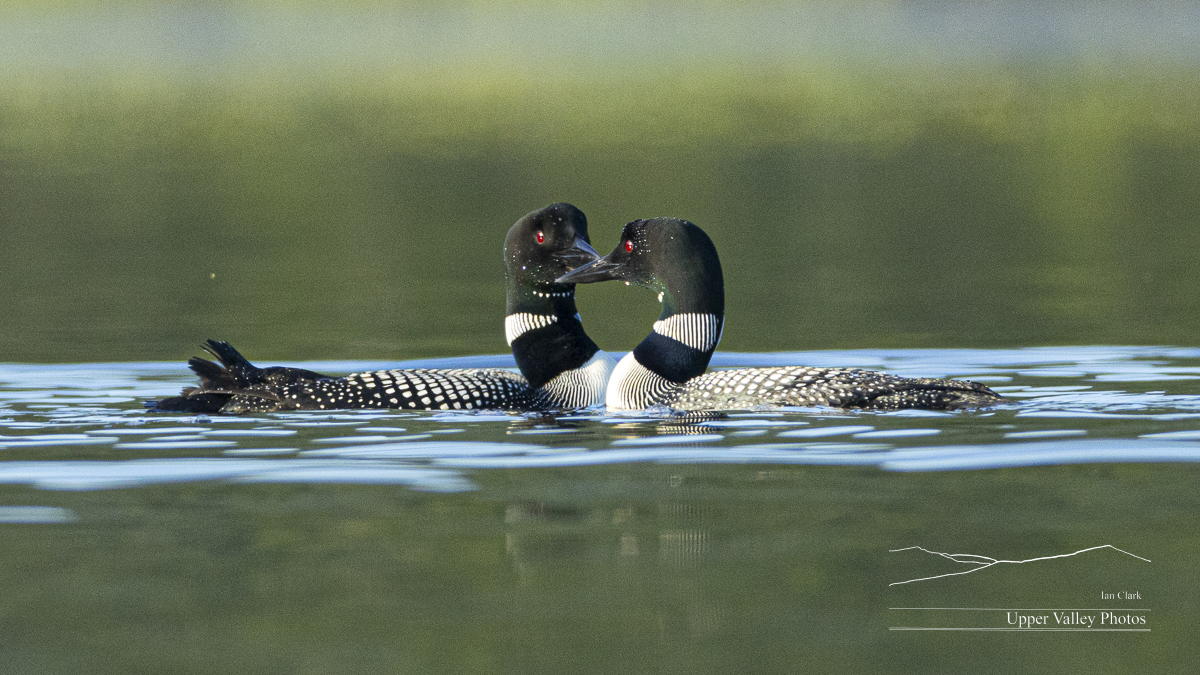
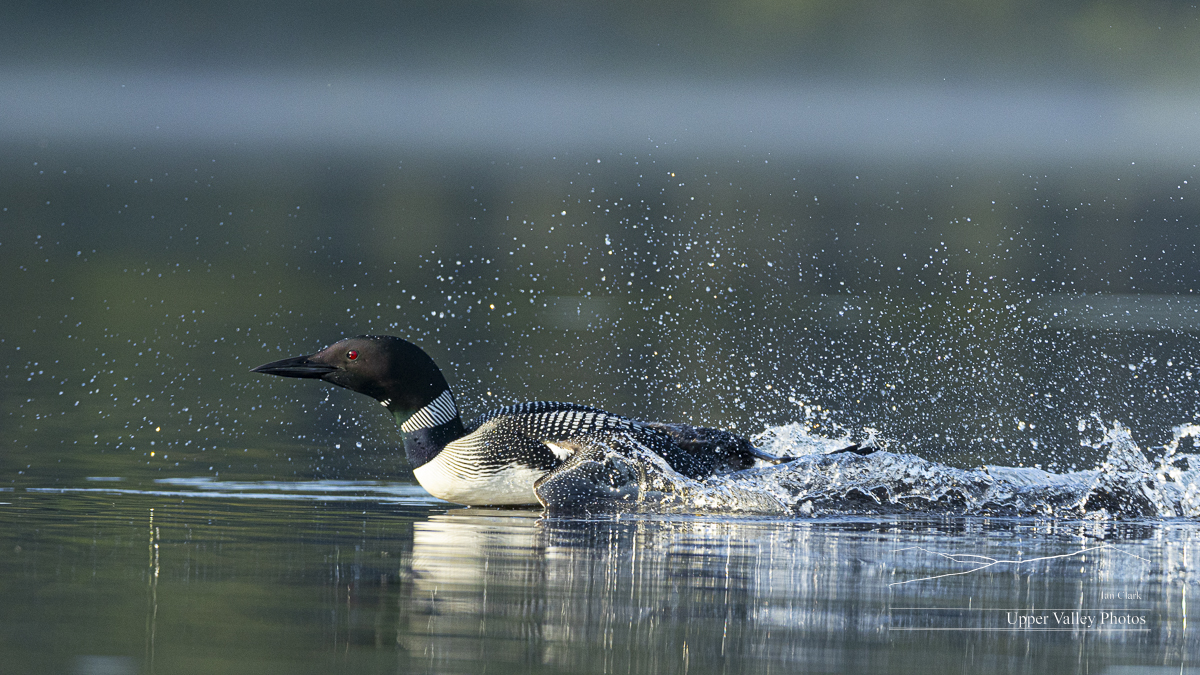
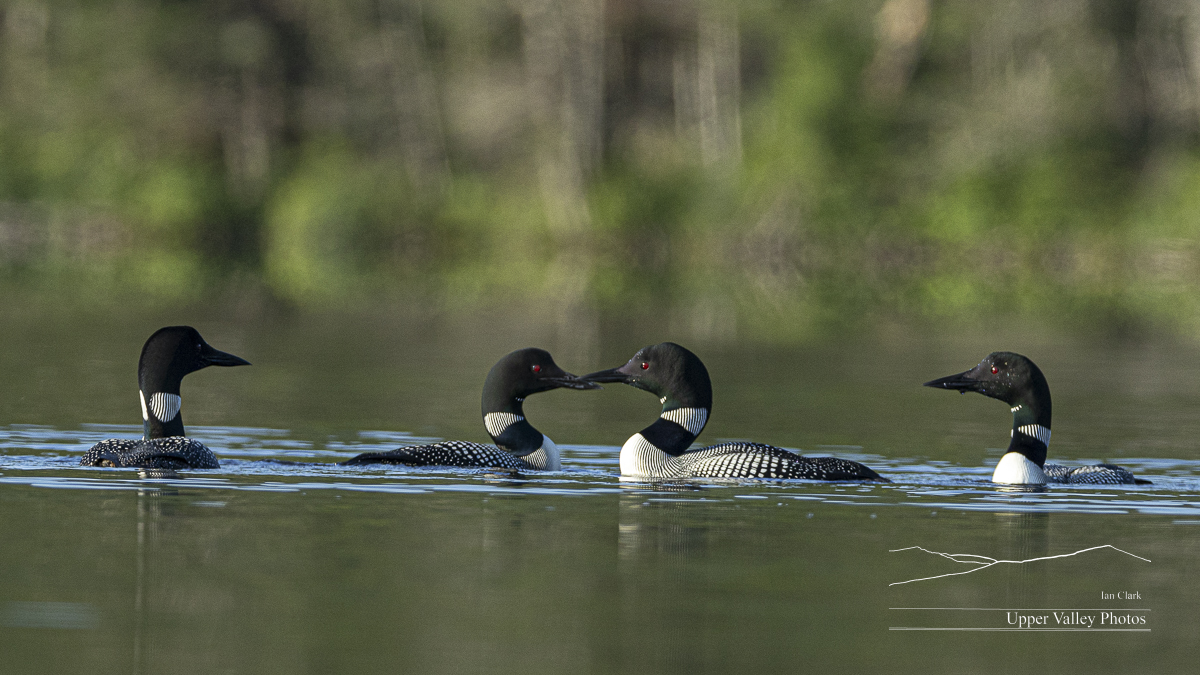
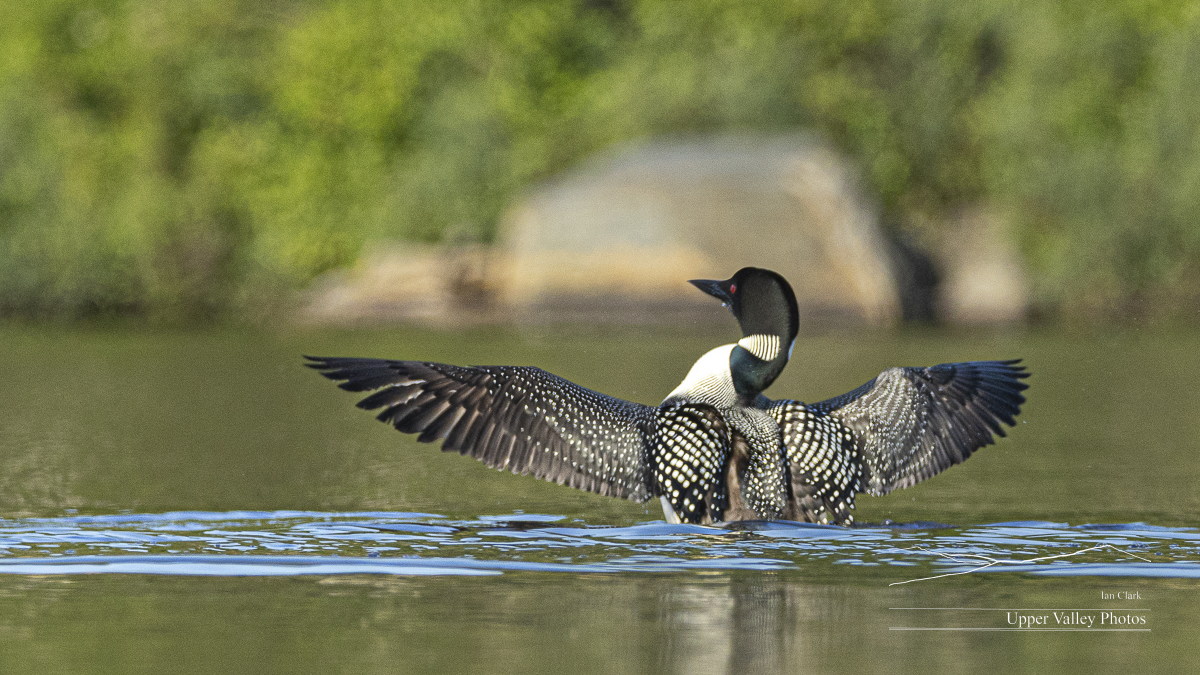

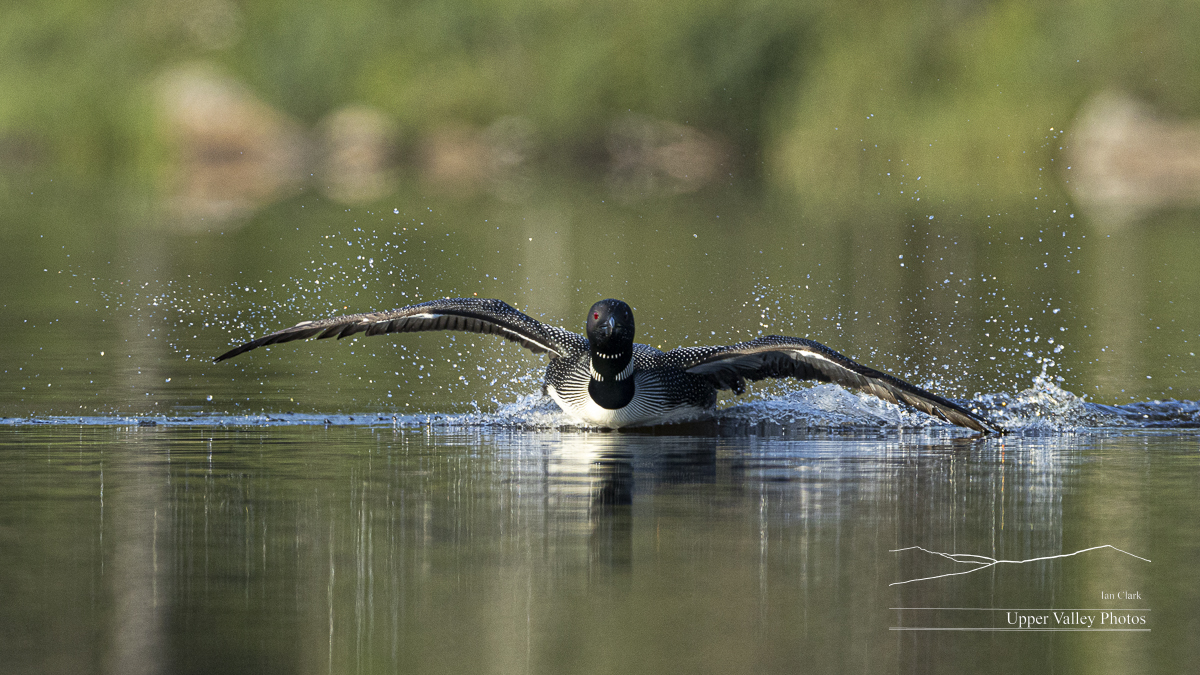
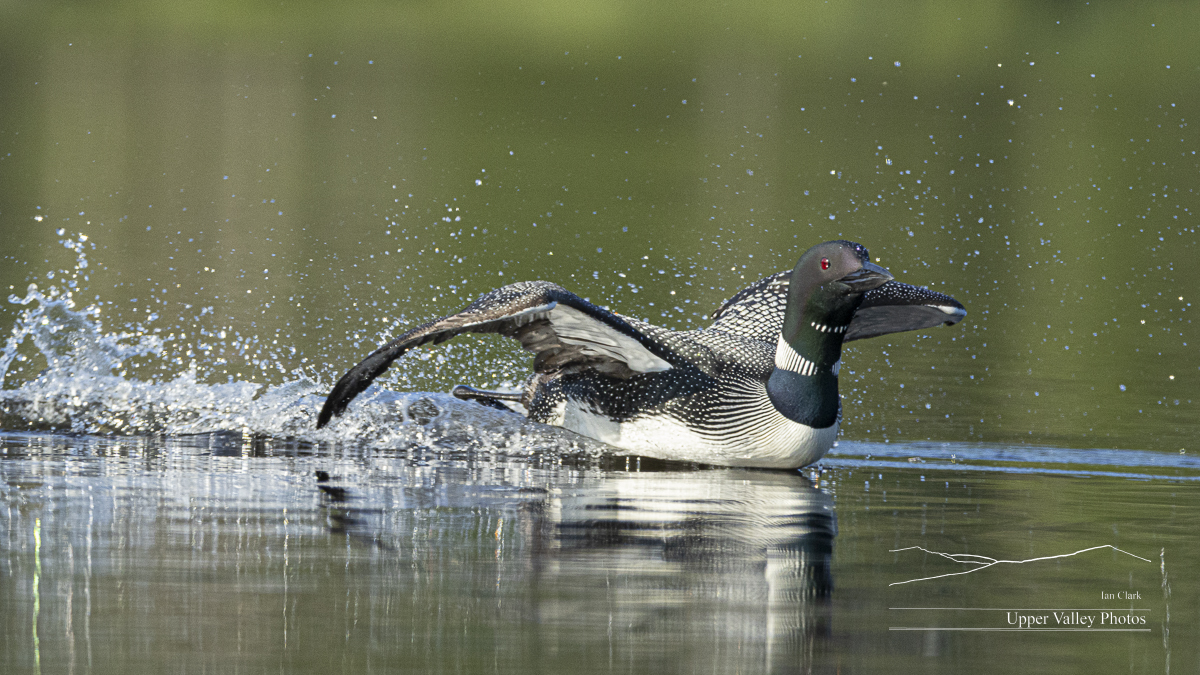
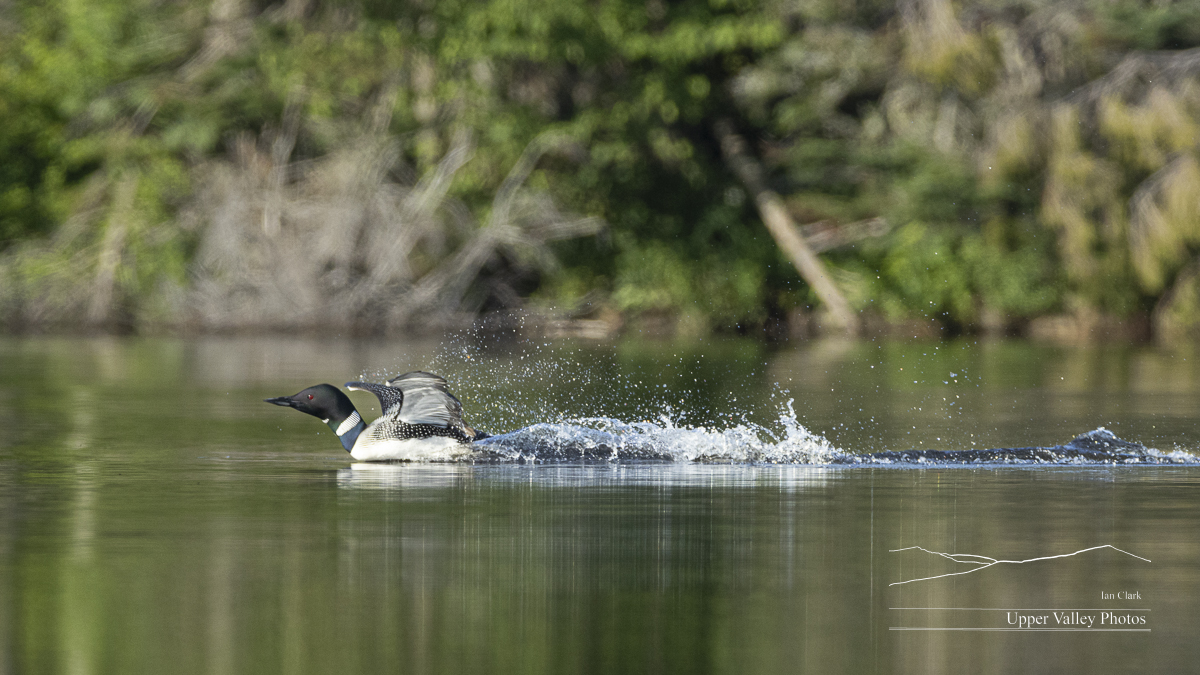
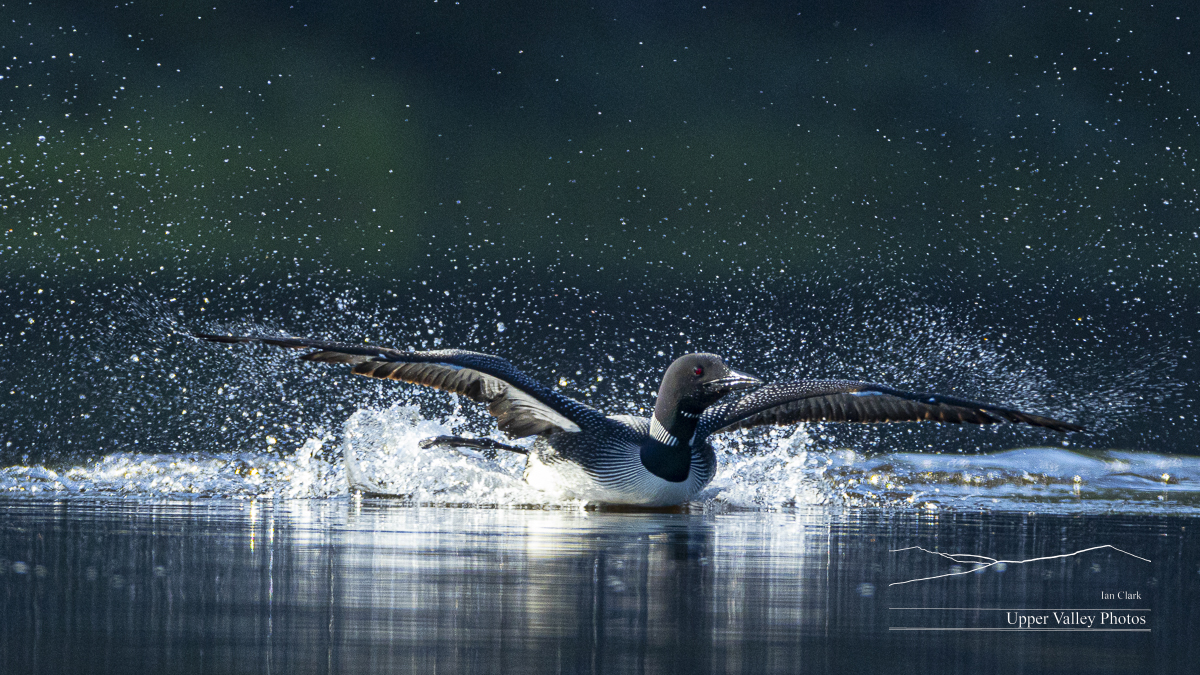
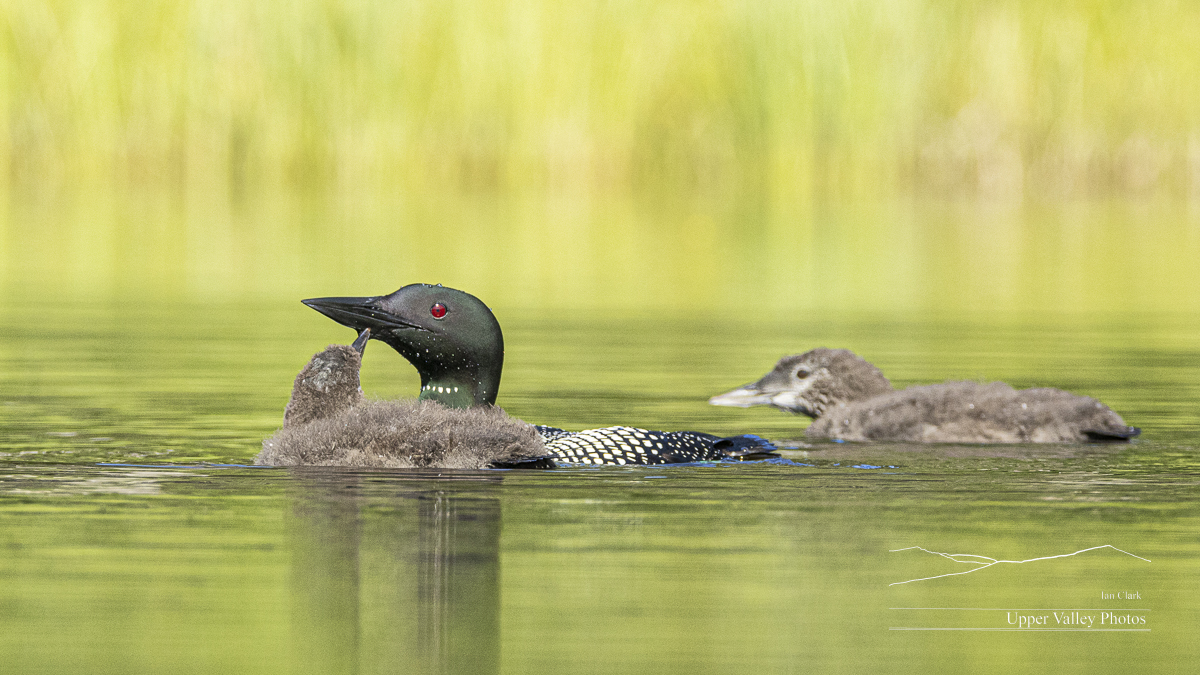
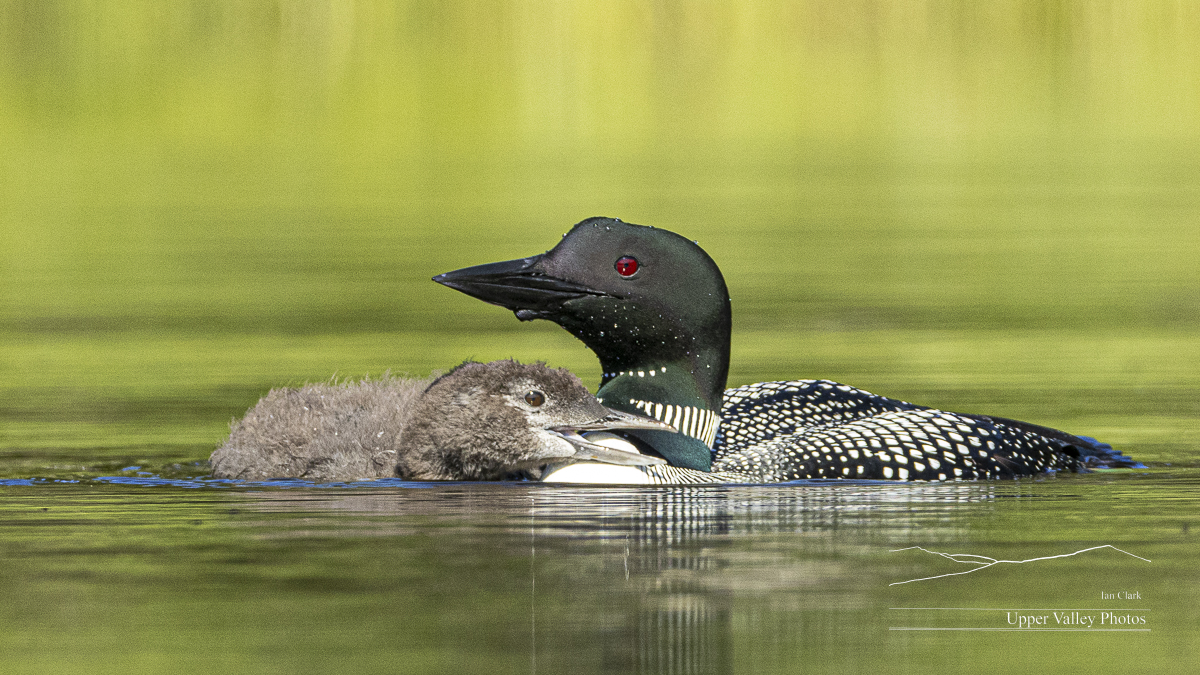
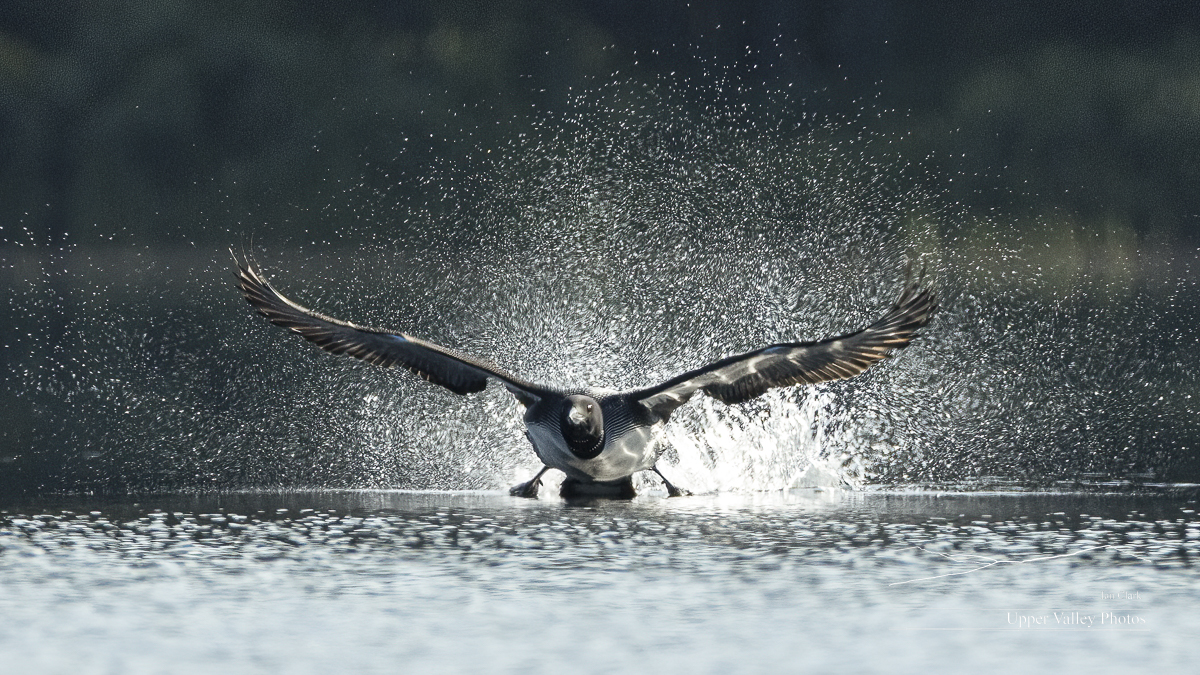
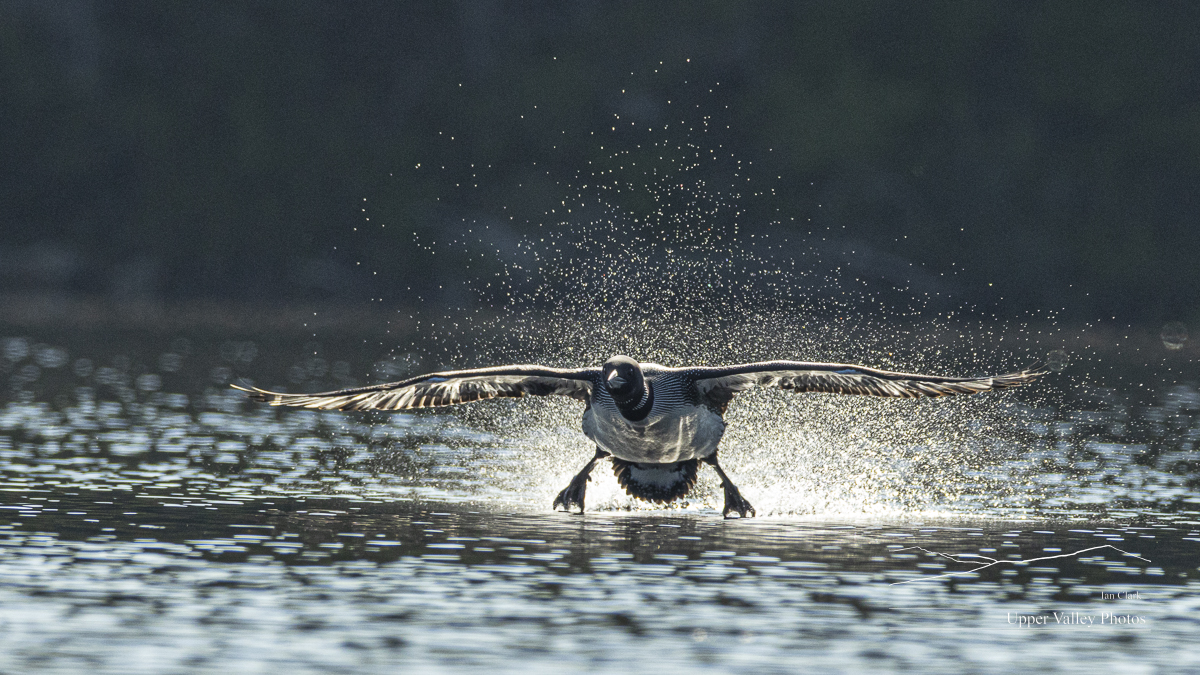
This morning, I went back up to the pond to see how the home team was making out.
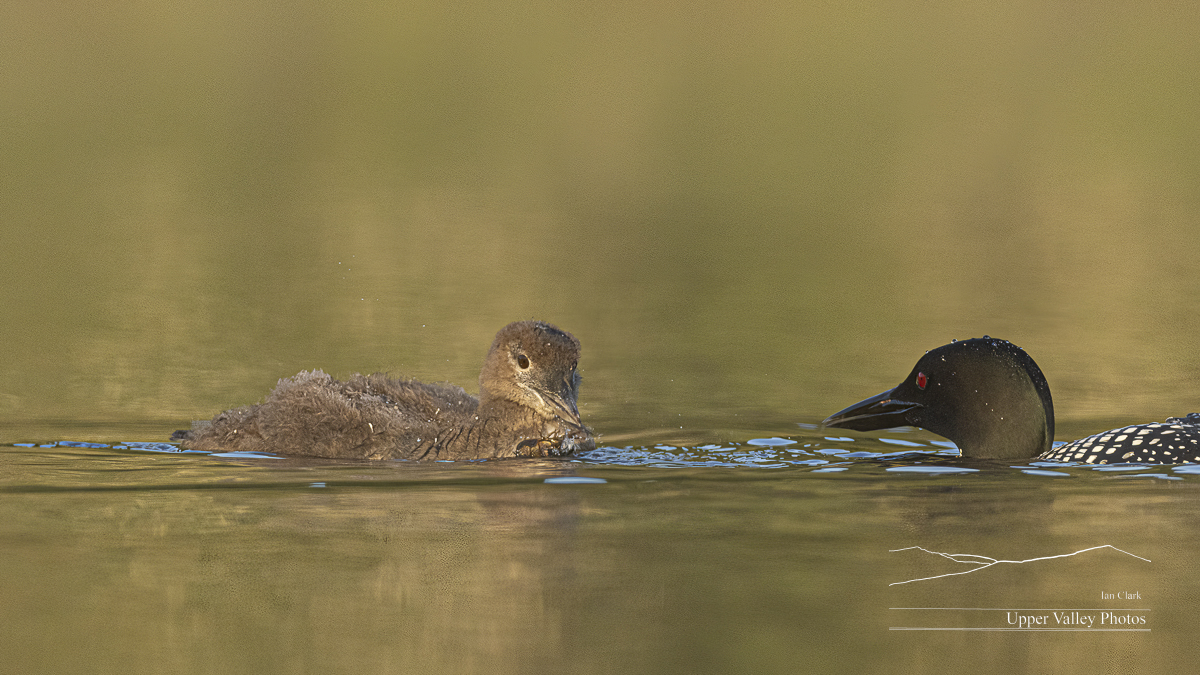
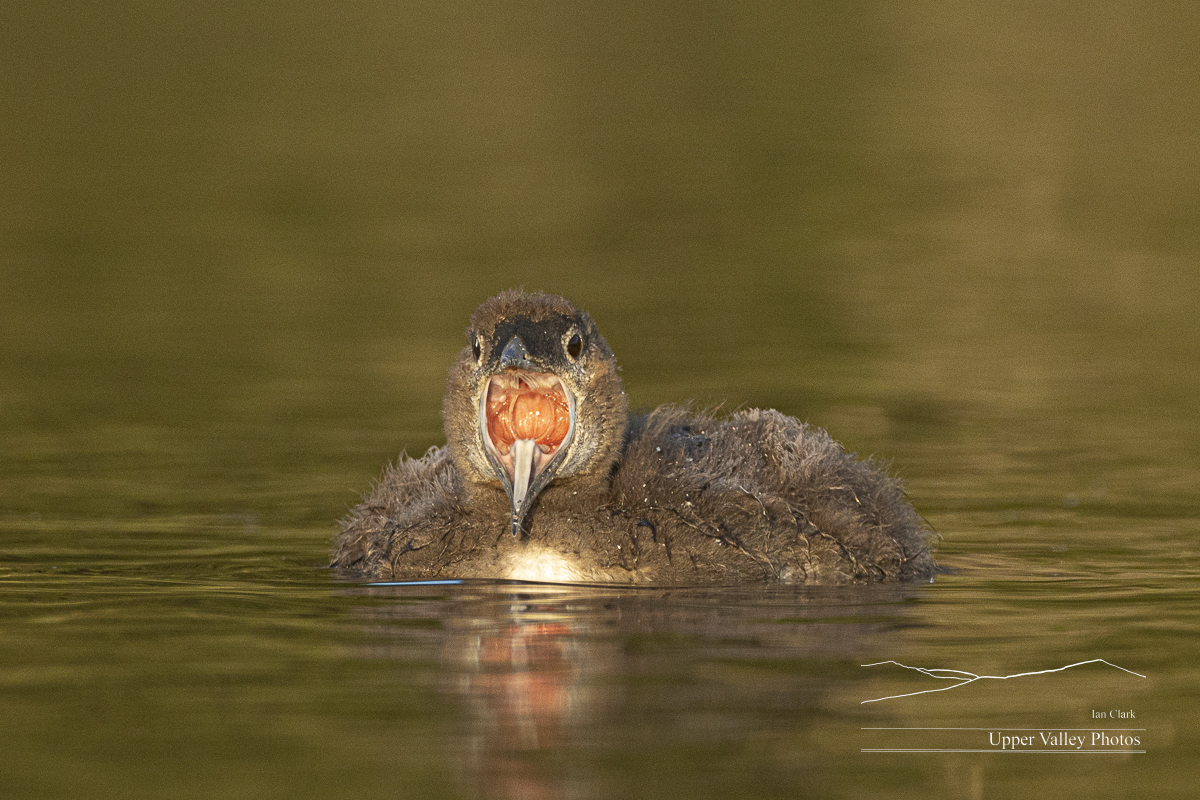
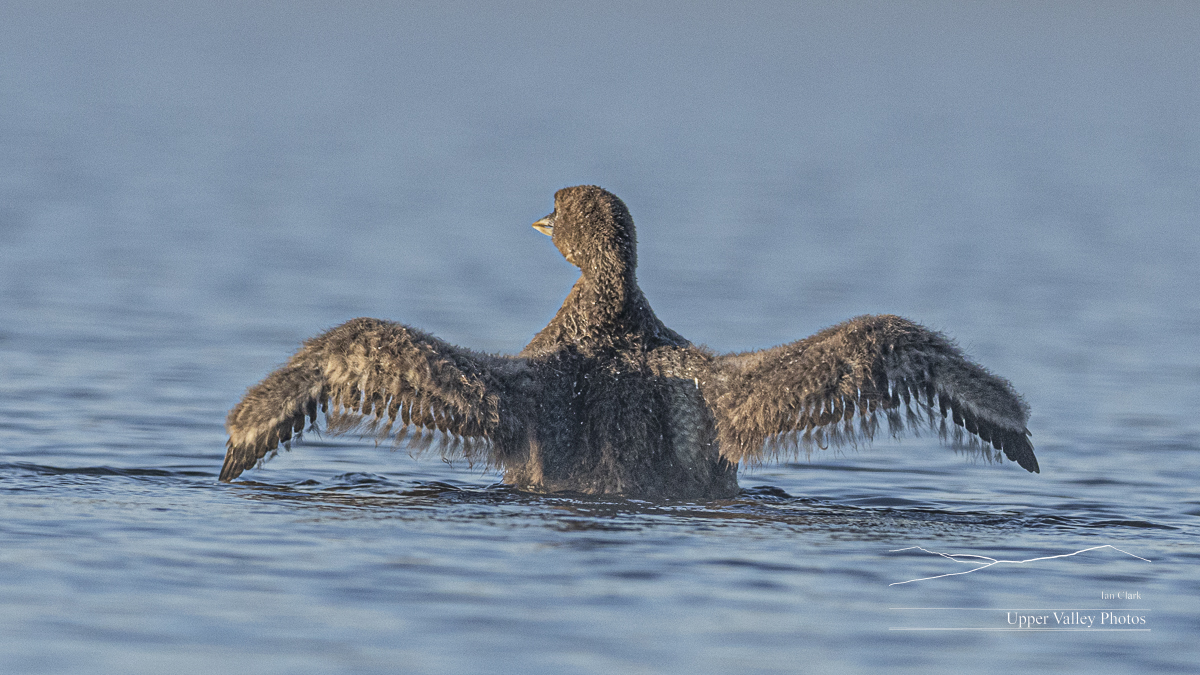
After feeding the chicks, dad headed up the pond out of sight. Shortly, I could hear yodeling. Soon, a pair of loons showed up – a wing rowing chase. They covered a lot of ground, but didn’t get close enough for photos. Some time after that, a loon flew overhead coming from that end of the pond. A second loon swam down the pond and rejoined mom who was tending the chicks.
The home team held the pond this time. But the fight probably isn’t over. One or both of the intruders are likely to return for several days or even a couple of weeks. Loons pay attention to how well a territory produces chicks. This pond has successfully raised two chicks a season for at least the last three years running. It would be a good territory to take over if the intruder can.
I’m on the road starting Thursday, I probably won’t have time to visit to see how the battle goes. I’ll get back up there to check as soon as I get back.
PS, we’re not supposed to interfere with nature. Don’t tell anyone I’m rooting for the home team.
Loon Chicks at Five Weeks
The rain let up enough for me to get out to check on all three loon families this week. And, I only got caught in a shower once.
The League of New Hampshire Craftsmen’s Fair is coming right up, August 5th through the 12th. I’ll be down there with lots of wildlife and other photos. Stop by booth 726 and say hello. All the details for the fair are here.
I visited the Middletons last night. They’re the ones that lost their chick. On the last visit, they showed signs they might be courting again. That was before the heavy rains and flooding. We were spared the worst of the flooding, but did get significant rain. A friend on the pond has kept me updated. She says the loons have had one or two intruders on the pond regularly. When I visited, the hummock where they’ve nested the last several years has been washed away, with no sign of another nesting spot. There was an intruder on the pond, with some circling and posturing but no outright fights.
This morning, the forecast was for rain and thundershowers. When I got up, there were stars visible. I headed out to check on the Westons. One of the adults and two chicks were foraging not far from the boat launch. The other adult soon came down the pond to join them. They were in shadows, I headed up the pond to see who else might be about. The rain held off until I got to the other end of the pond. I had a soggy retreat.
On Wednesday morning, the forecast was mixed and there were a couple stars between clouds when I got up. I took a chance and headed east to visit the Eastons.
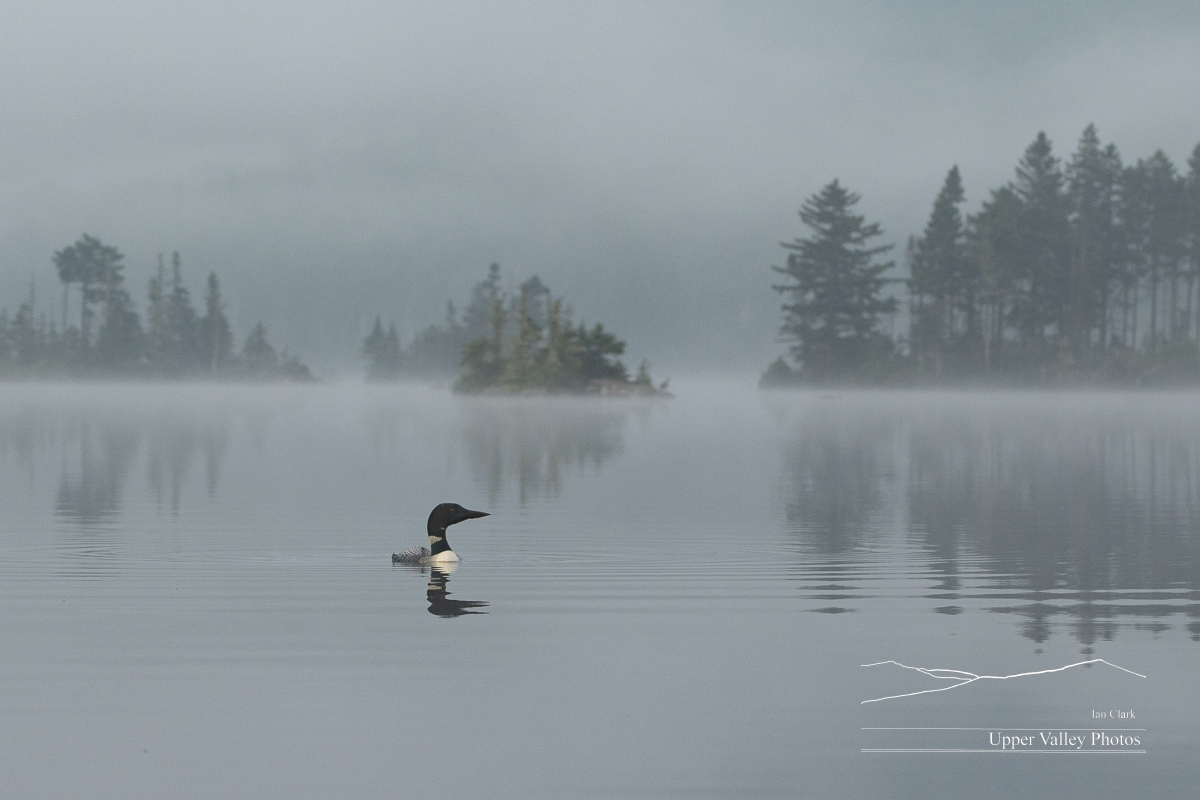

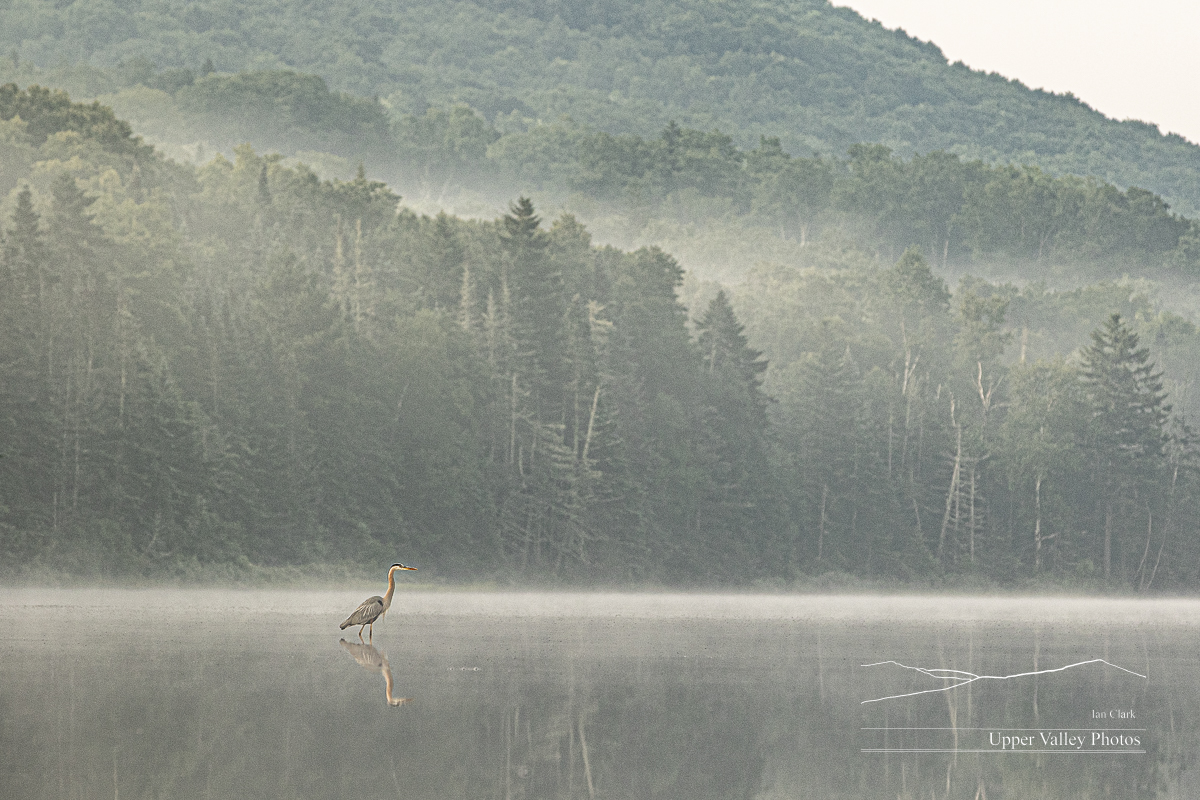
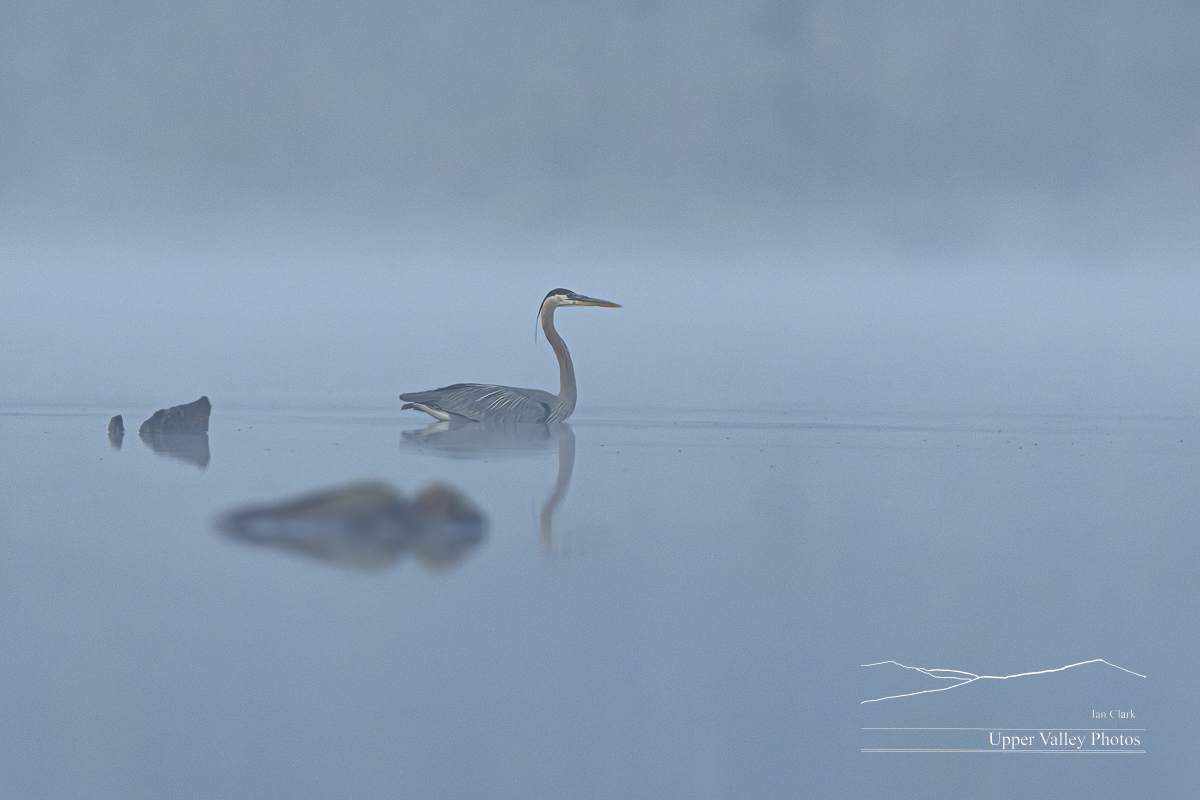
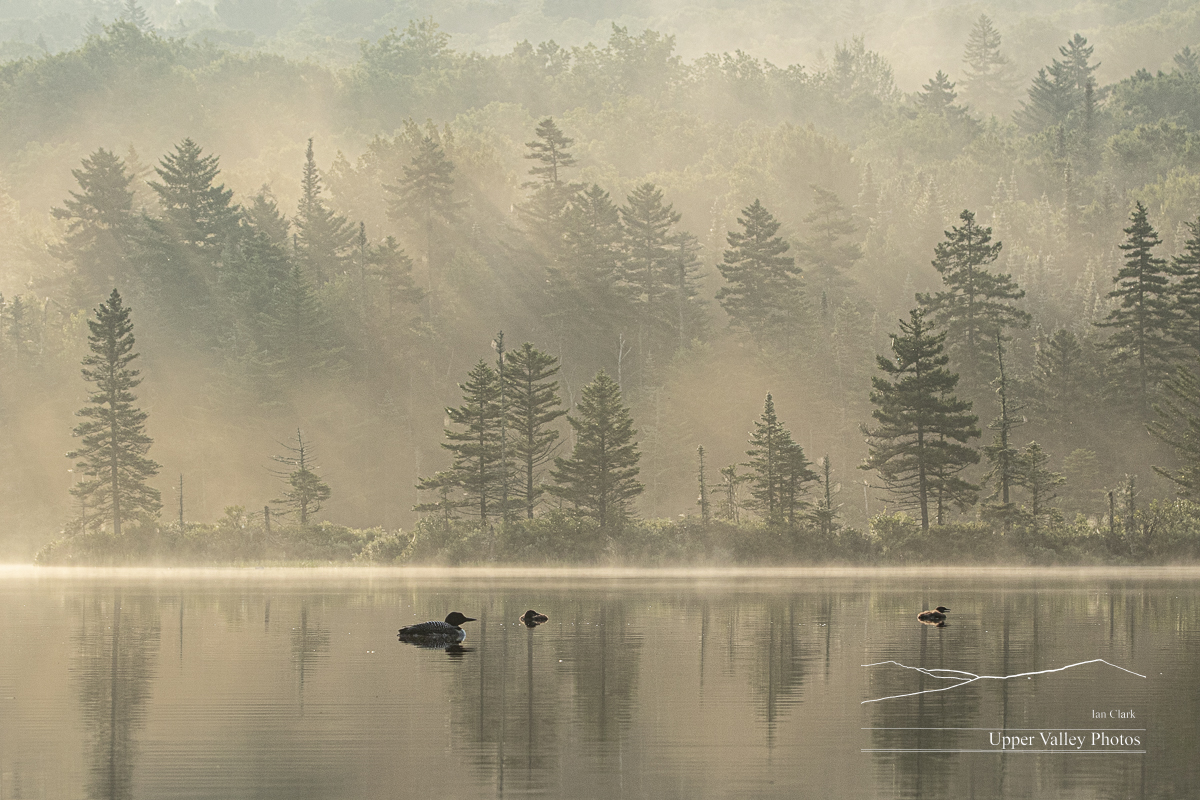
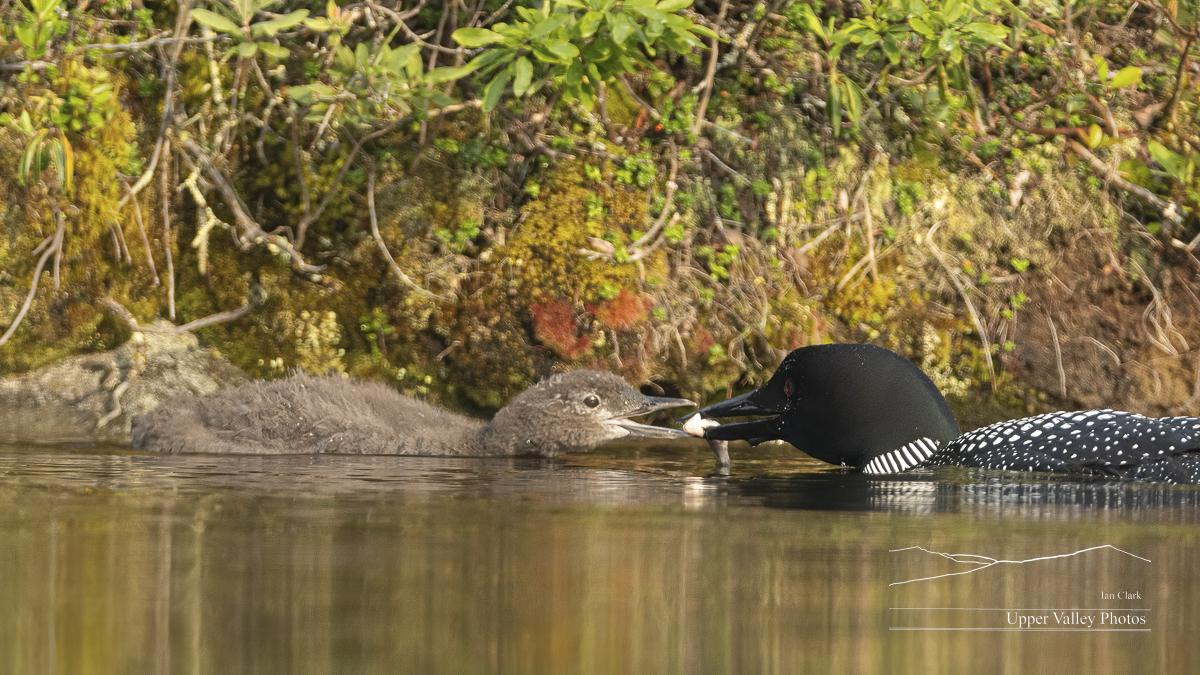
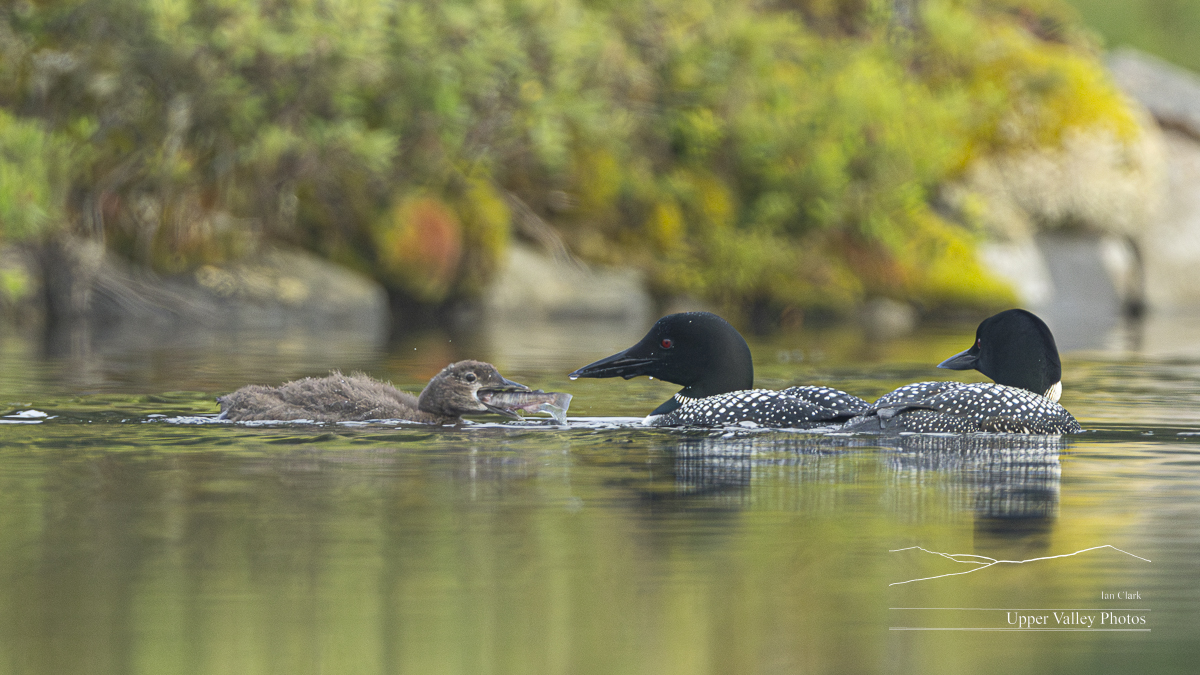
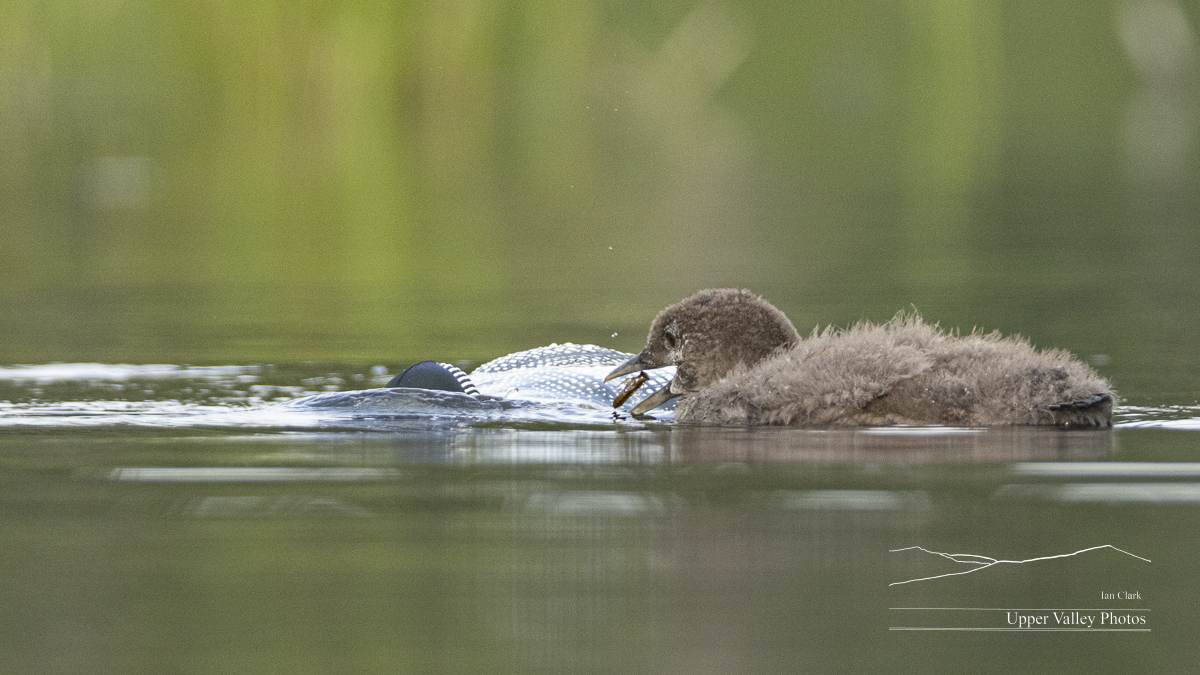

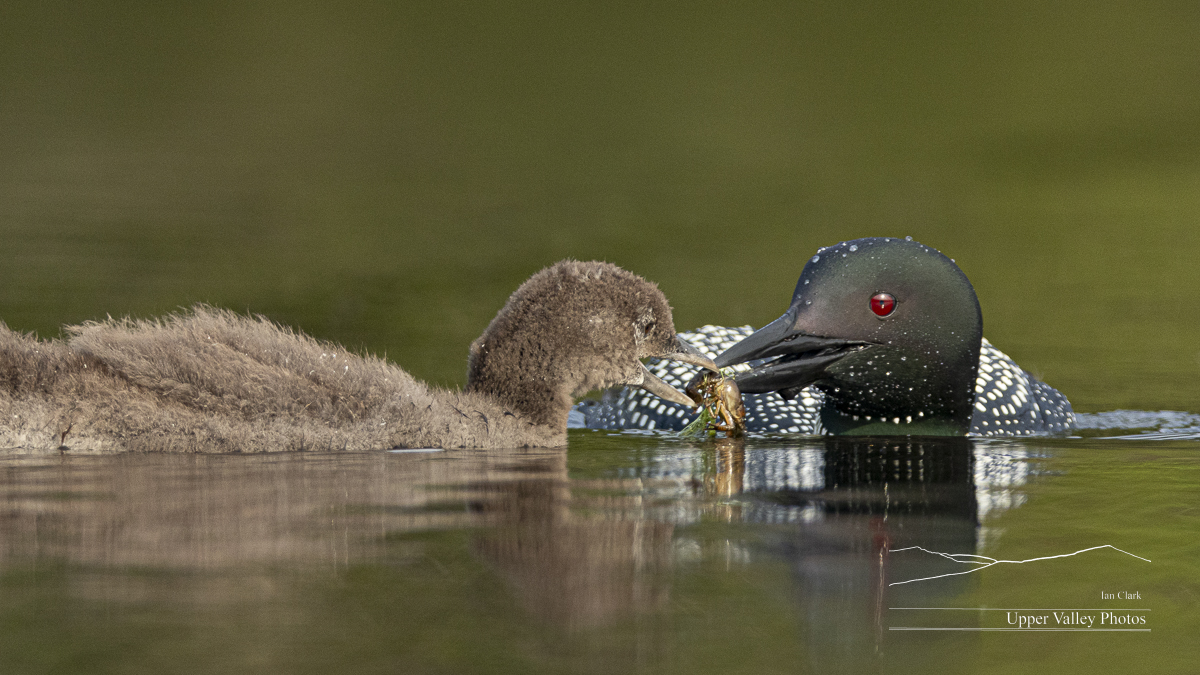
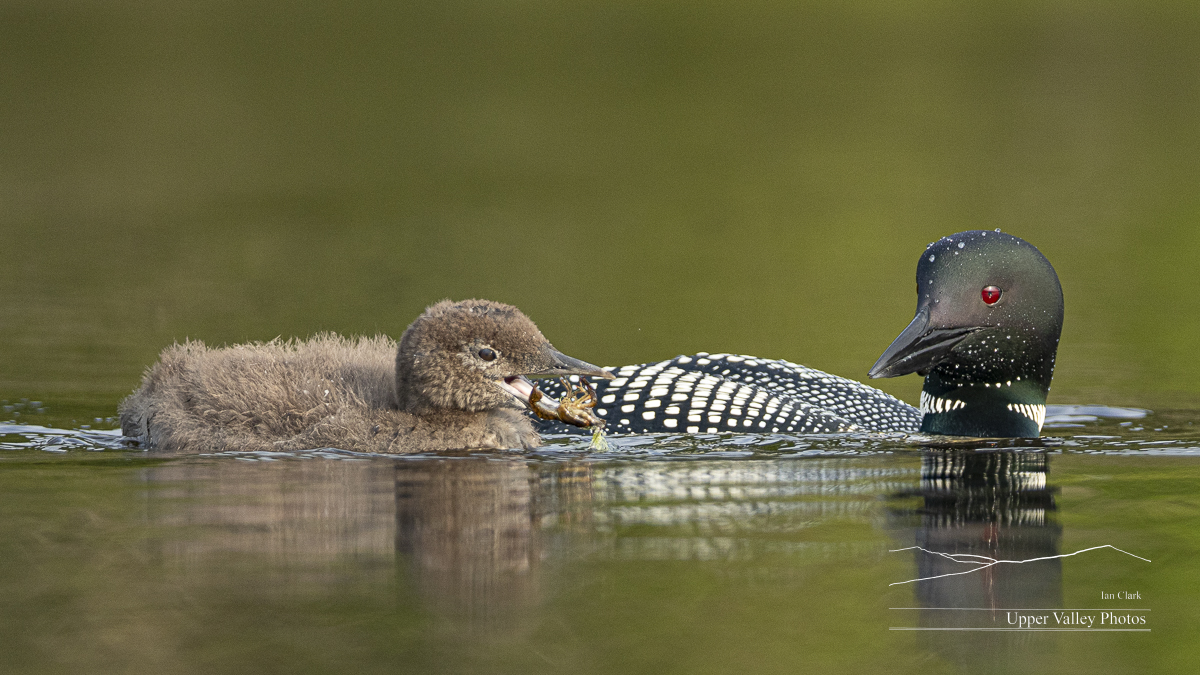
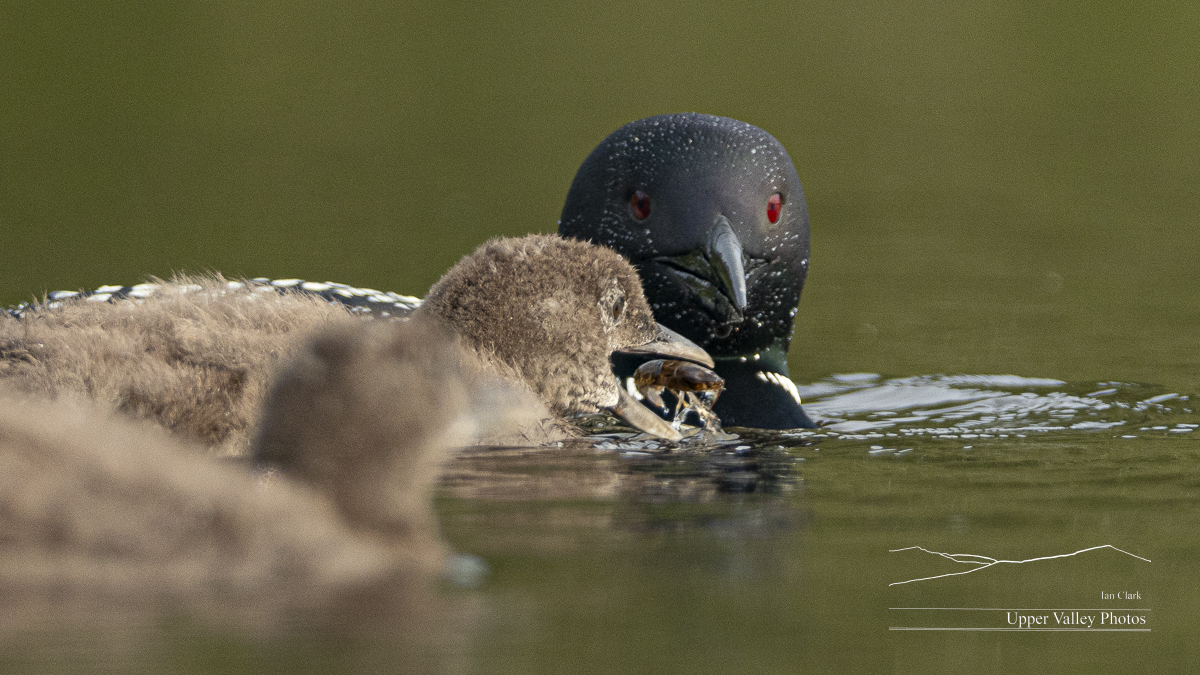
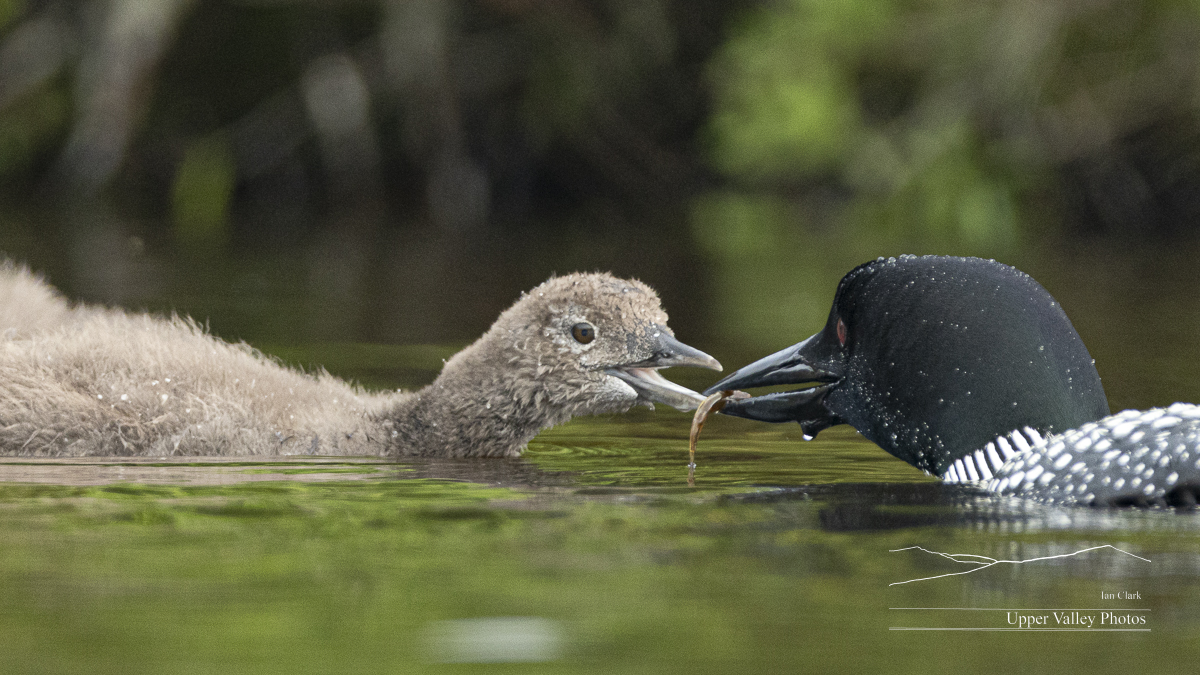

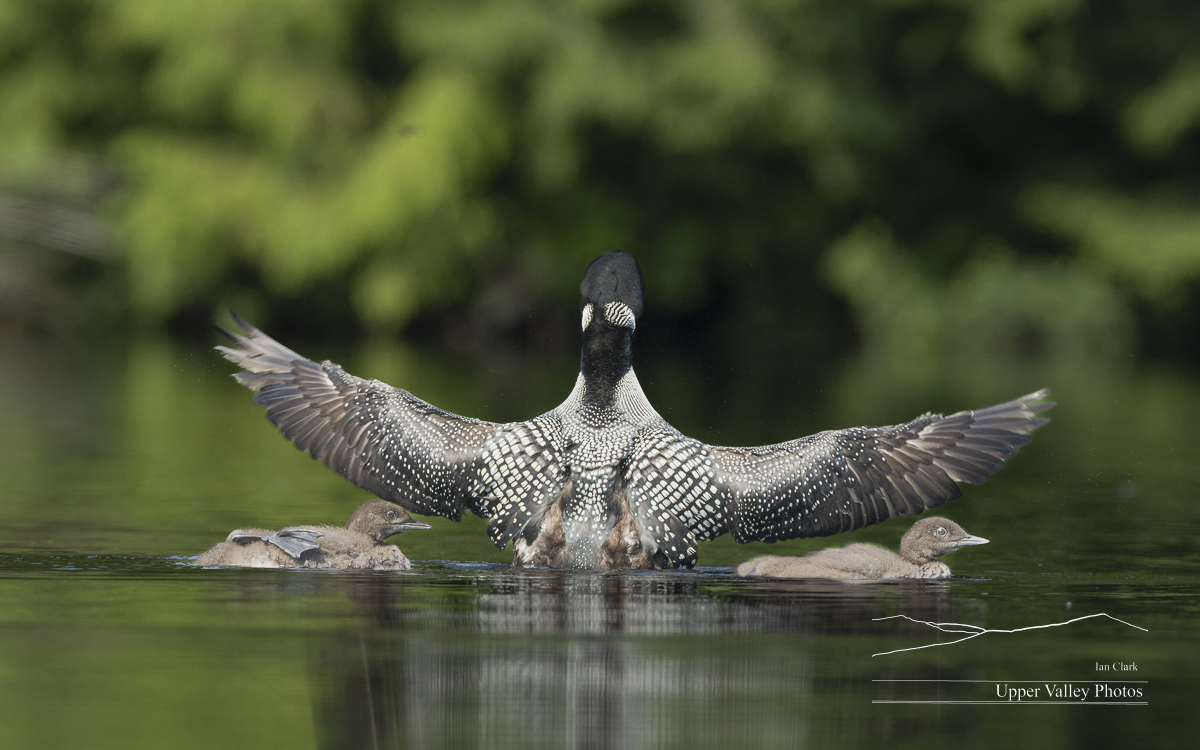
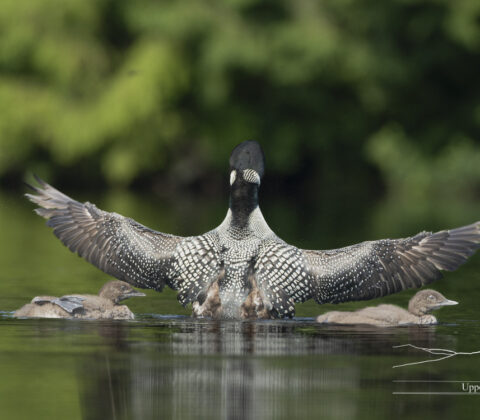
Checking in on the Loon Families
Bad weather and too many chores kept me from checking on the loons for a time. When the weather cleared this week, I was quick to hit the water.
I’ll be down at the League of New Hampshire Craftsmen’s 90th annual Fair in Sunapee, NH, August 5th to the 13th. Stop by to have a look. All the Fair details here.
Let’s start with a few pix of the Eastons from the day after my last post. The chicks are two and three days old. This is the pair where dad is banded, allowing me to tell them apart – sometimes.

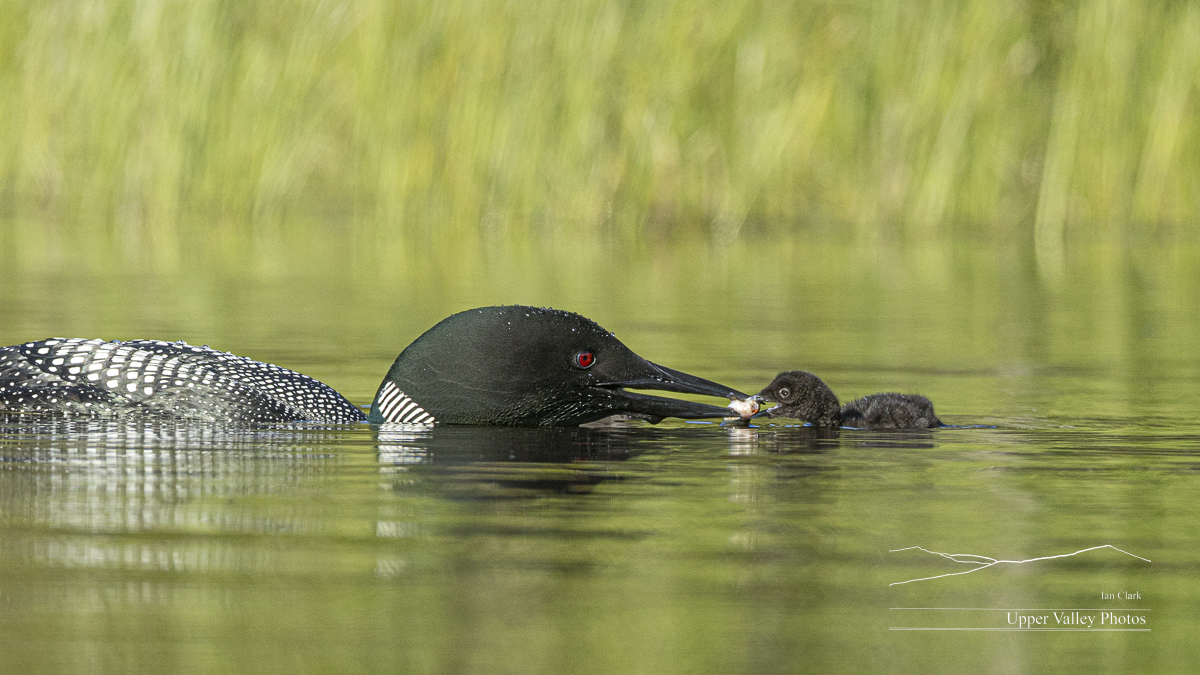

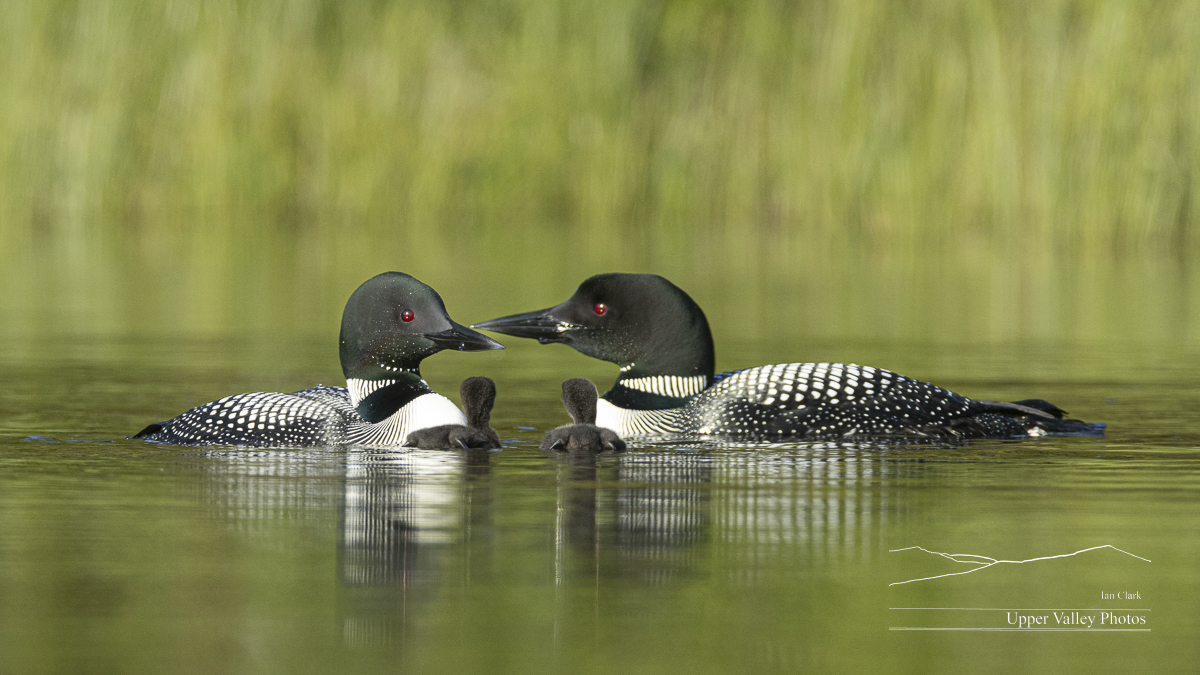
That evening, I made it over to check on the Middletons.
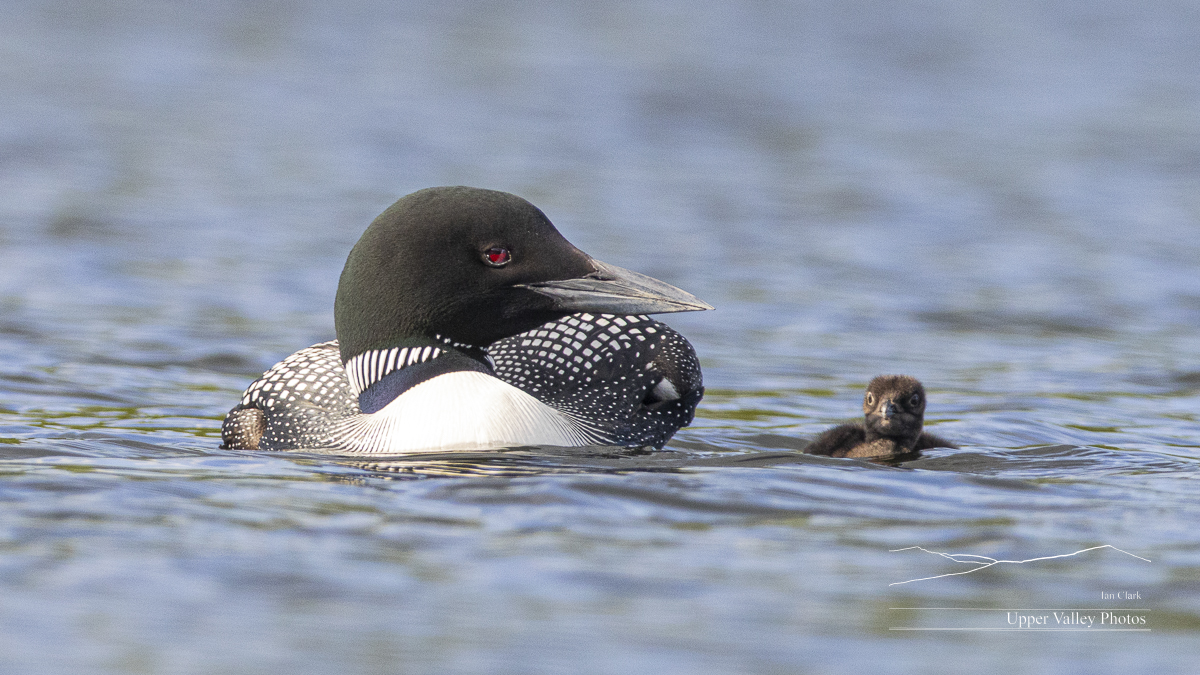
The next morning, I returned to visit the Eastons. They spent most of their morning feeding the chicks.
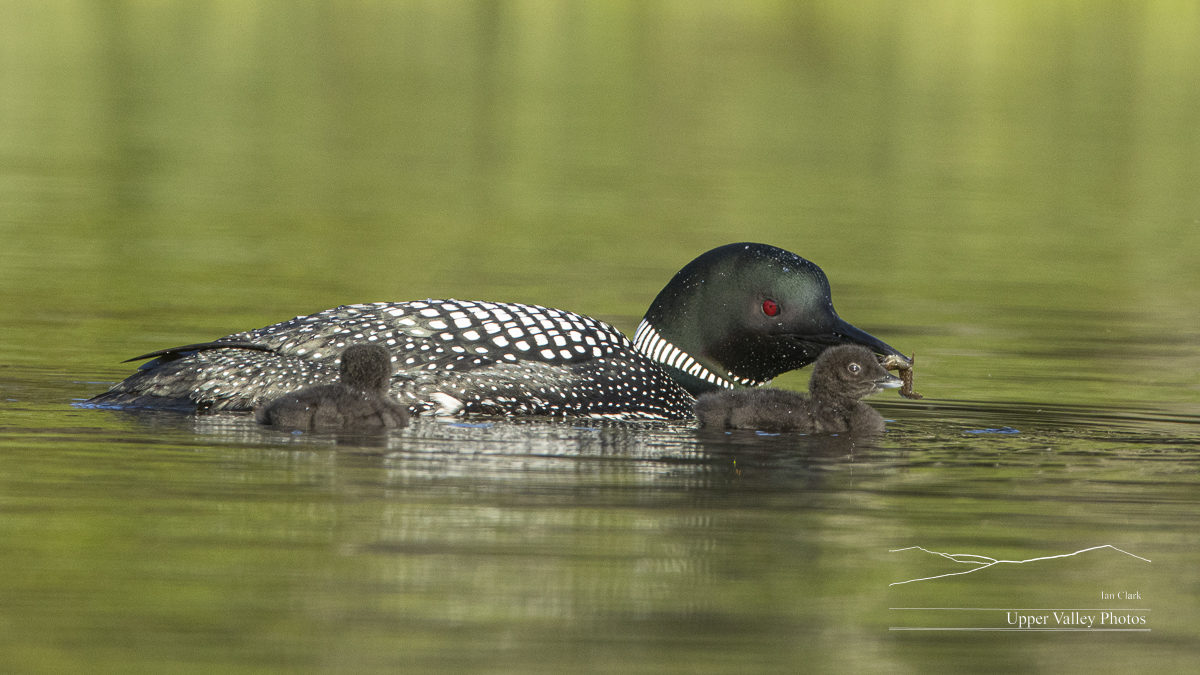
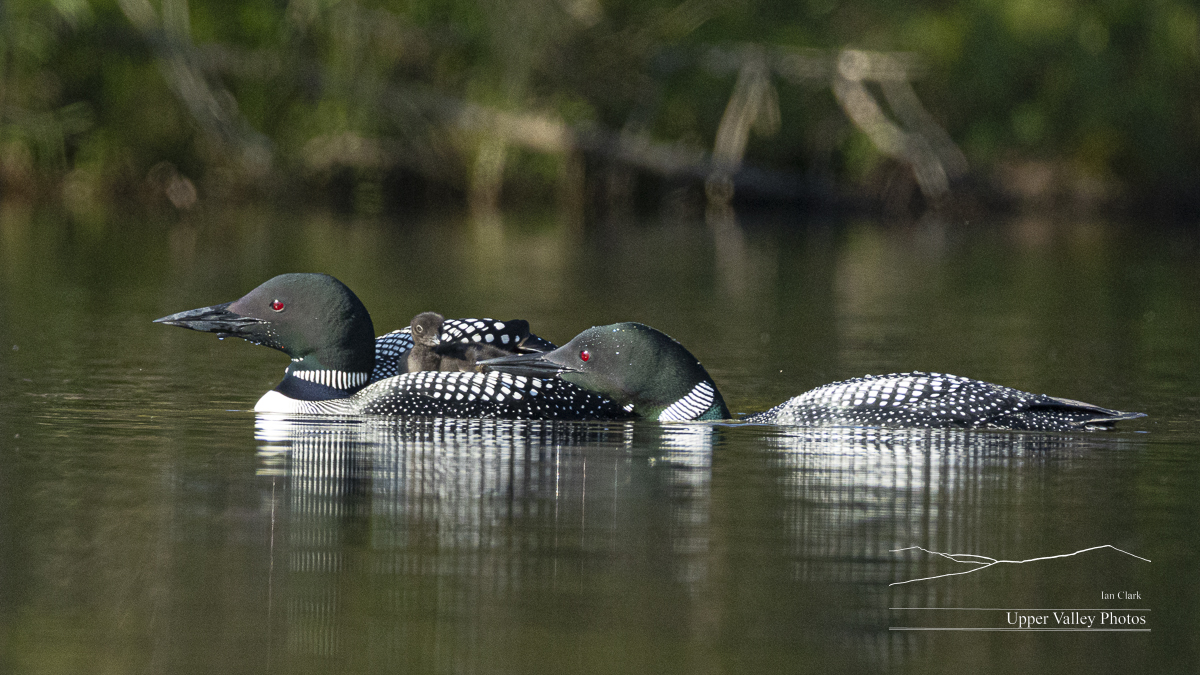
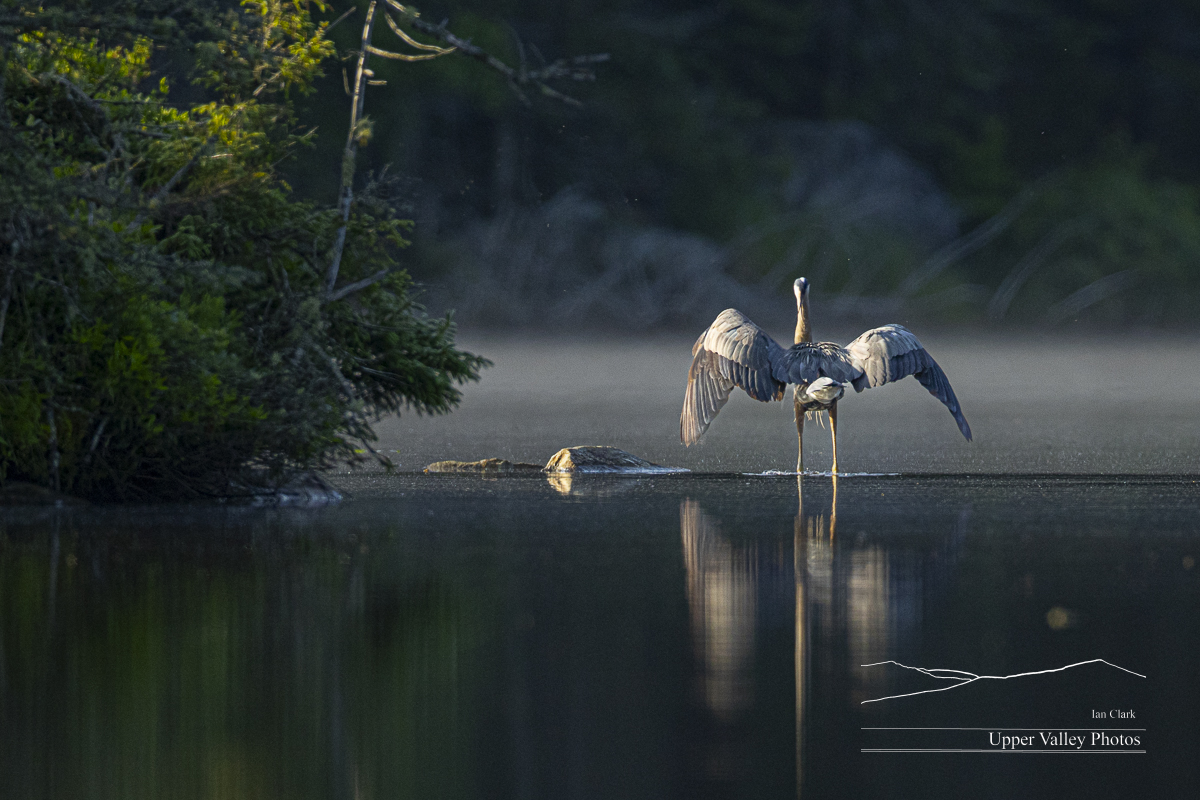
I didn’t make it back out until July 5th, when I again visited the Eastons.
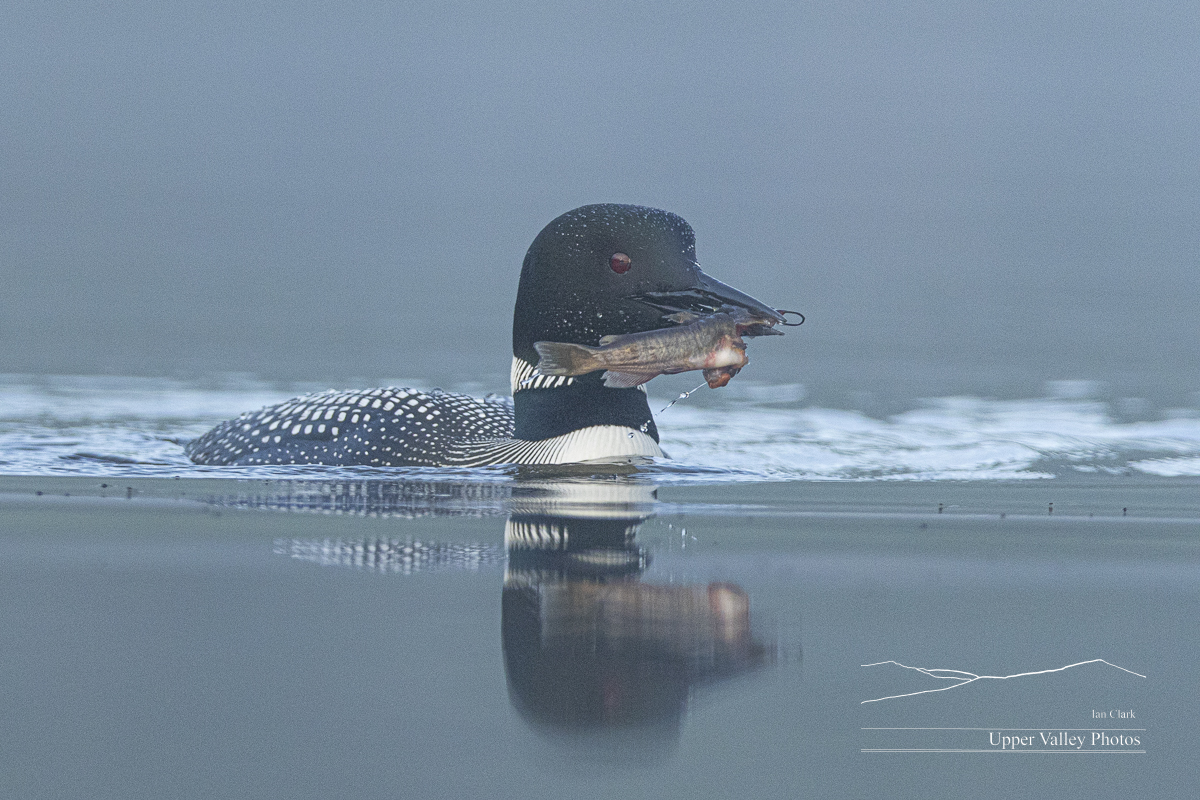
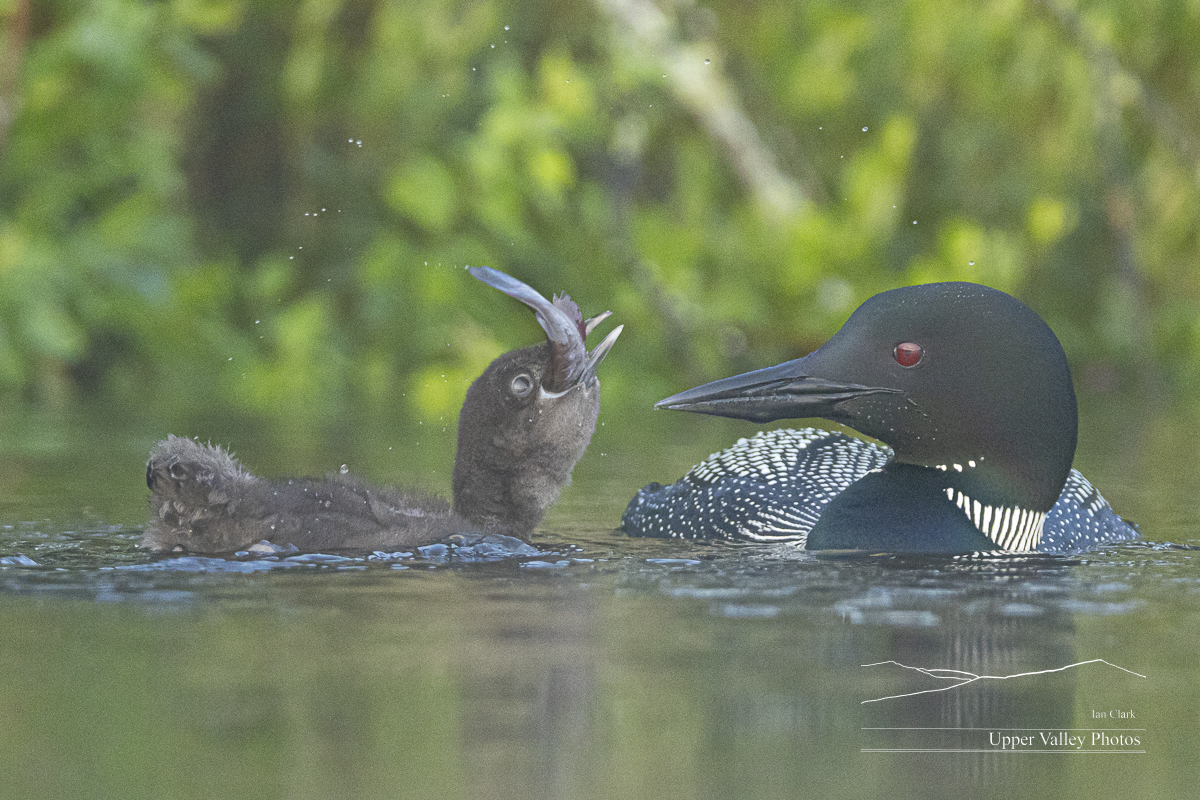


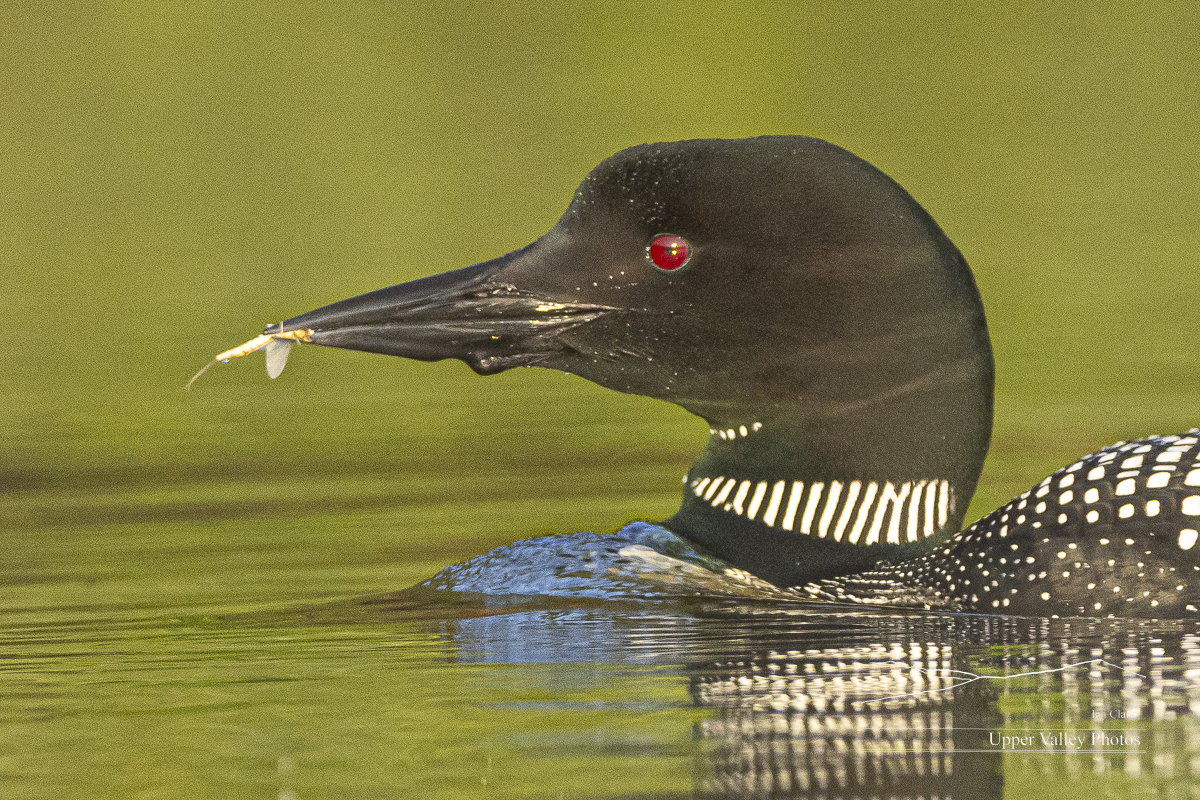
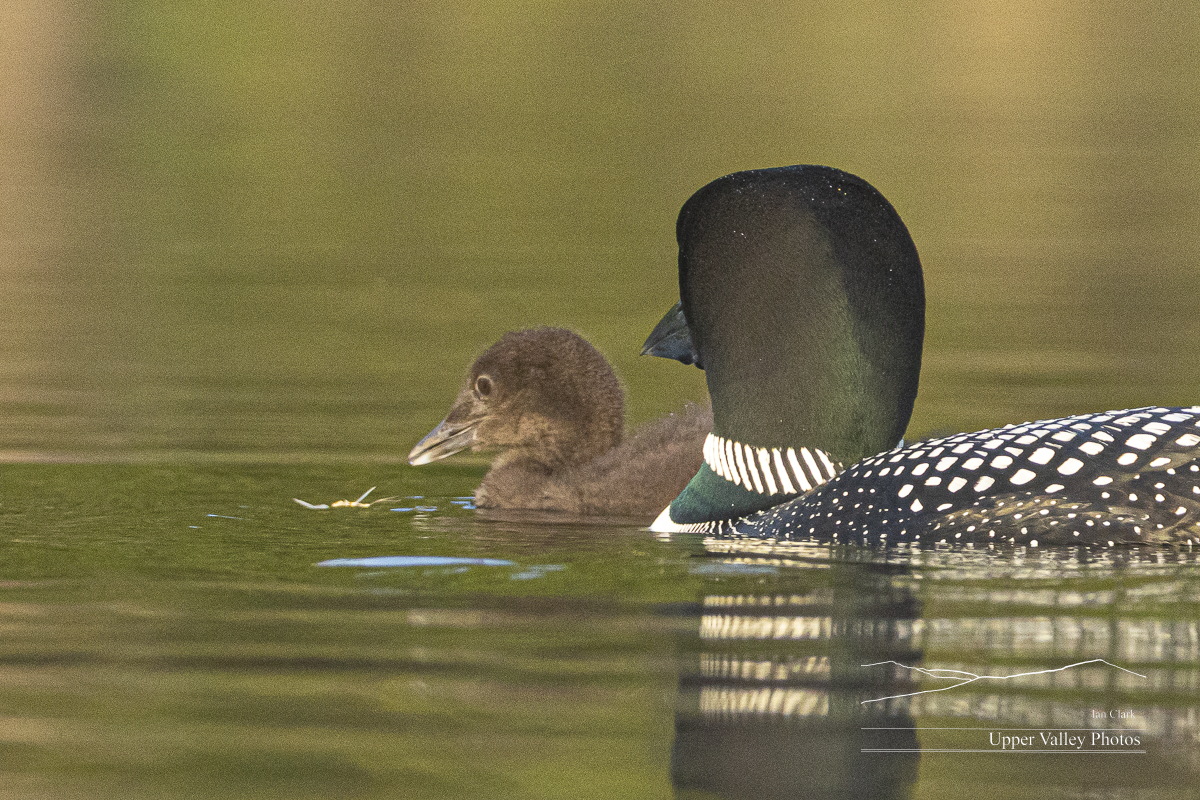
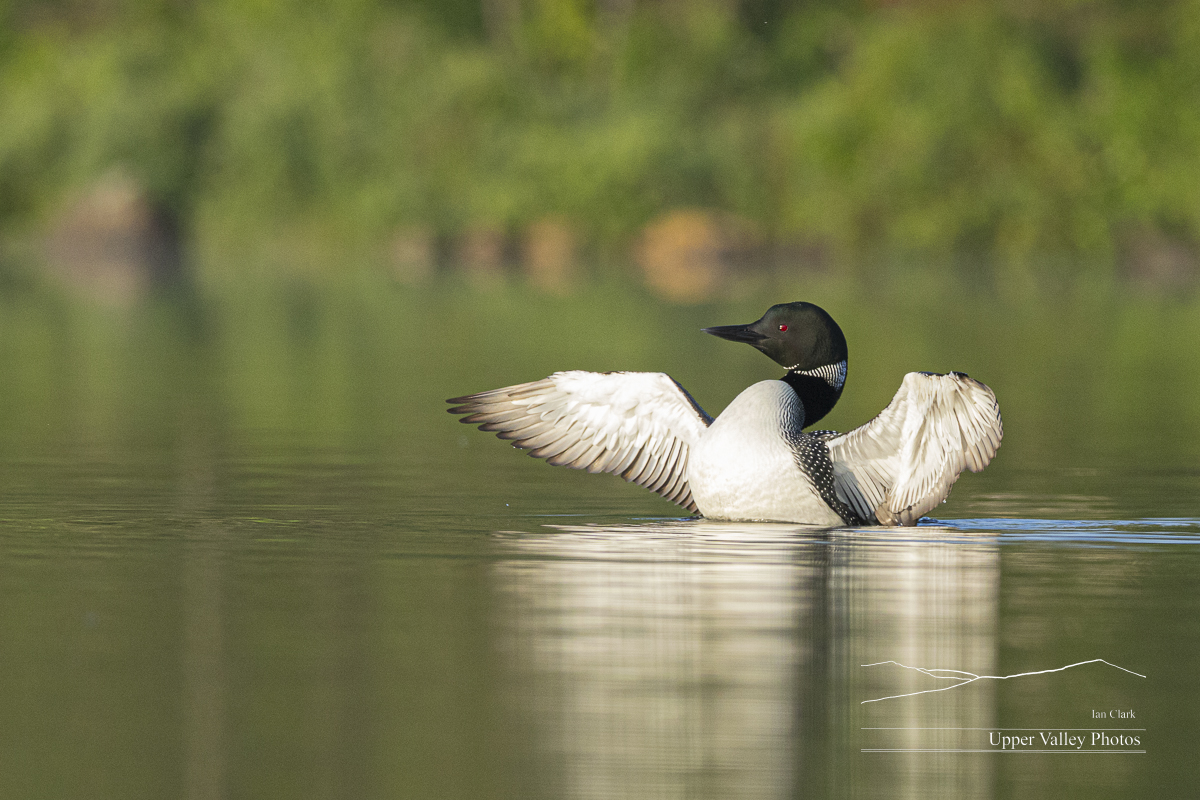
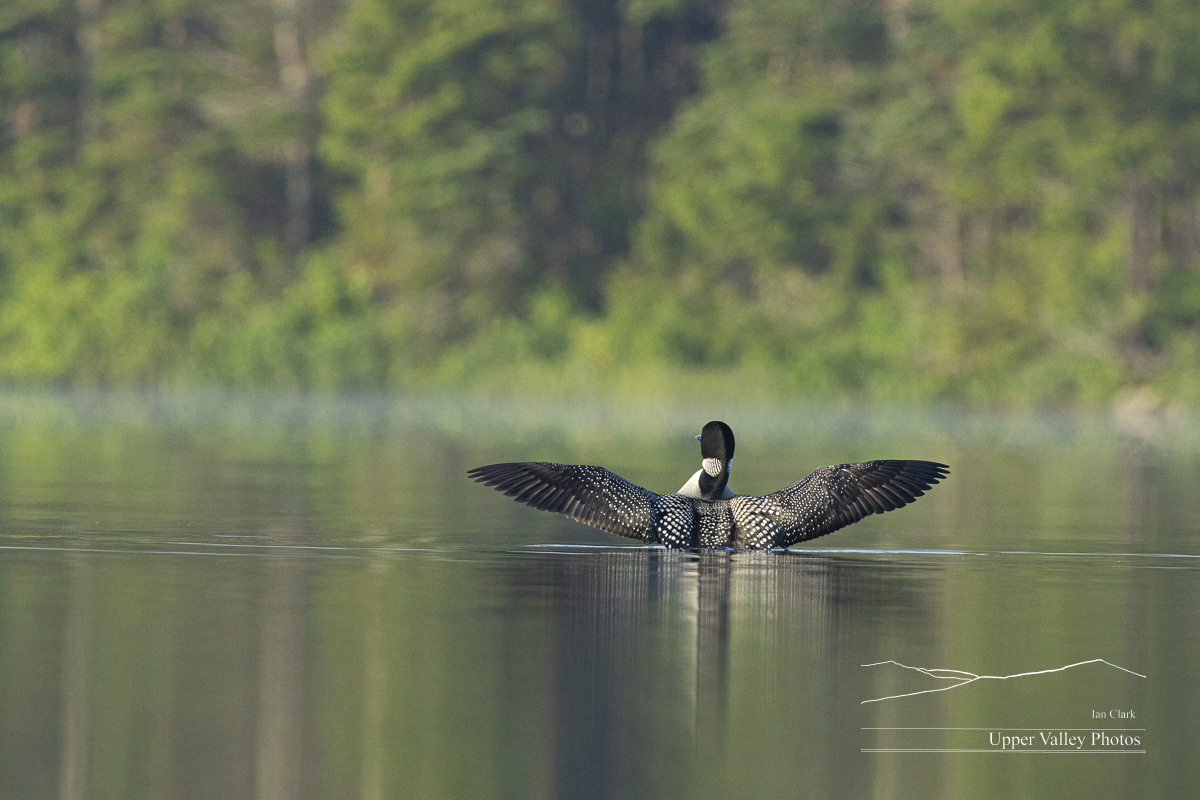
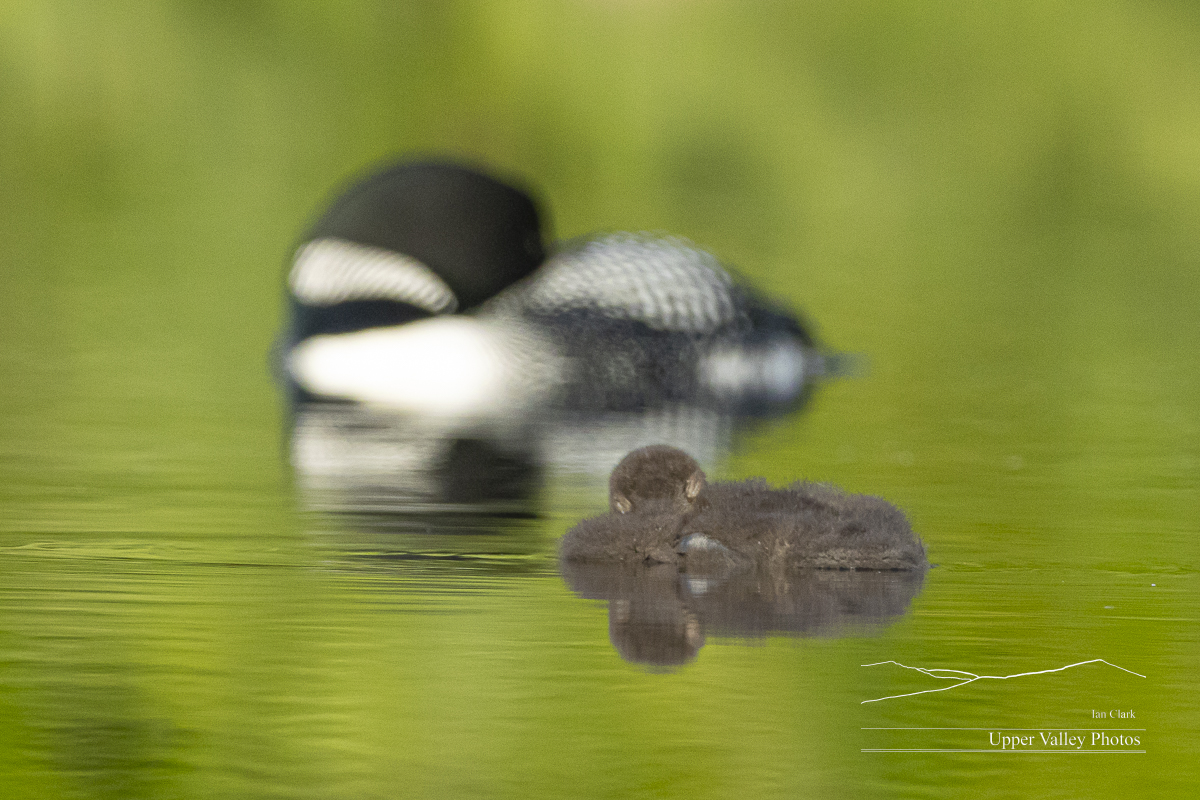
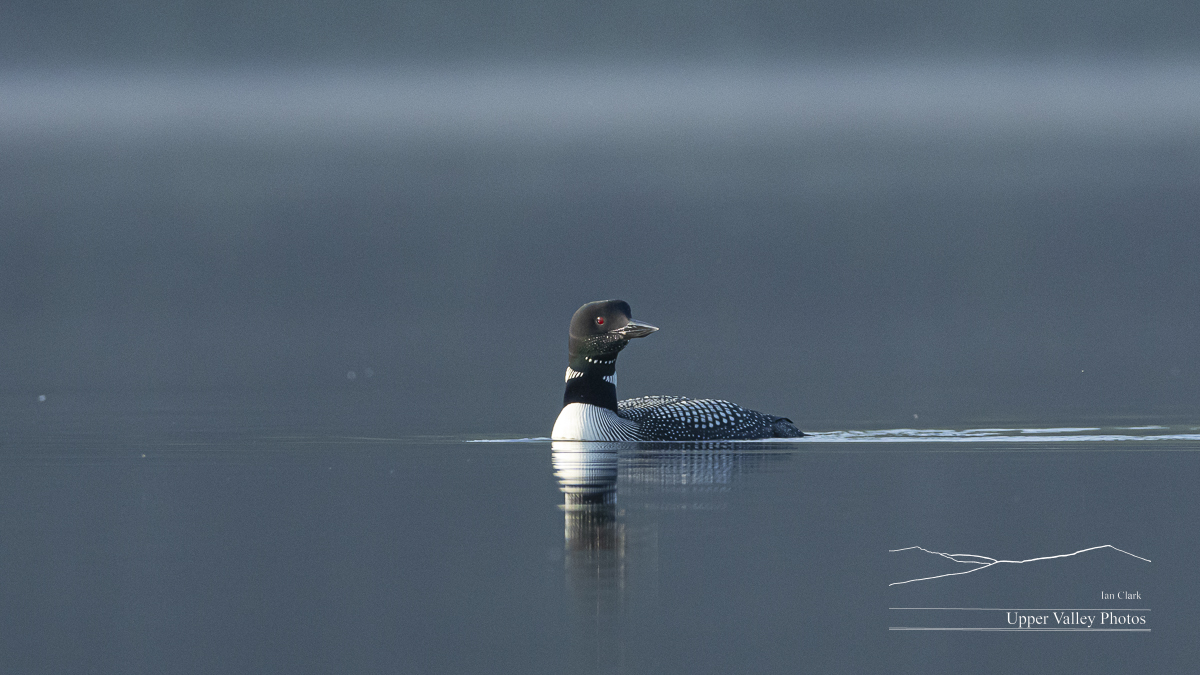

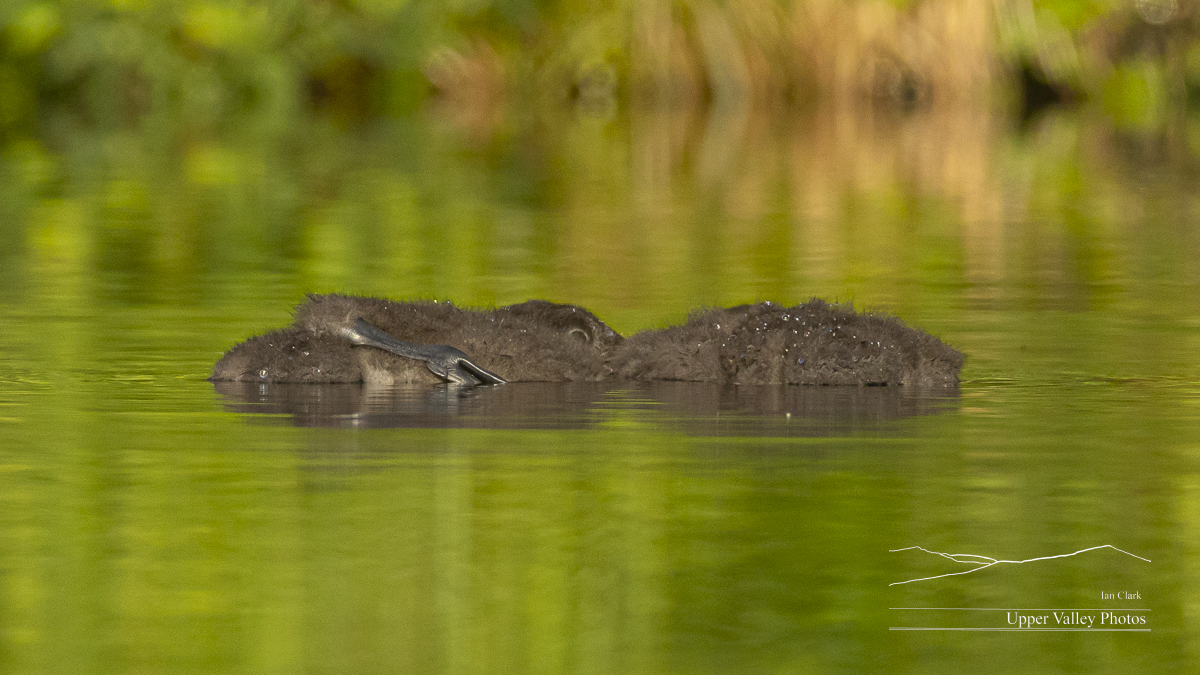
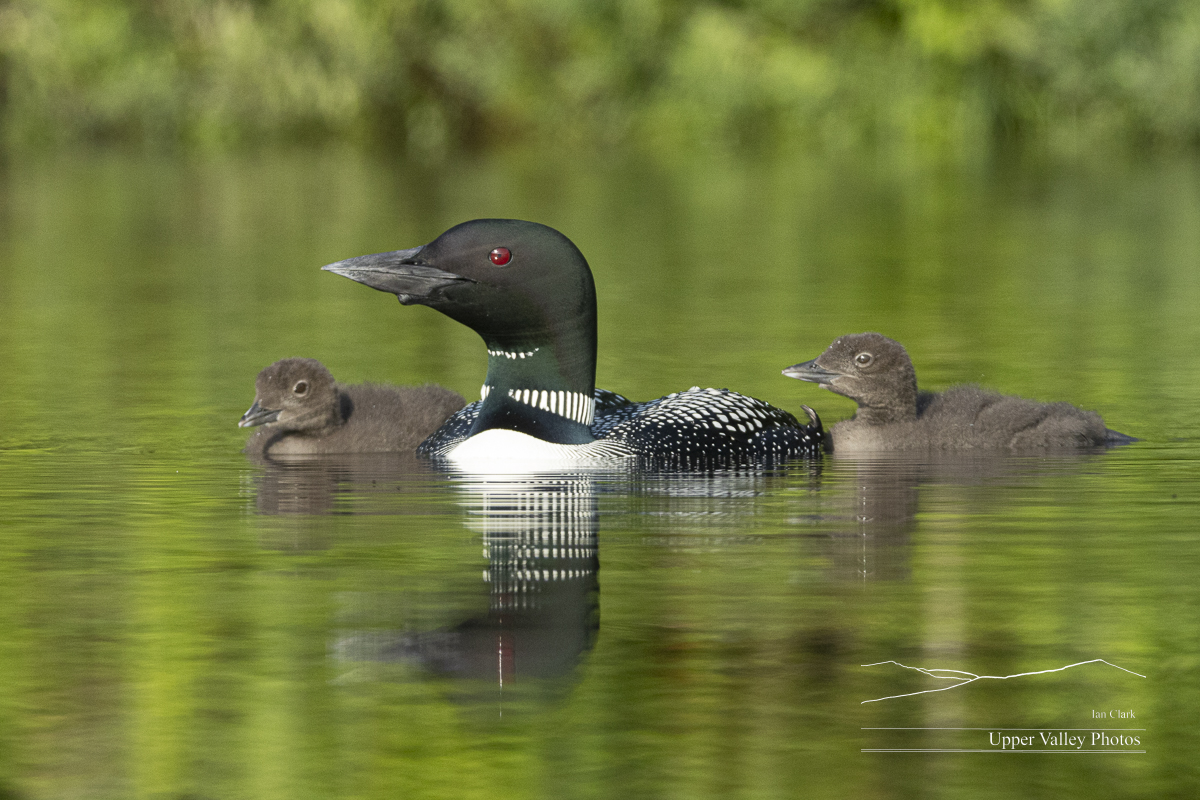
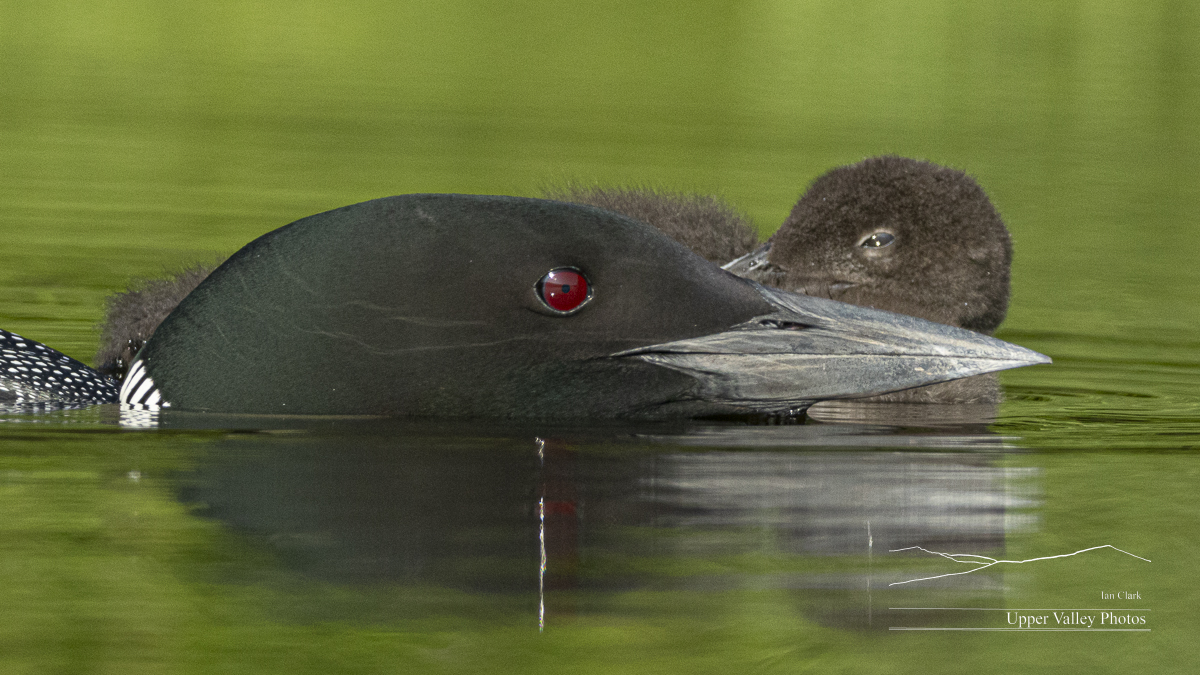

The morning of the sixth, I headed west to check on the Westons. Their pond has steep hills on both sides of the southern end of the pond. The family spent most of the morning foraging in deep shadows along the side of the pond. I headed out to see who else was about.
The usual suspects were out and about, kingbirds, red-winged blackbirds, lots of warblers seen not heard. But the best find was a trio of tree swallow fledglings and their parents feeding them.
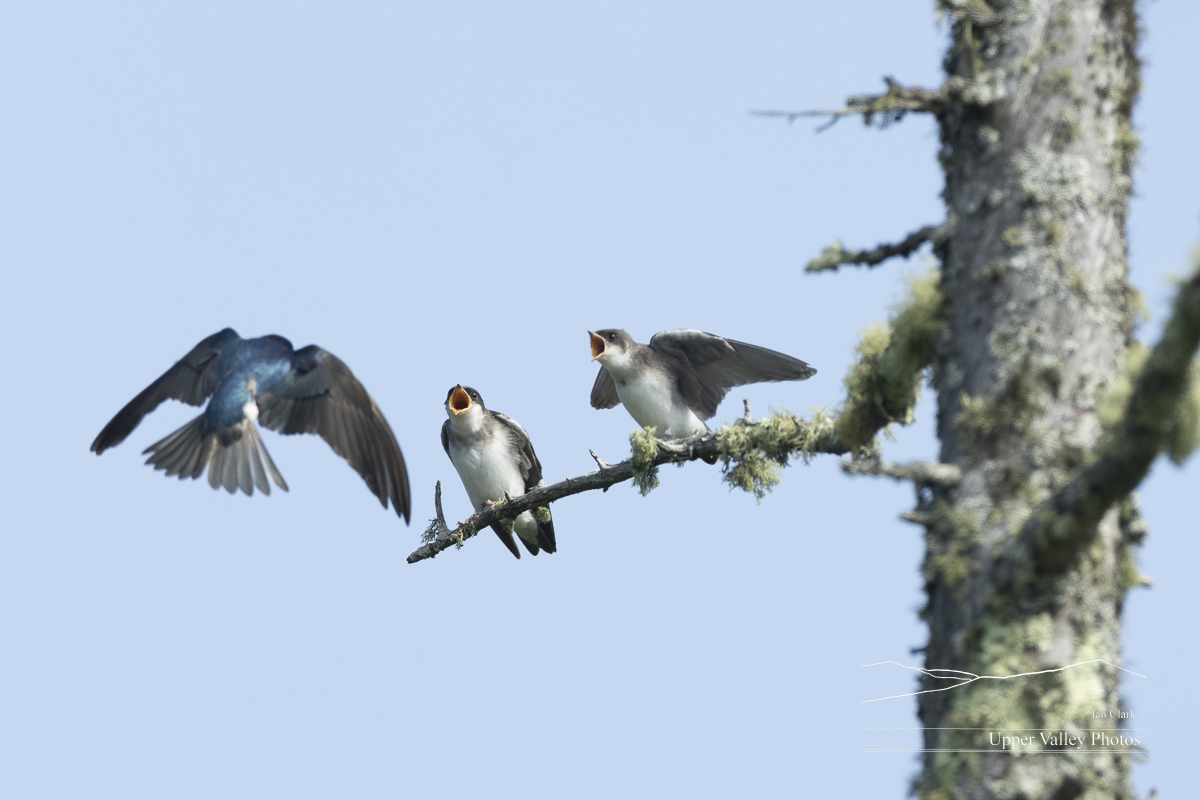
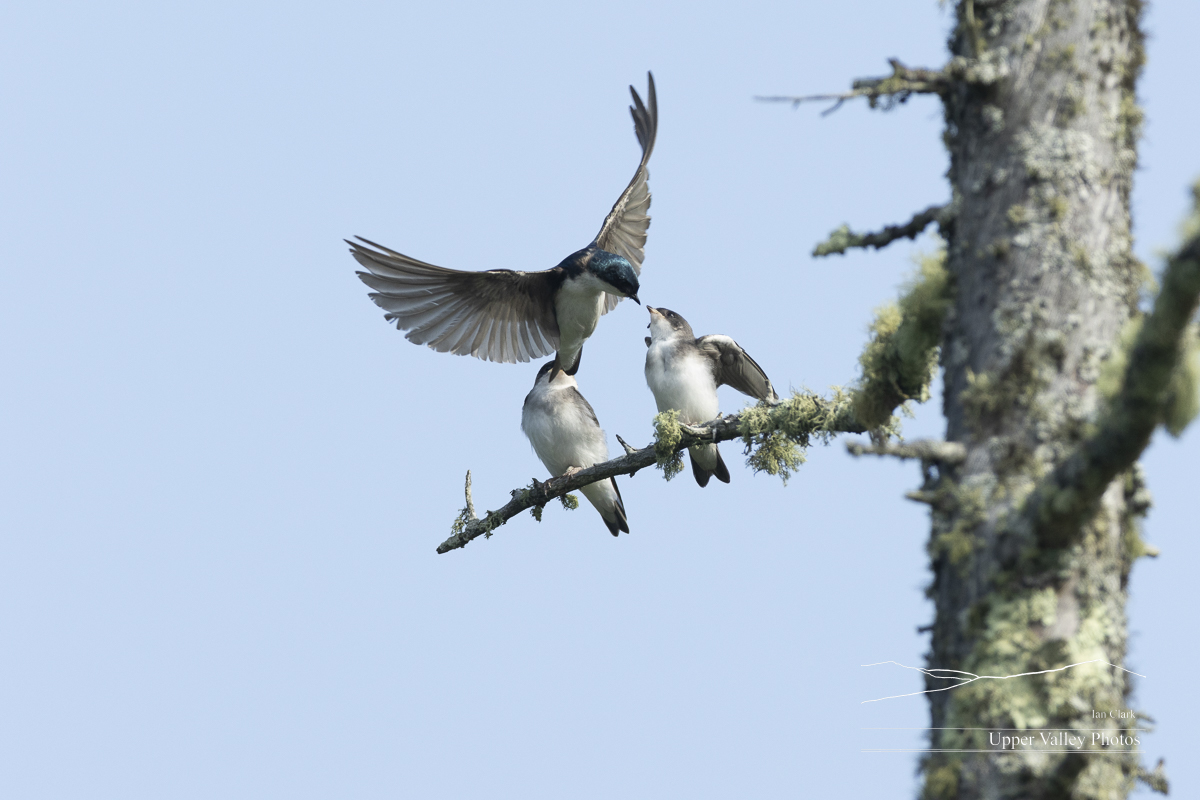
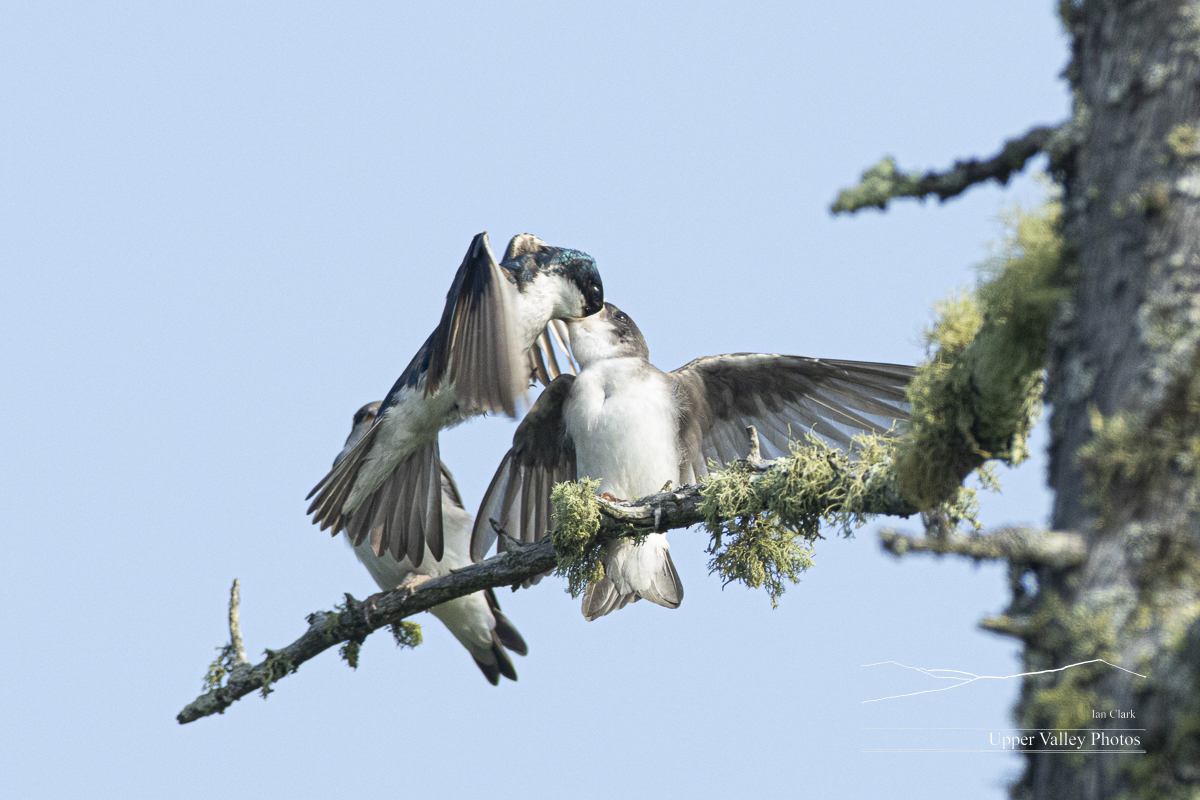
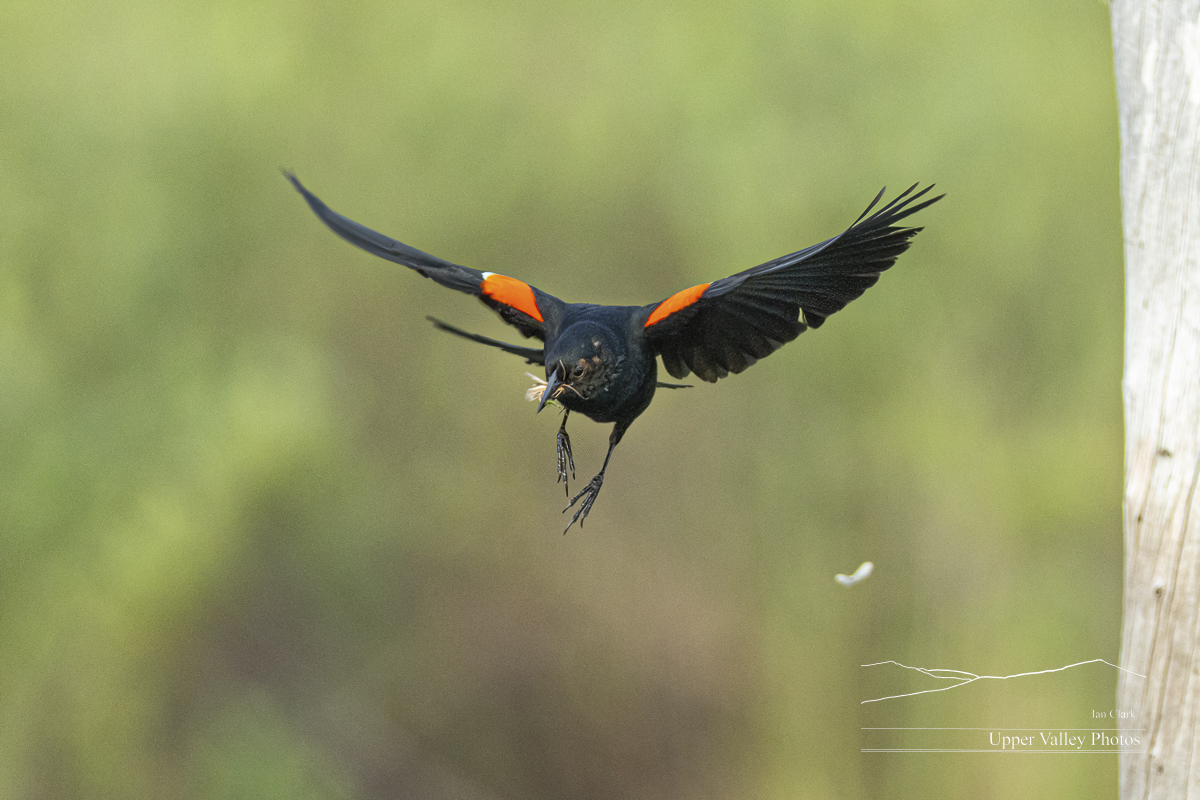

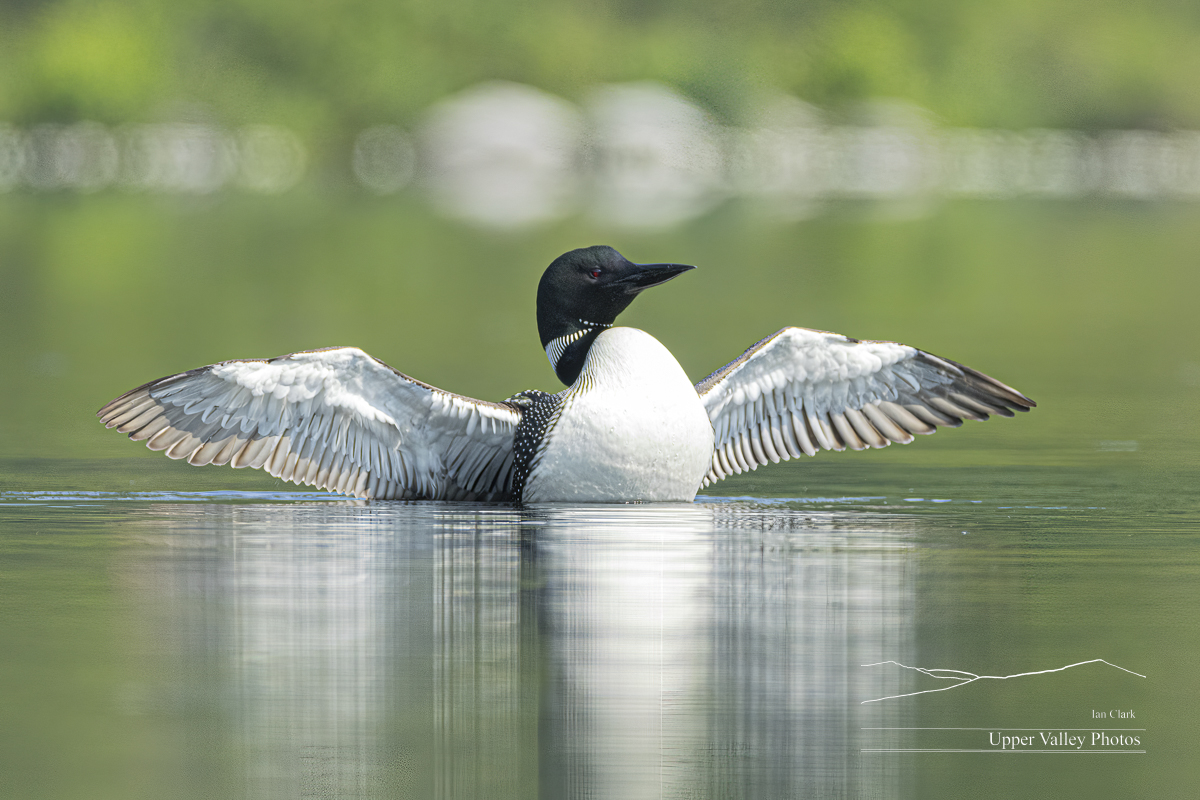
Yesterday, I visited the Middletons. There’s sad news, they’ve been fighting with an intruder or two most days. Their chick has disappeared. We don’t know what happened to it, but the intruders are suspects. As well as a host of other dangers from fish and snapping turtles to otters and eagles.
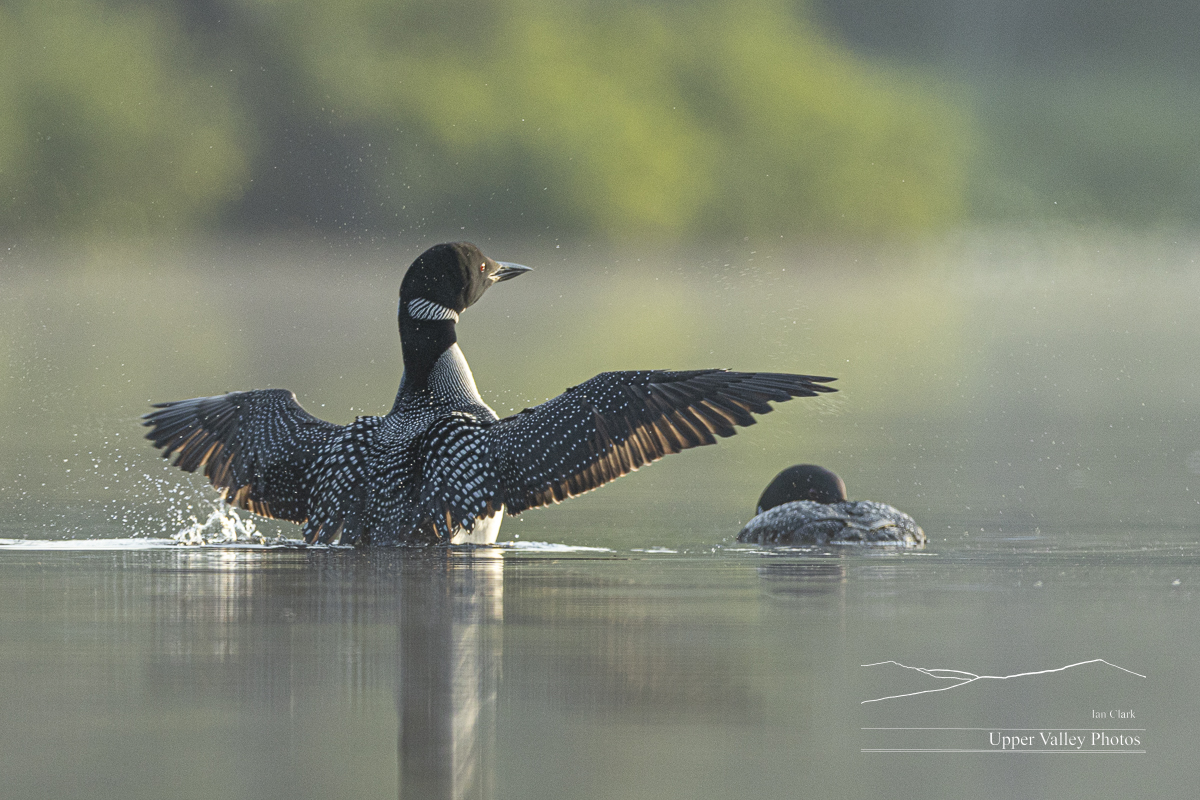



After their nap, the loons swam down to the cove where I’ve found them mating several times in the past. They might have been courting. They explored the beaches were they mate, hooting softly to each other. Then they did a brief courtship display, swimming swiftly side by side and diving together. They didn’t mate, but I’m hopeful they’ll try again.
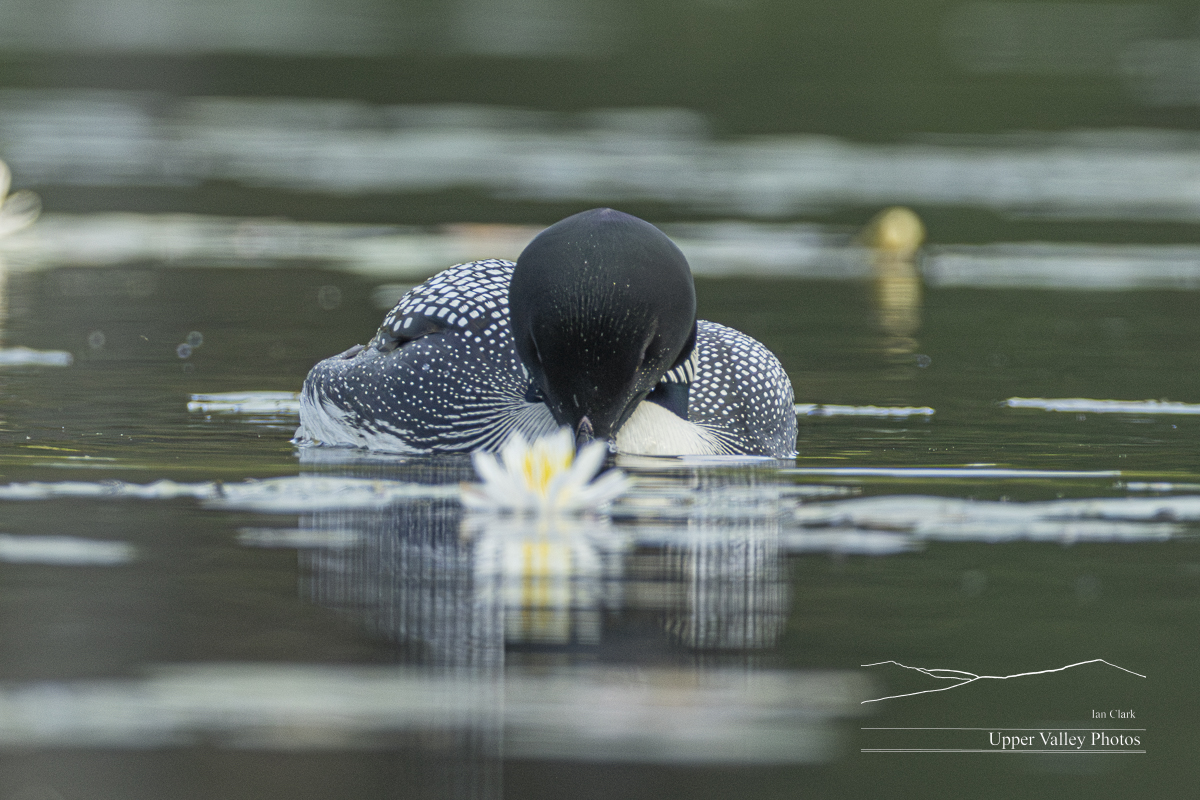
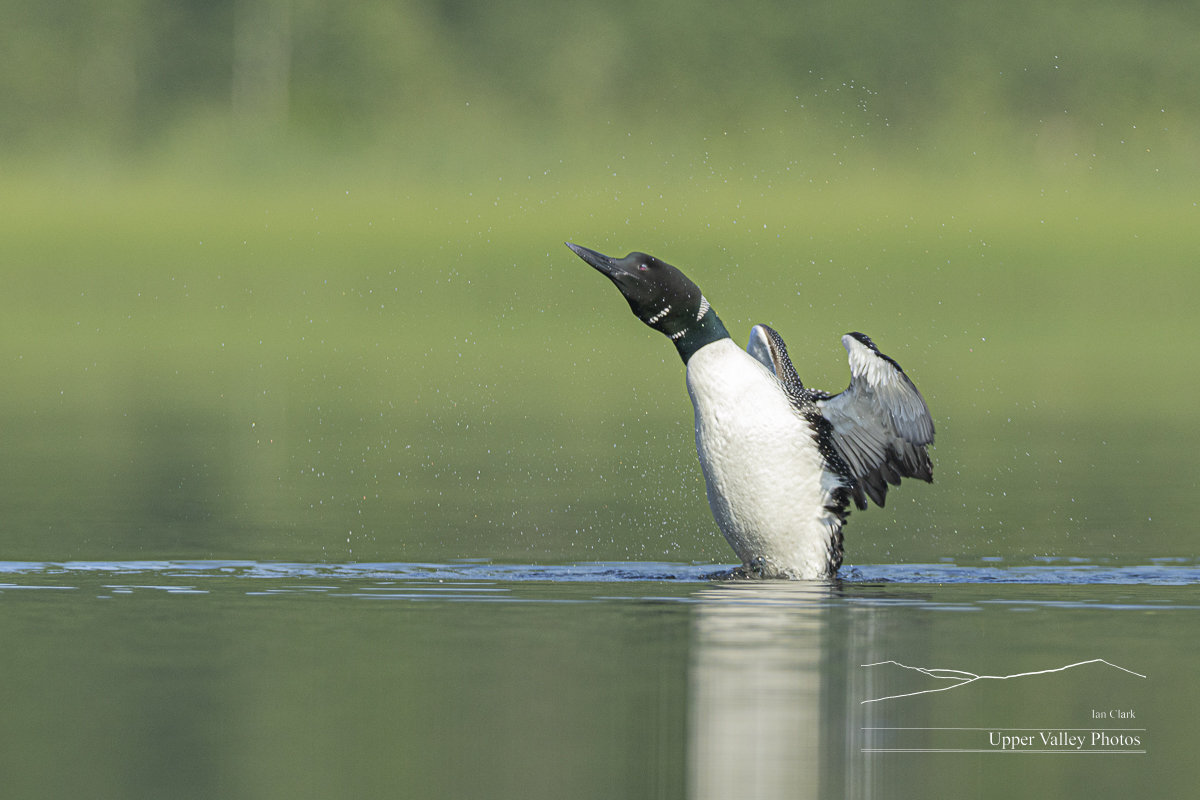
The weather kept me in this morning, I’ll be back out soon. Our second brood of bluebirds will fledge in the next couple days. They’re up flapping their wings and looking out the window.
A Look Back at Our Loons in 2022
Lazy photographers everywhere squeeze an extra post out of their favorite pix of the previous year. Why should I be different? Let’s look at some of my favorite pix of our loon families from last summer.
If you liked following the loons on my blog, you might be interested in seeing my presentation An Uncommon Look at the Common Loon. I’ve put together a PowerPoint presentation with some natural history of loons and we’ll follow a loon family from nest to the chicks in flight. I’ll be giving the presentation a couple times this week.
The first presentation will be at the Thompson Center in Woodstock, VT, this Thursday, January 12, at 1:00 p.m. The second presentation will be at the Blake Memorial Library in East Corinth, VT, this Friday, January 13, at 6:30 p.m. Both are free and everyone welcome.
And, if your interests include steam locomotives, I’ll be giving my presentation Under Steam at the Bugbee Senior Center in White River Jct., VT, on Wednesday, January 25 at 1:00 p.m. We’ll take a look at some of the US’s remaining operating steam locomotives. I’ve been tracking down the last steam engines since the 1970s, this show looks at the highlights from coast to coast. Also free and everyone welcome.
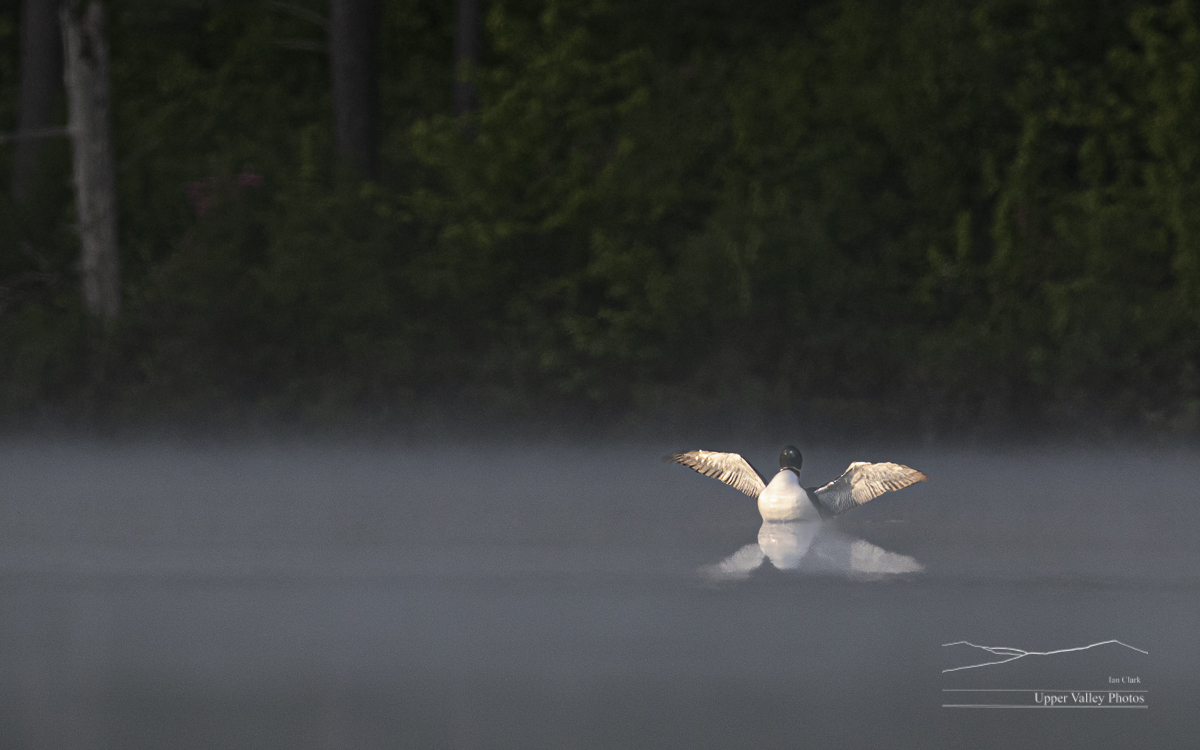

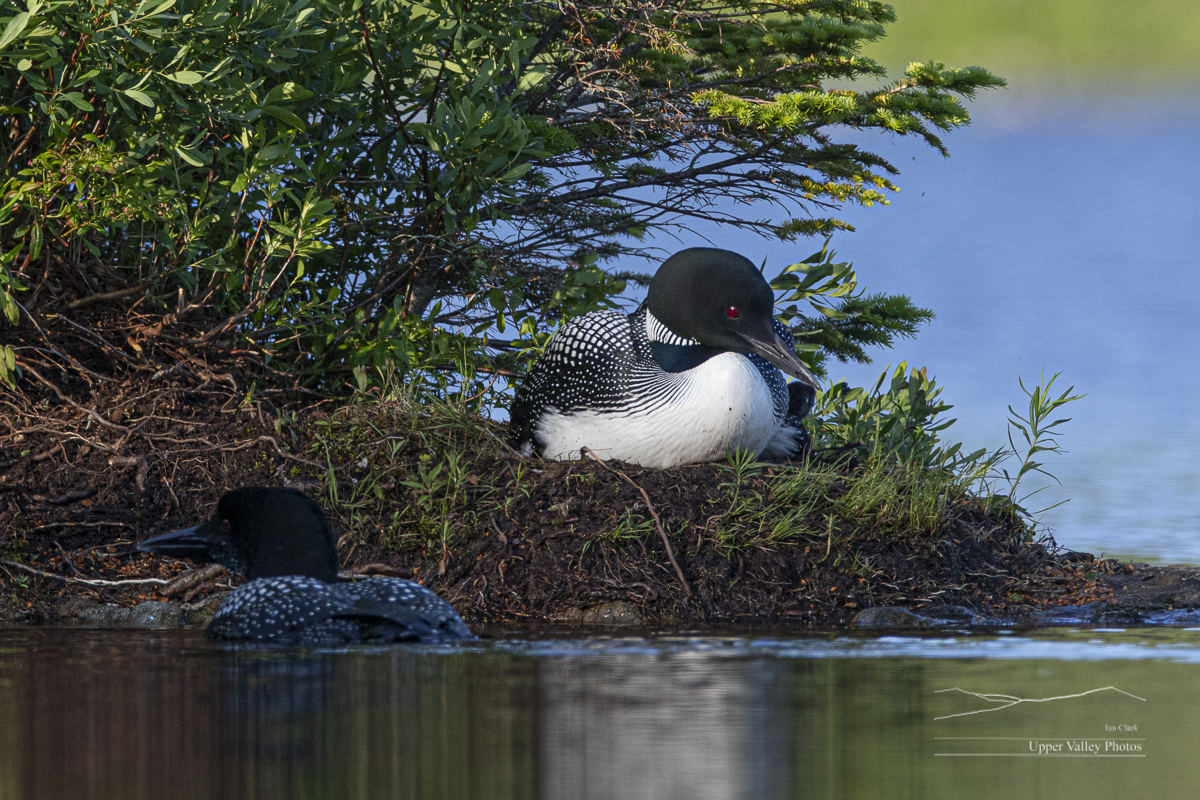
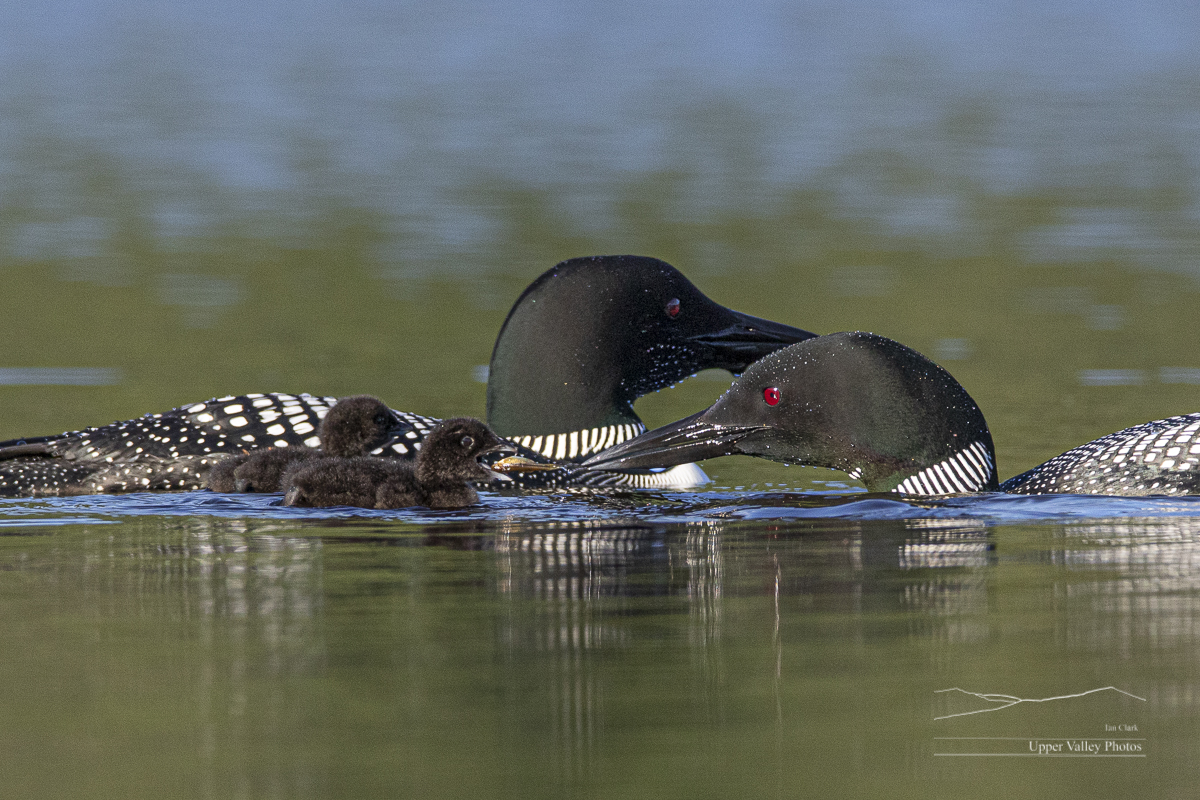
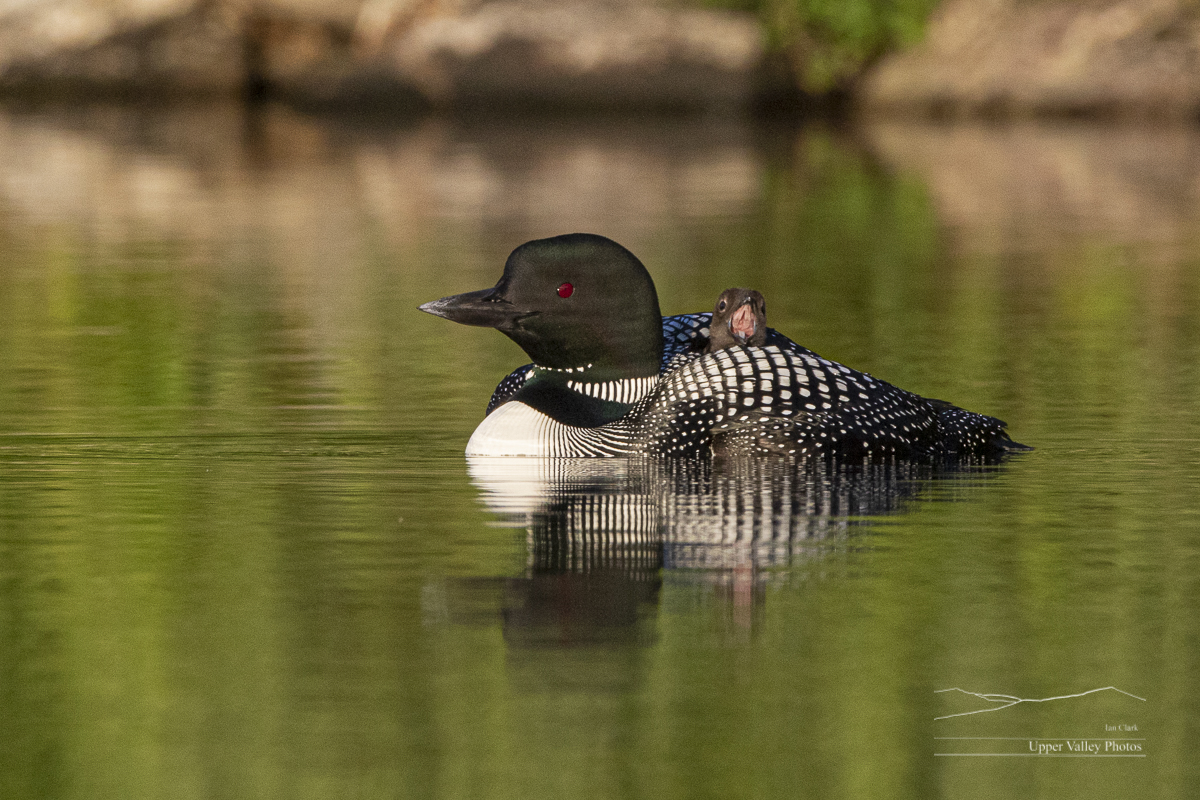

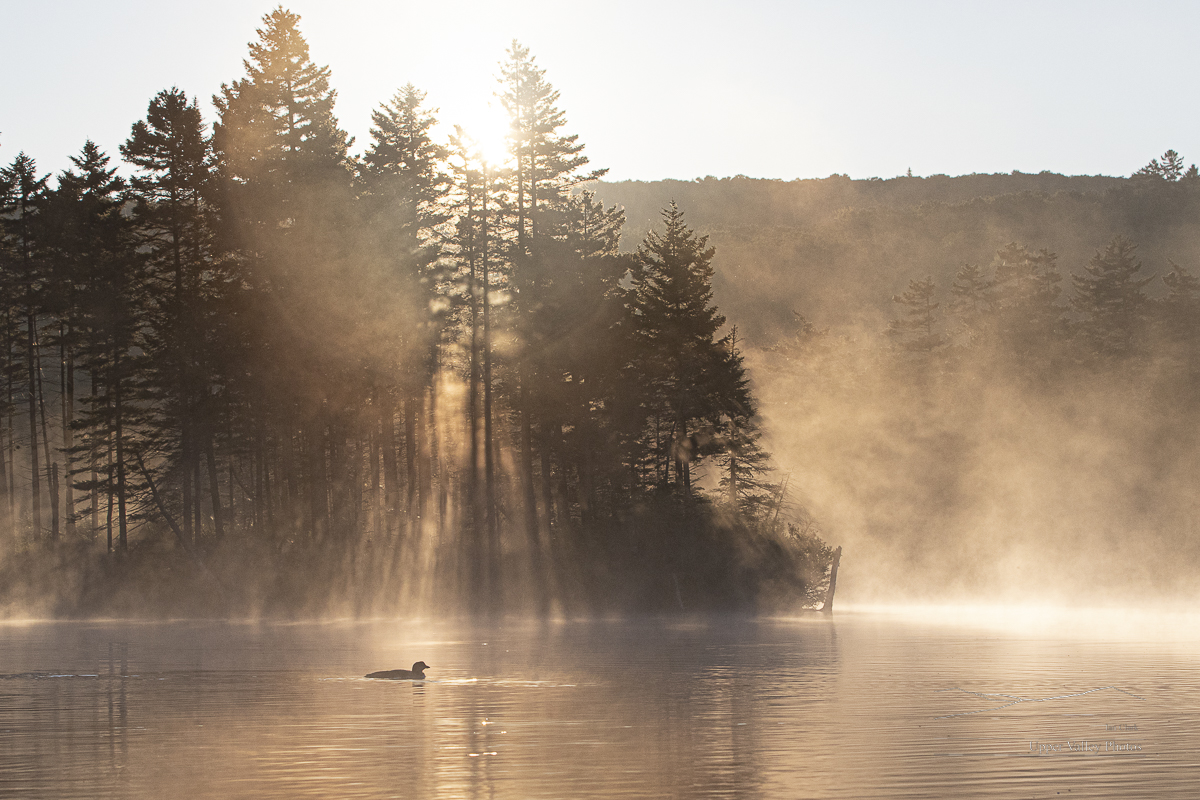


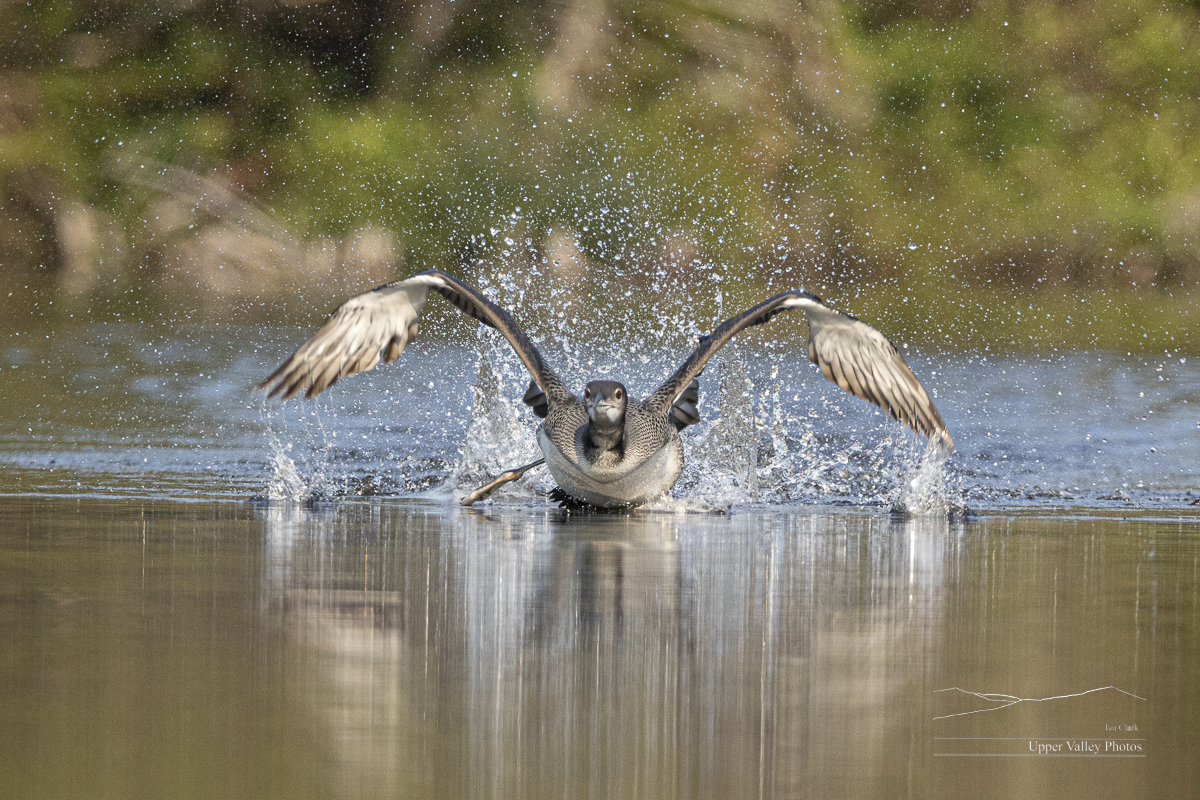
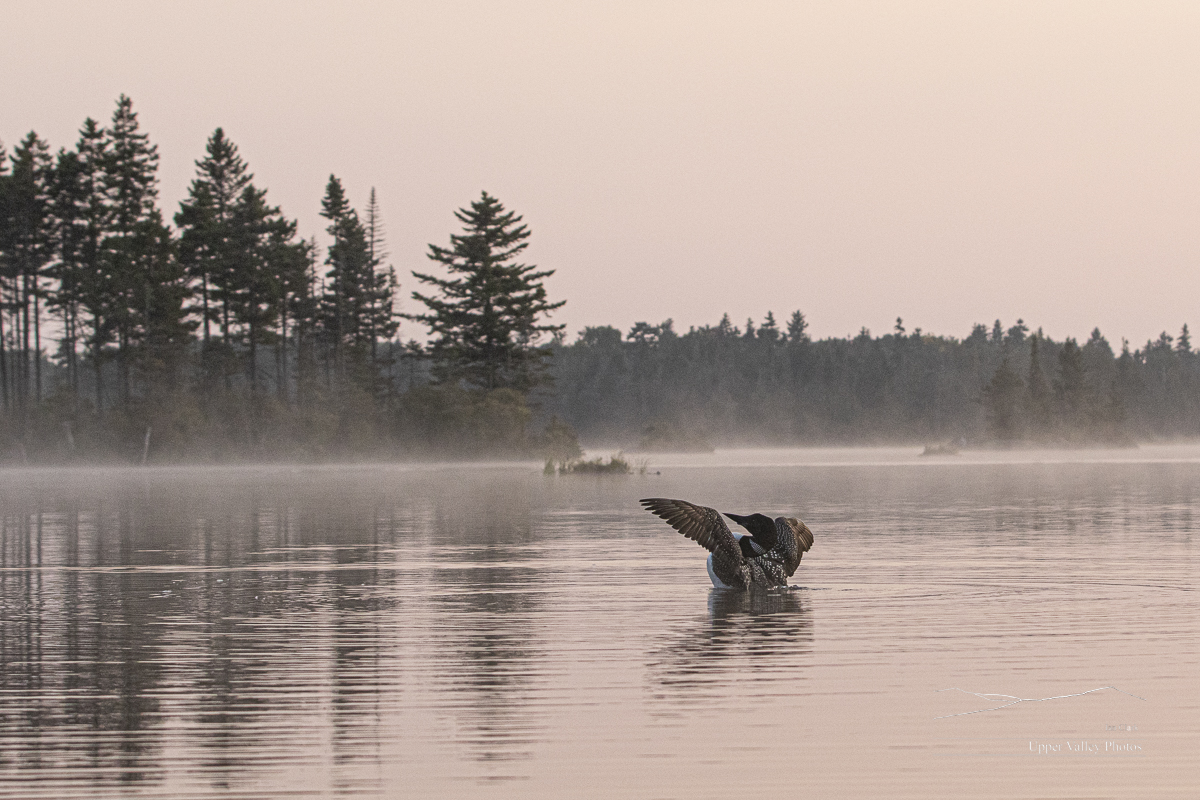
Checking in on the Loon Families
I had a chance to check in on two of our loon families this weekend. Let’s see what’s up.
The Paradise City Arts Festival in Northampton, MA, is this coming weekend, October 8, 9& 10. I’ll be there in booth 220 with lots of photos of loons, owls, fox kits and other critters.
Friday morning, after scraping ice off the windshield, I headed east to check on the Eastons. This is the family that last I saw them, the chicks were practicing takeoffs, but were not yet airborne. This pond is almost 2,000 feet above sea level. The loons usually depart from this pond much earlier than the nearby ponds at lower elevations. This year, I wondered if fish were scarce; the parents seemed to feed the chicks more crayfish than other loons and in the last couple visits, the parents delivered only a couple fish of any size. Anecdotal evidence from fisherpeople also suggests that fish are scarce, but when has anyone fishing complained of there being too many fish?
One loon flew over the pond about half an hour before sunup, and that was the only sighting for the day. The loons have moved on. They’re likely to have moved to a lower pond where they’re likely to stay until the ice starts forming. Once the ice appears, they’ll head to the coast.
Our heron was around to give me the consolation prize.

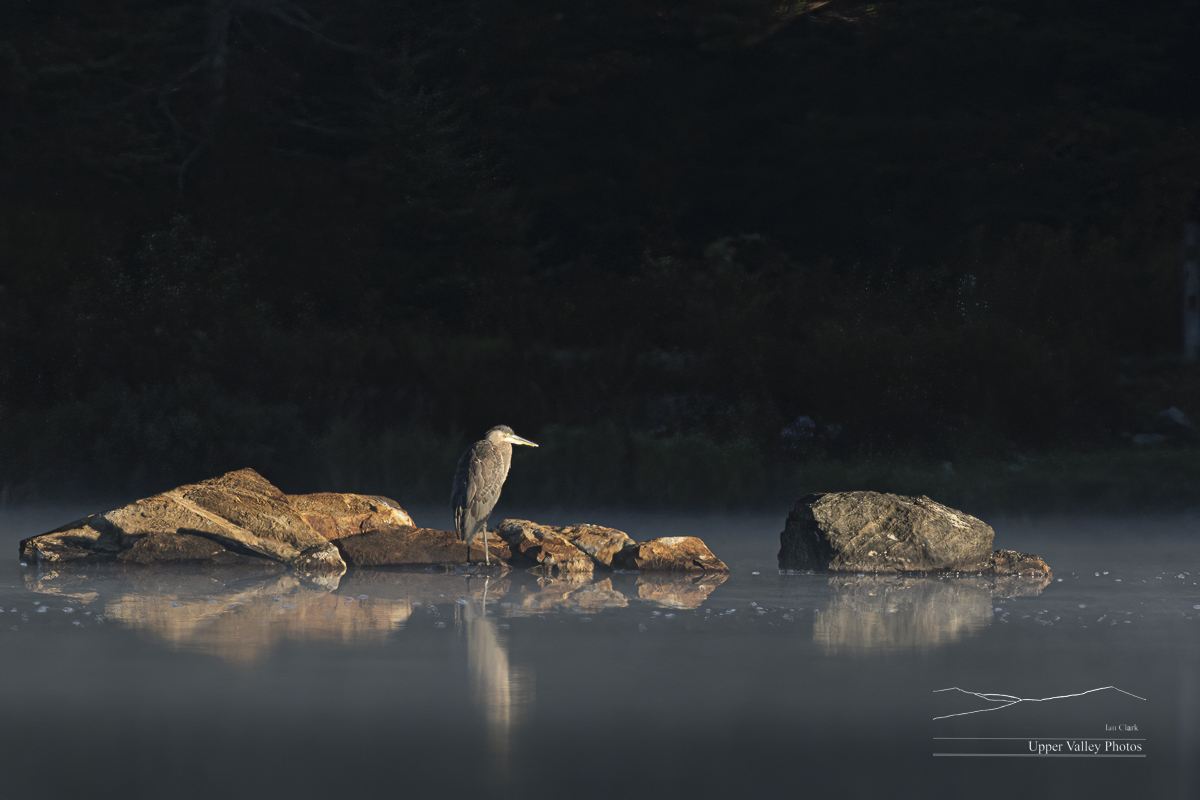
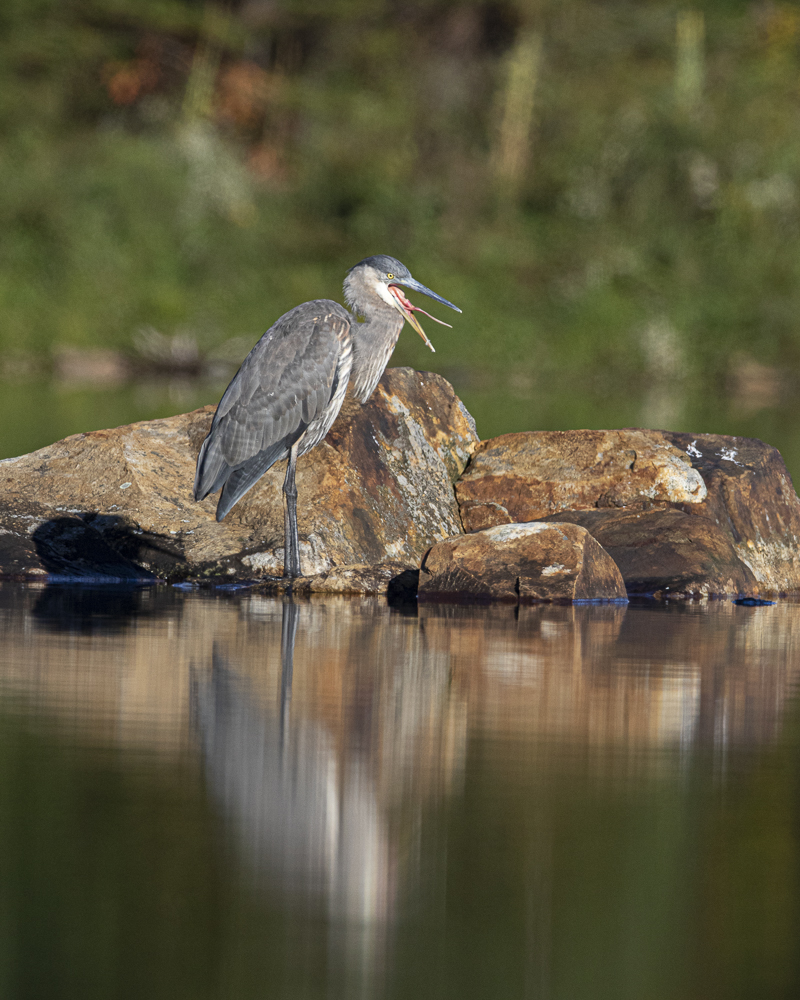

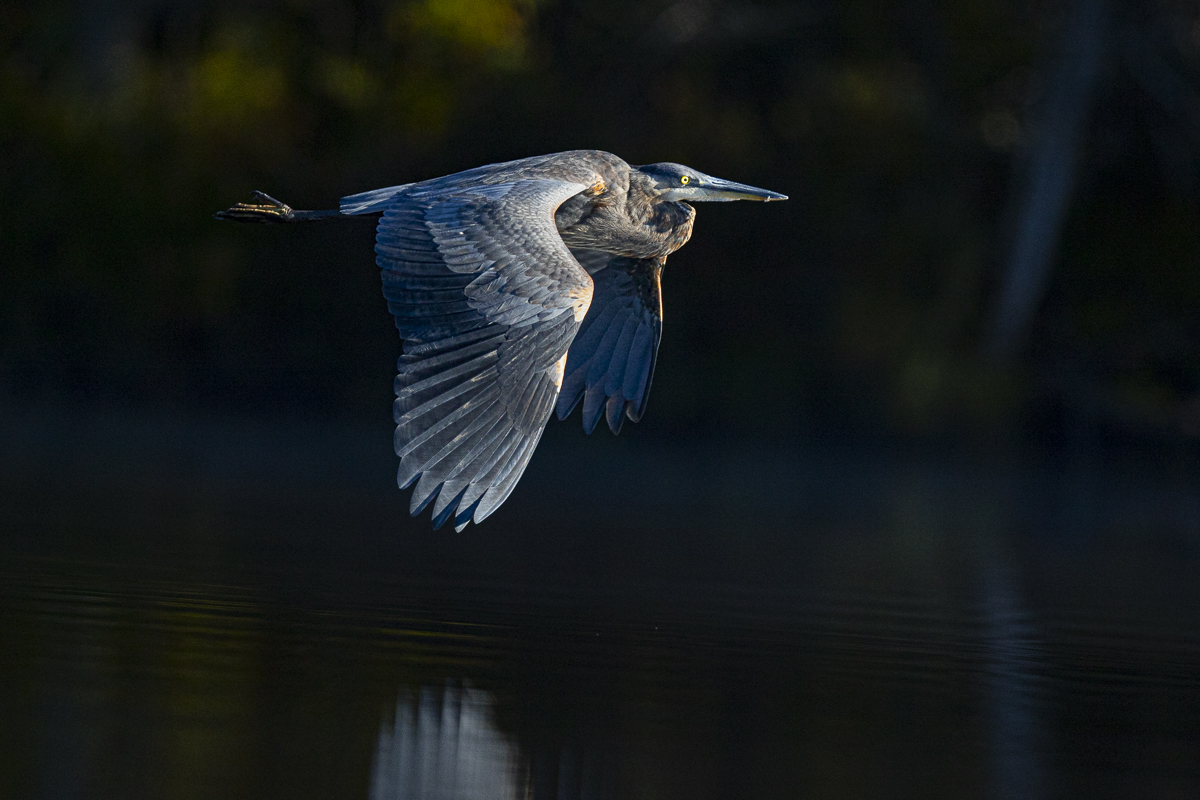
This morning, I visited the loons to the west, the Westons. Their pond is much lower, about 870′ ASL. And, much warmer, at 47 when I arrived. There was one adult and the surviving chick on the pond. The chick is 13 weeks old this weekend.
One of the residents on the pond tells me that the chick has had a busy week with an juvenile eagle repeatedly harassing him. No sign of the eagle this morning, but I wasn’t out long.

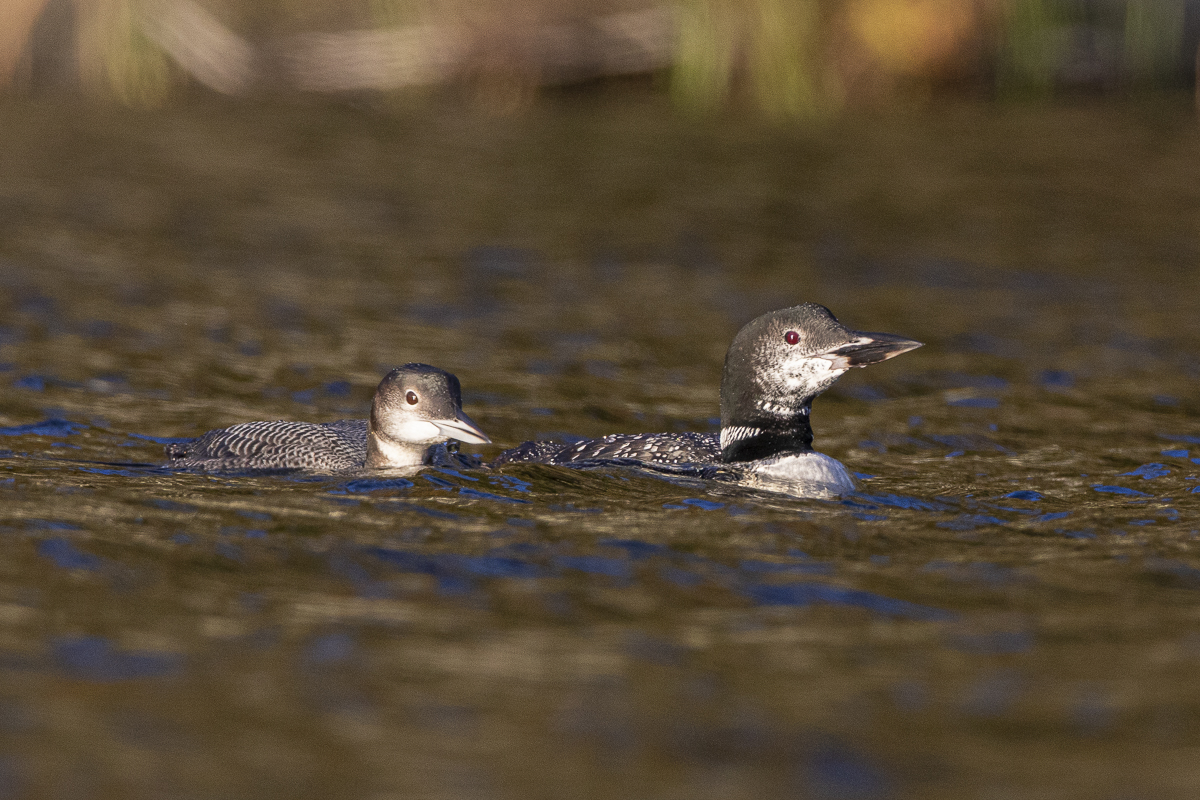

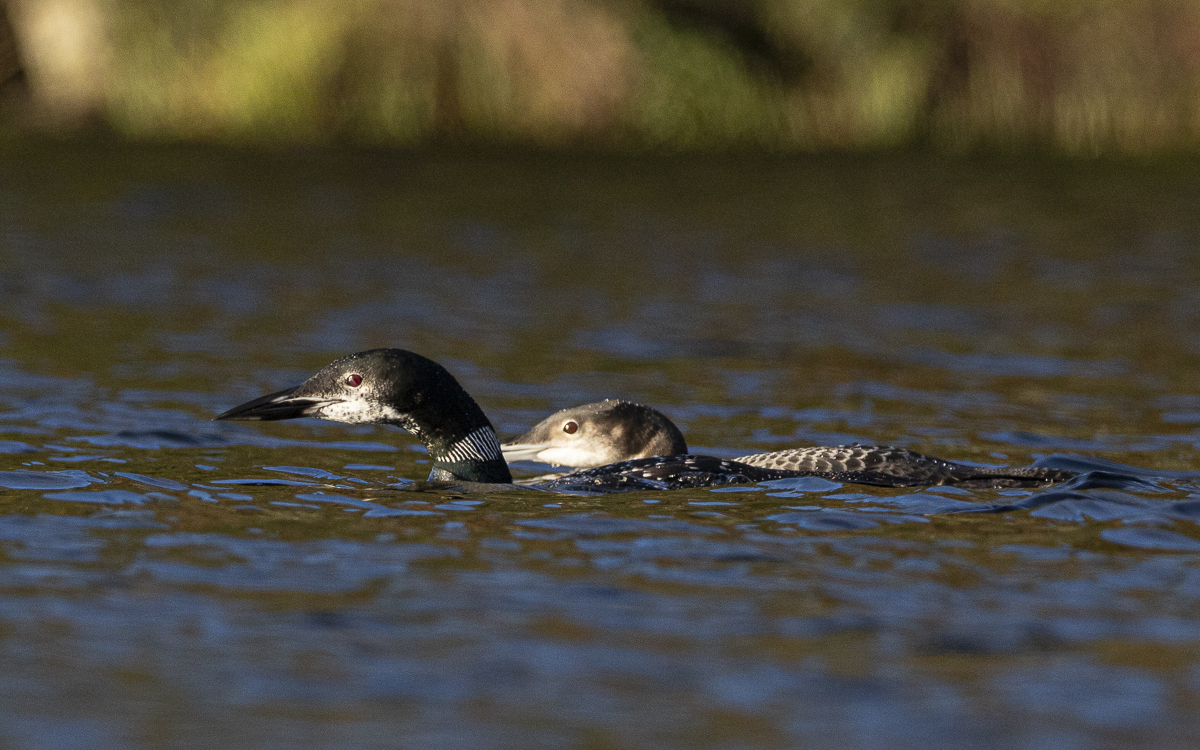
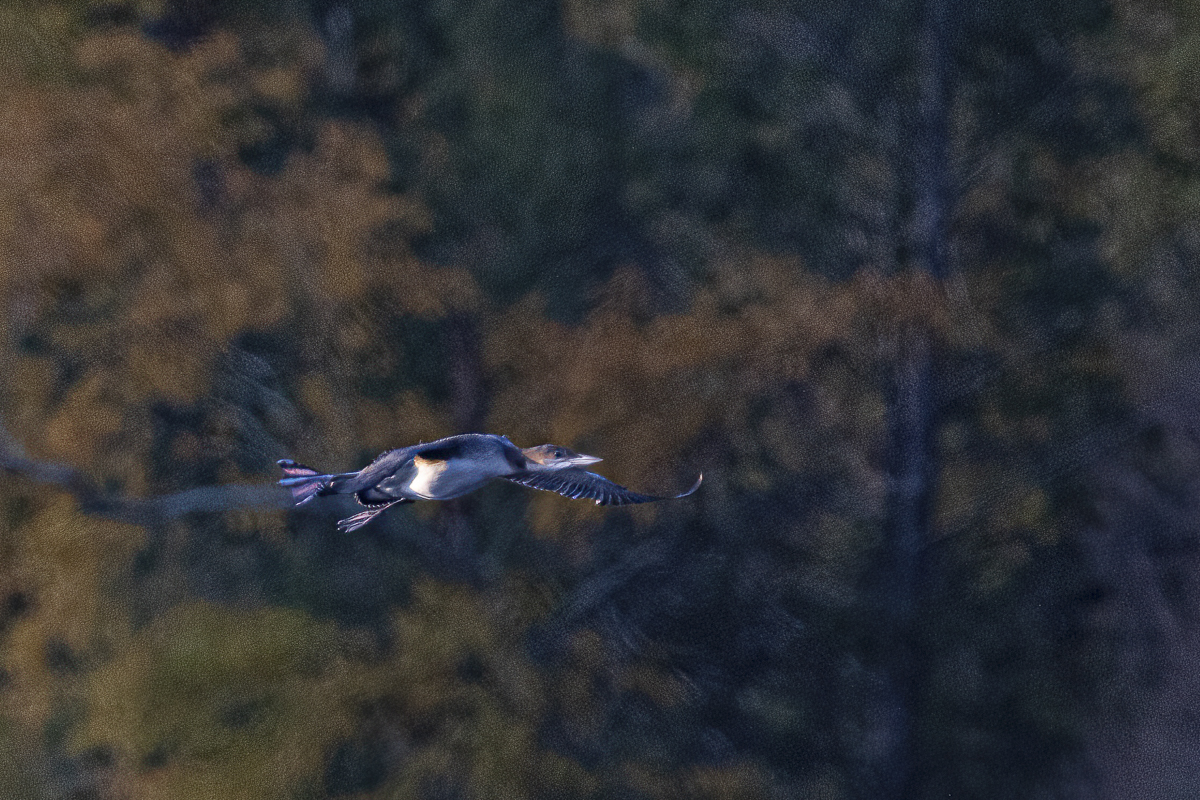
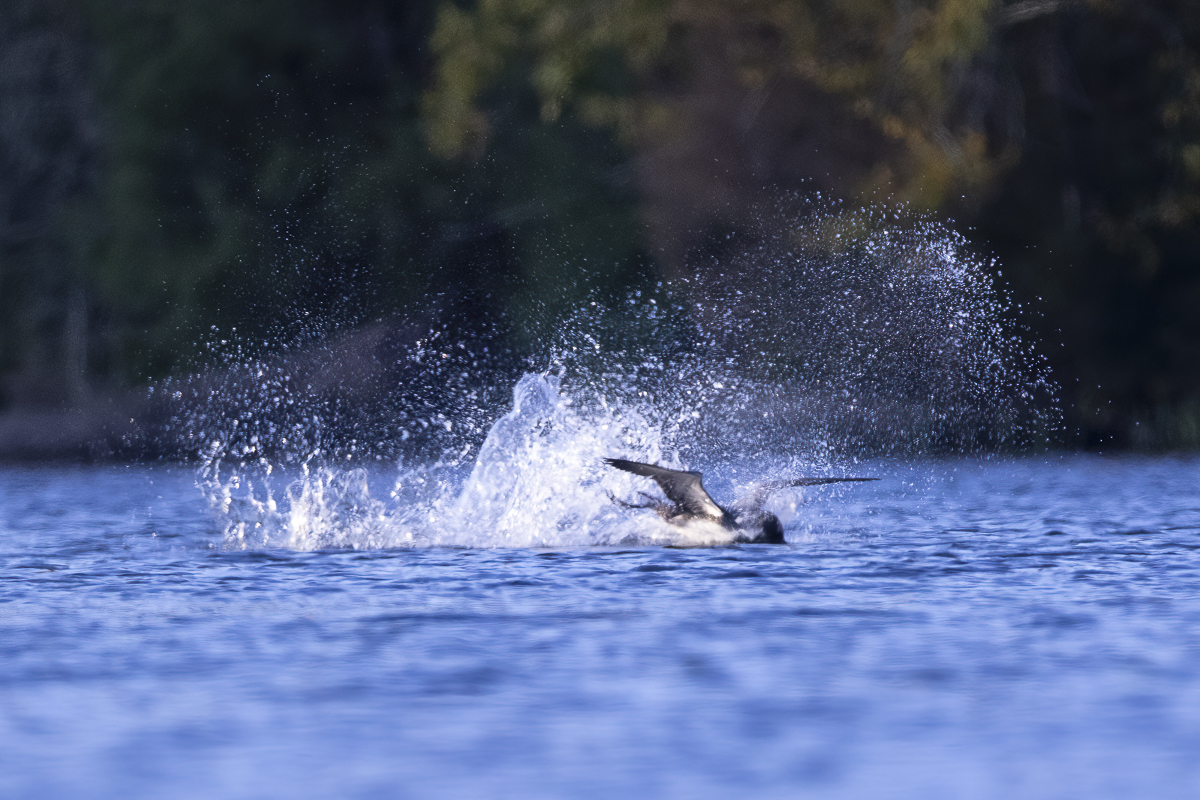
Anyone have a bear coming after the last of the apples?
Another Visit With The Loons
This morning provided better weather for visiting the loons than Friday. I headed out before dawn to see what they were up to. The chicks were ten weeks old this weekend. They’re mostly foraging for themselves now, they can make prolonged dives. But they’re still happy to have their parents rustle up a meal for them.
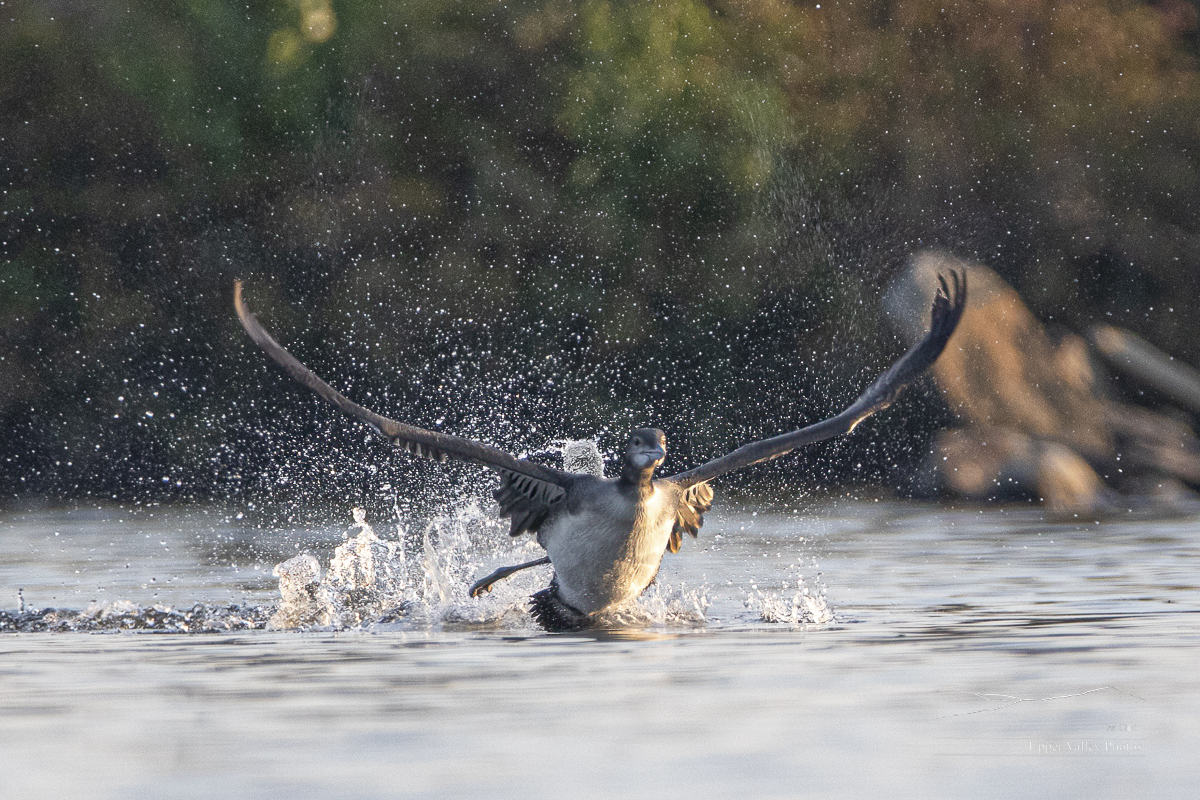

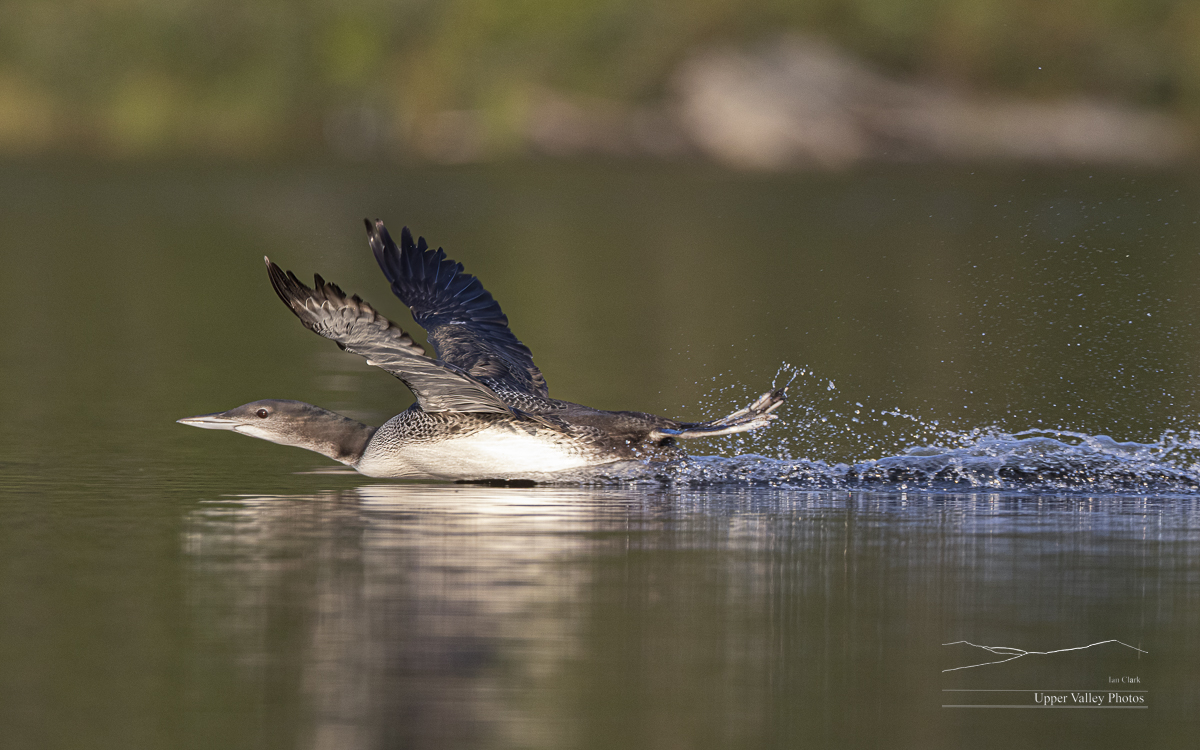
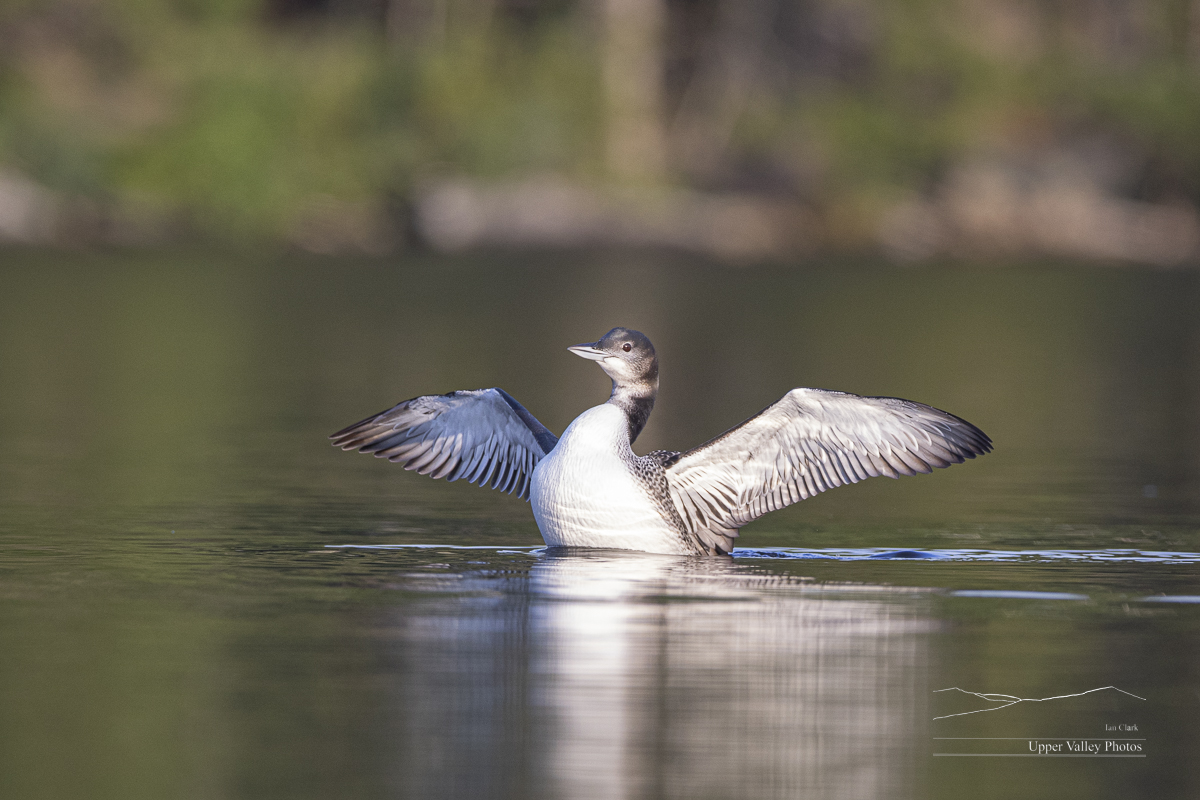
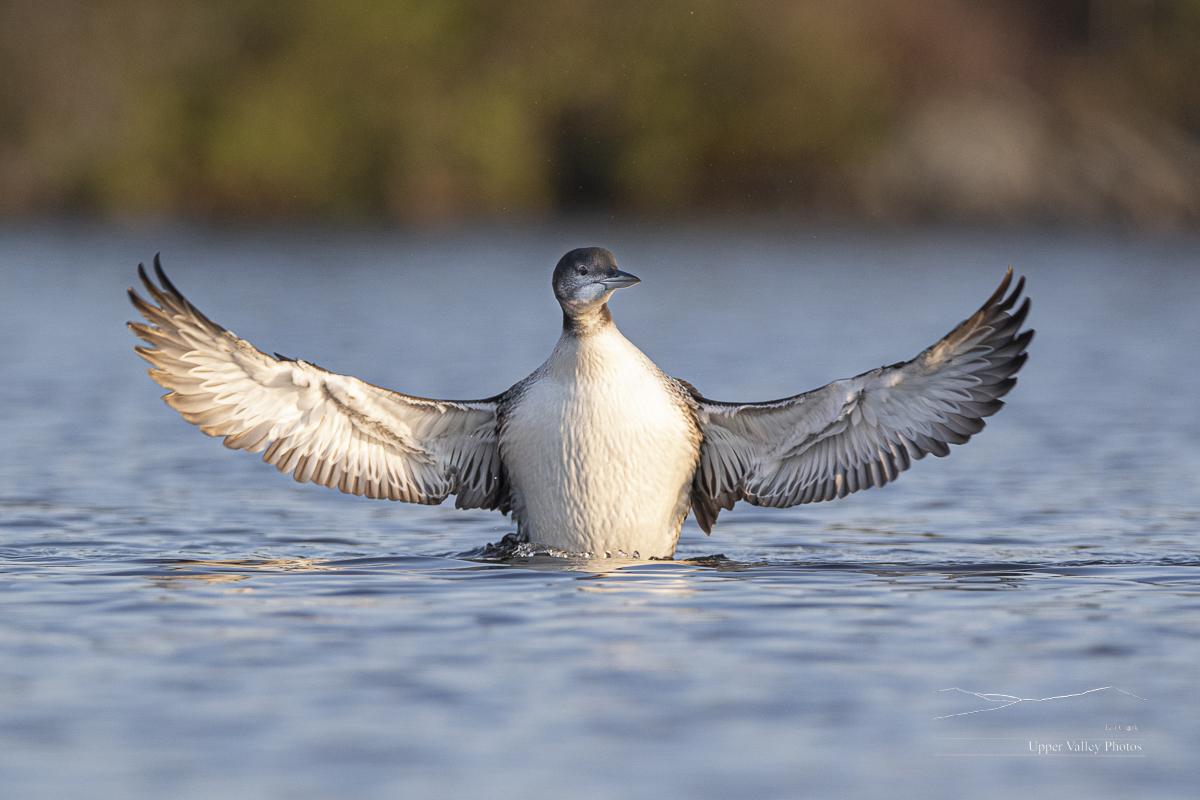
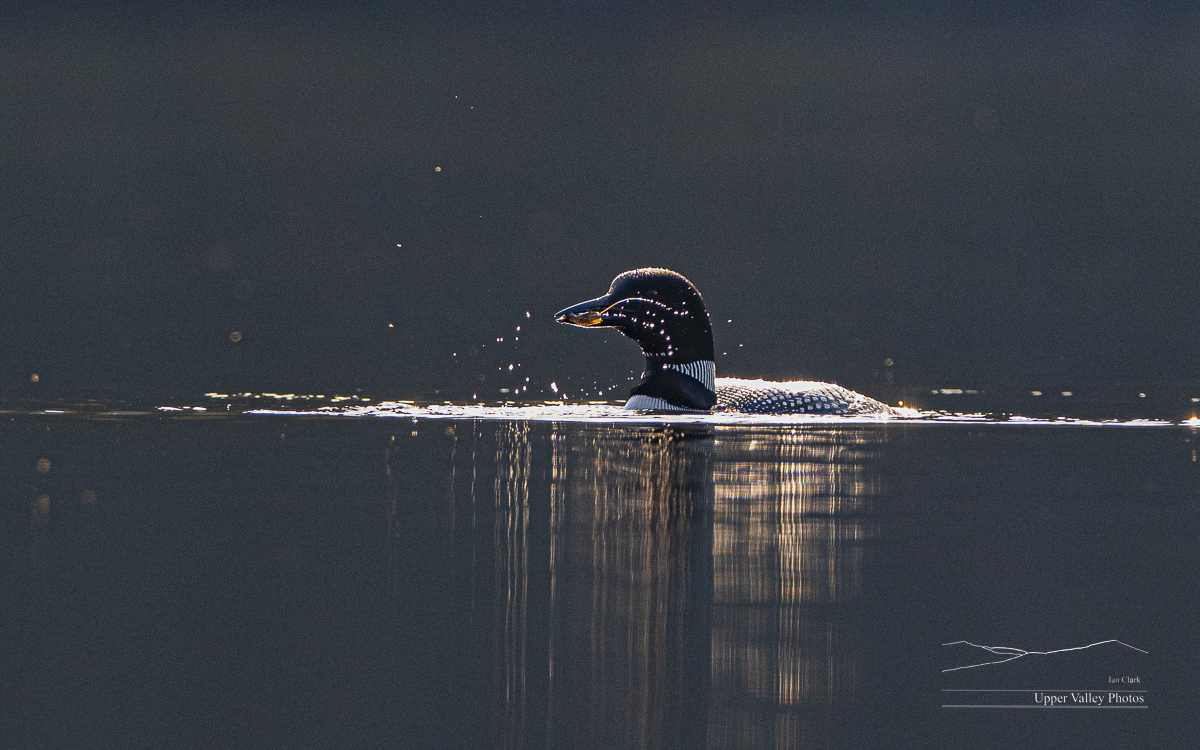

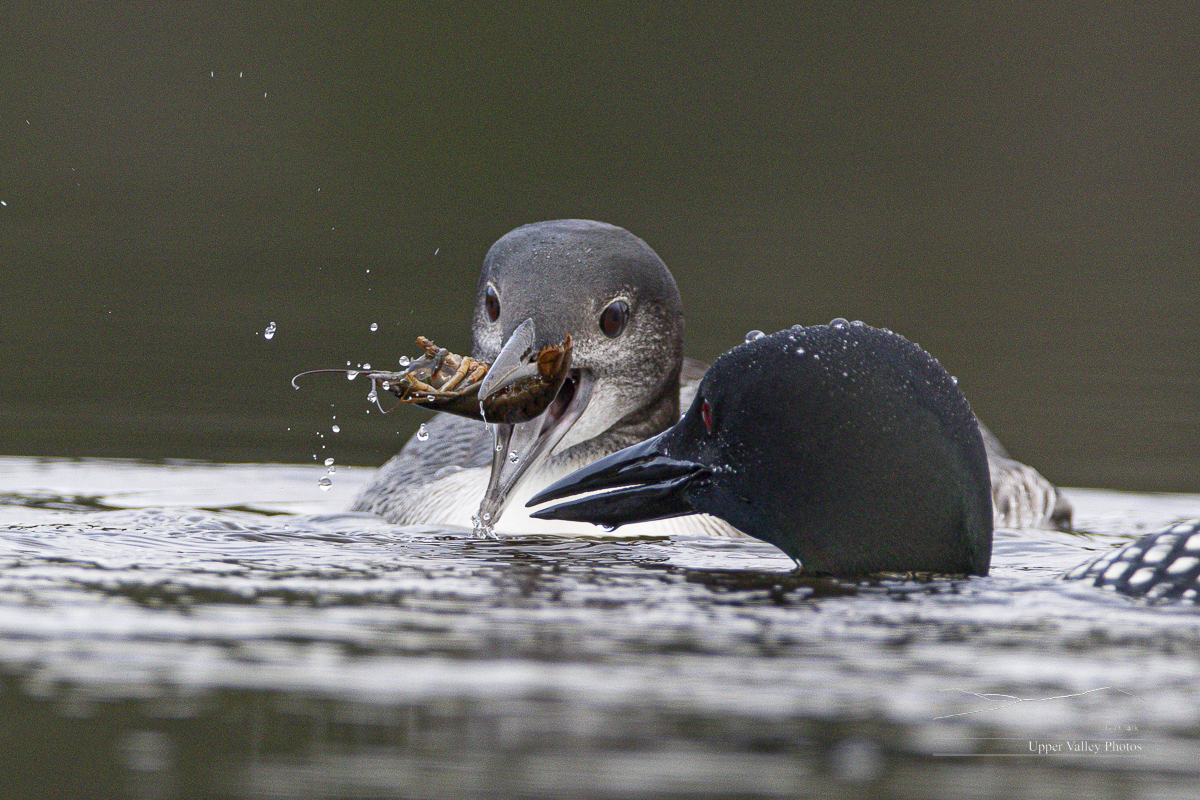
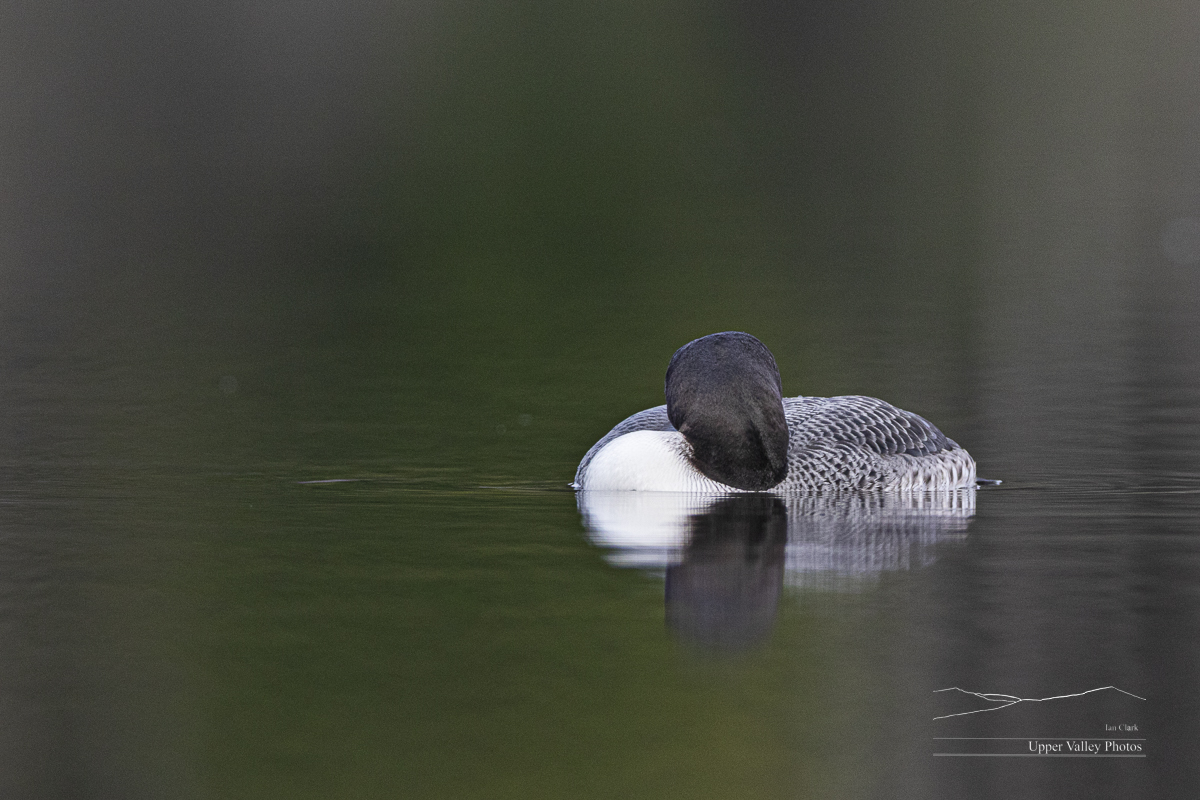

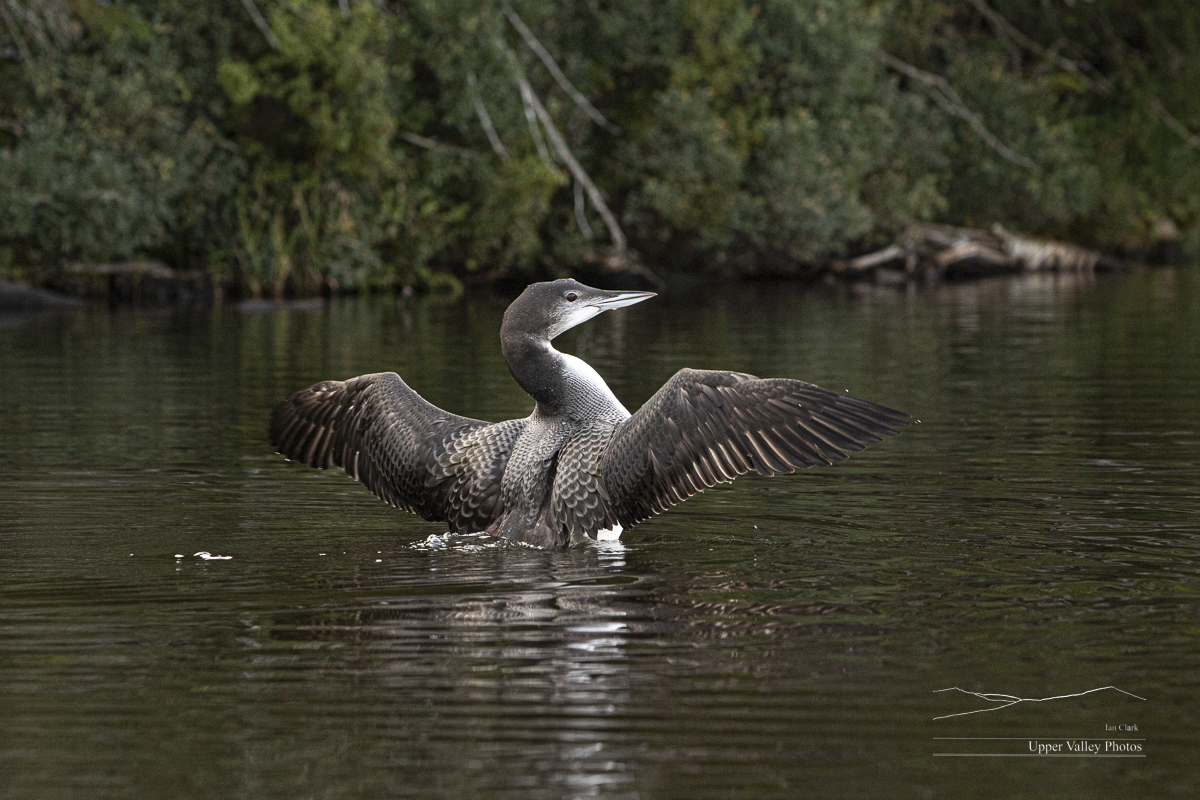
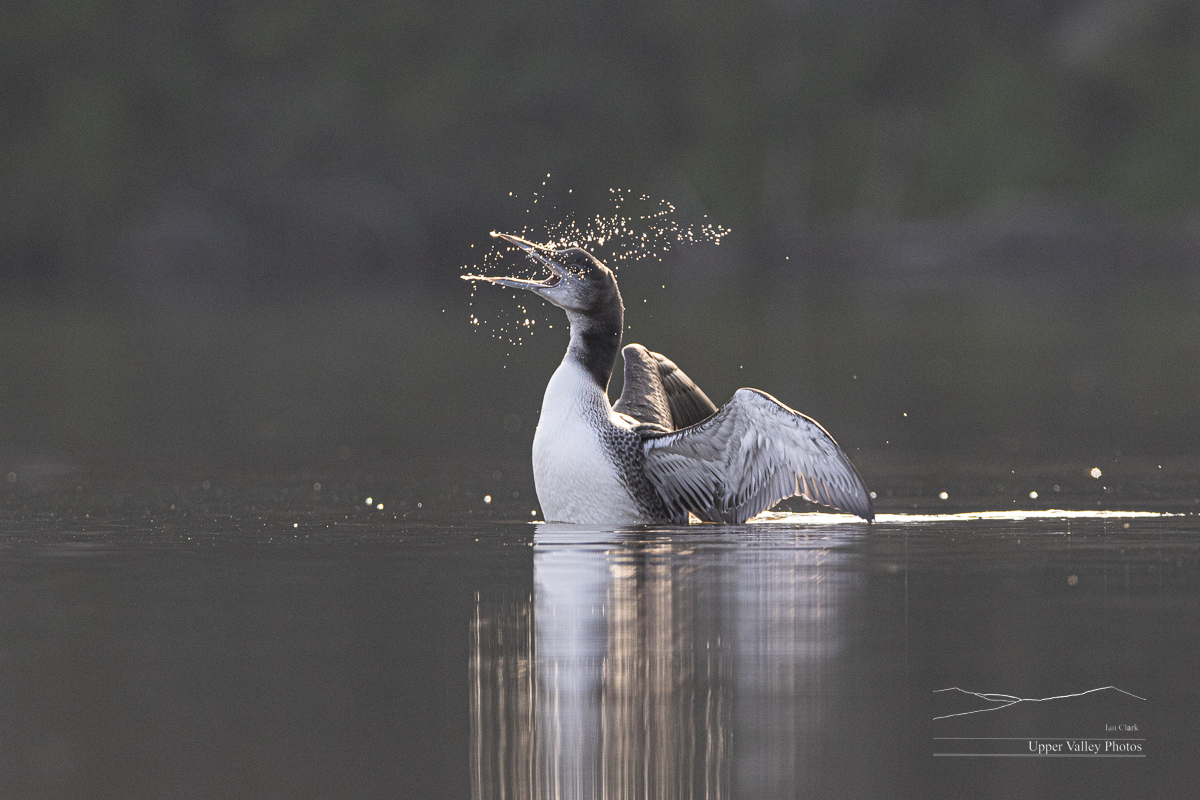
Know an organization in need of programs? I’ve got several PowerPoint shows, one on the surviving steam locomotives in the US, visiting the puffins on Machias Seal Island, one on getting started with wildlife photography and one on loons. For educators, I’ve got a program about career opportunities in photography. Email for more info.
Loon Chicks at Five and Six Weeks
Two of our loon families chicks are now six weeks old, the other family’s chick is five weeks. Let’s check in to see how they’re doing, as well as seeing what a few other critters are up to.
I’m going to miss posing next week, I’ll be down at the League of New Hampshire Craftsmen’s Fair in Sunapee. I’ll have lots of new prints and cards, I’m in booth 725, stop by and say hello.
And, yes, yes that bee hovering above the swallow from my last post did survive to buzz another day. Apparently, I should have added that to the caption…. Surprising how many people were concerned for the bee…
The Weston’s remaining chick (on the western pond I’m watching) is doing well. There was an intruder in the neighborhood again, the parents were alerted and searching for him. I didn’t see any interaction with the intruder and the chick made only brief appearances while mostly hiding in the brush. There were a few other animals around.
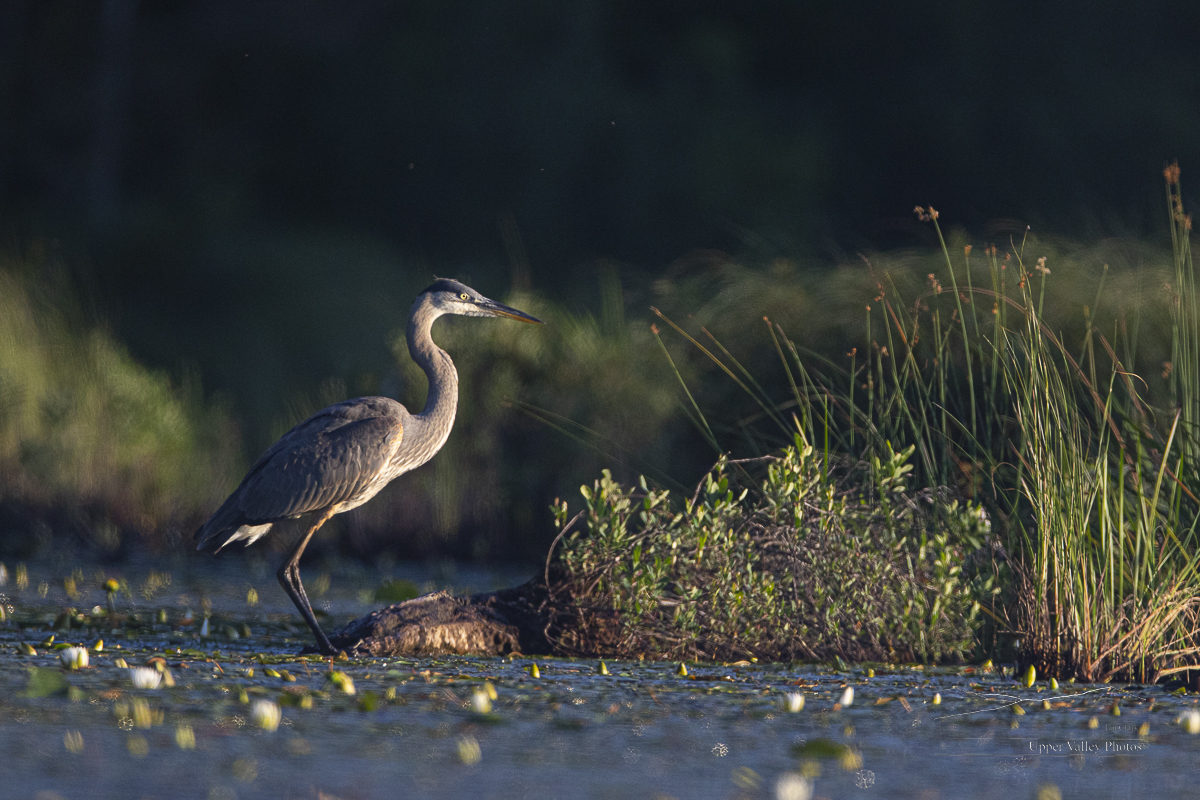
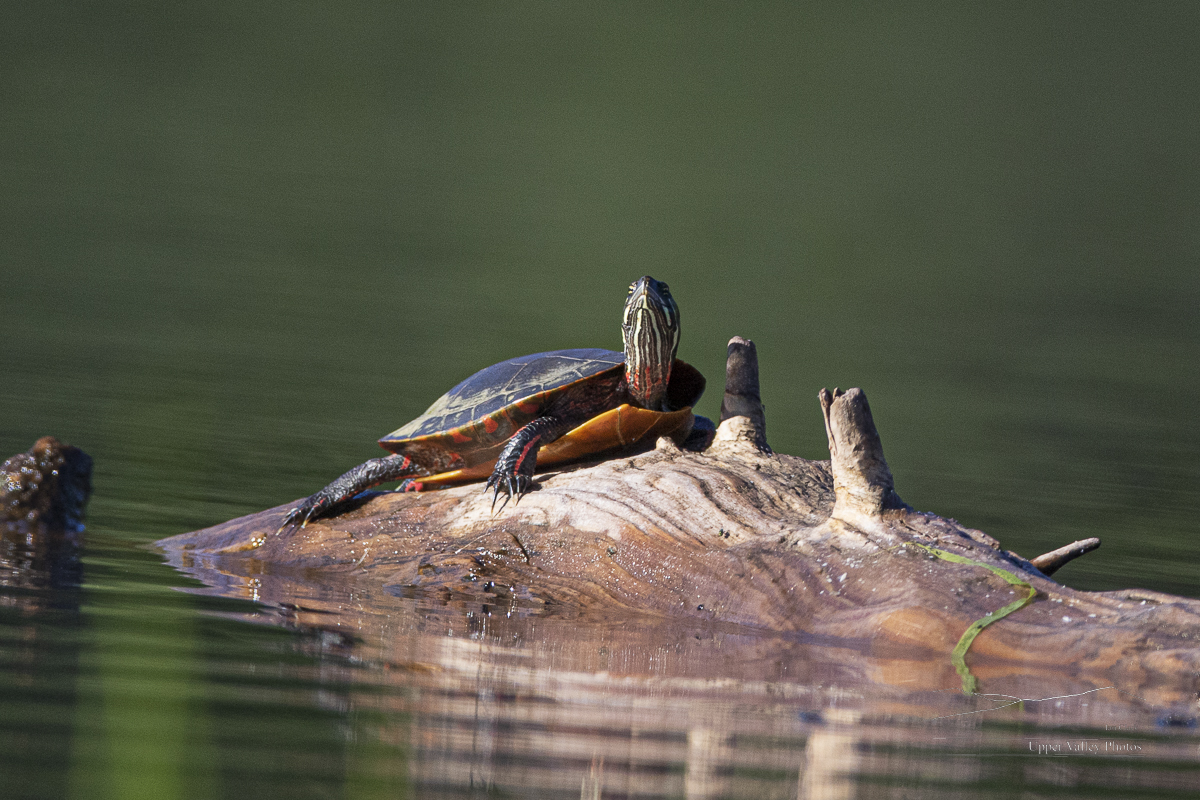
I made three visits to the Eastons before getting good conditions for photography. The first two mornings were peaceful, this morning they faced an intruder.
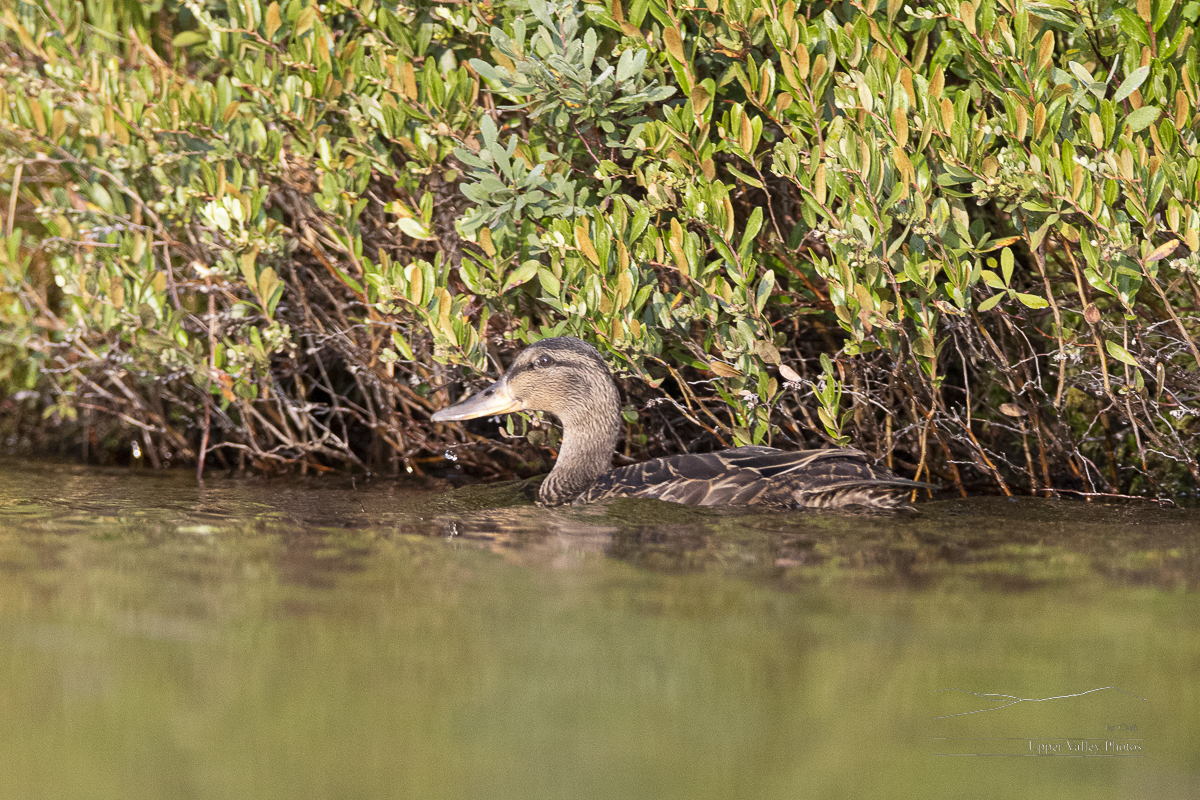
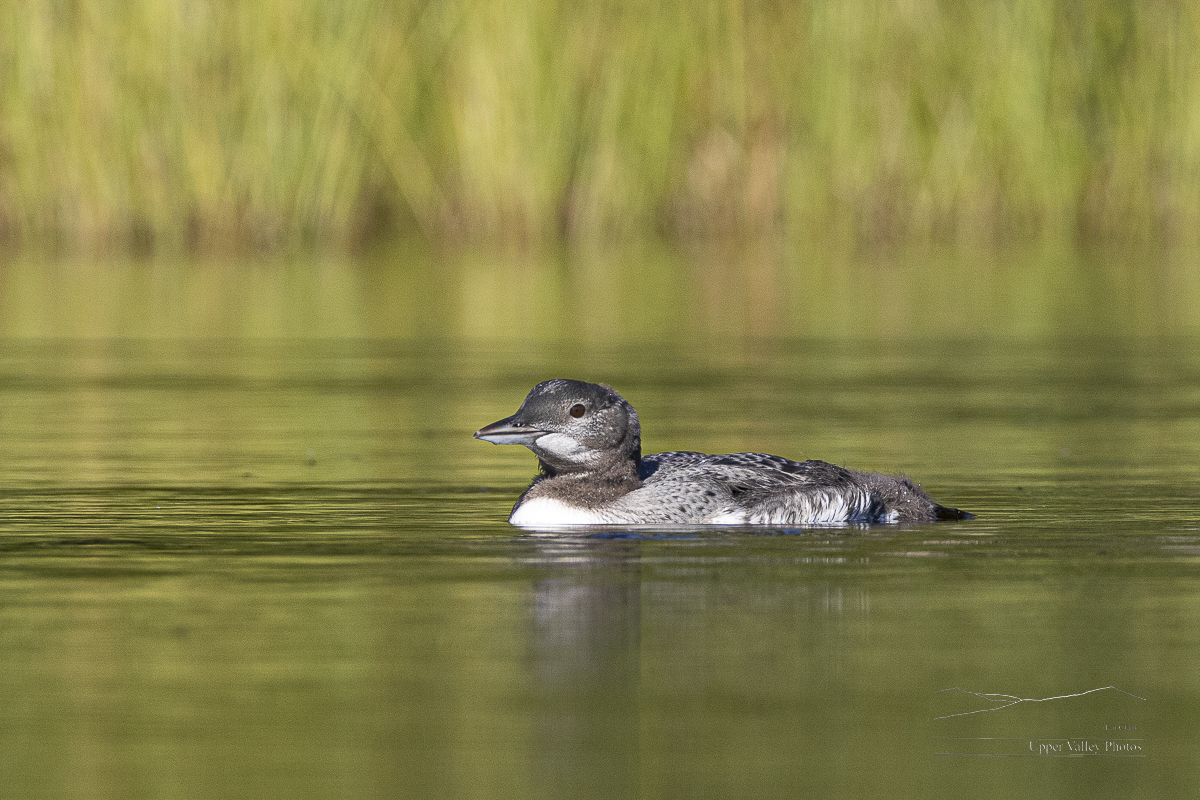
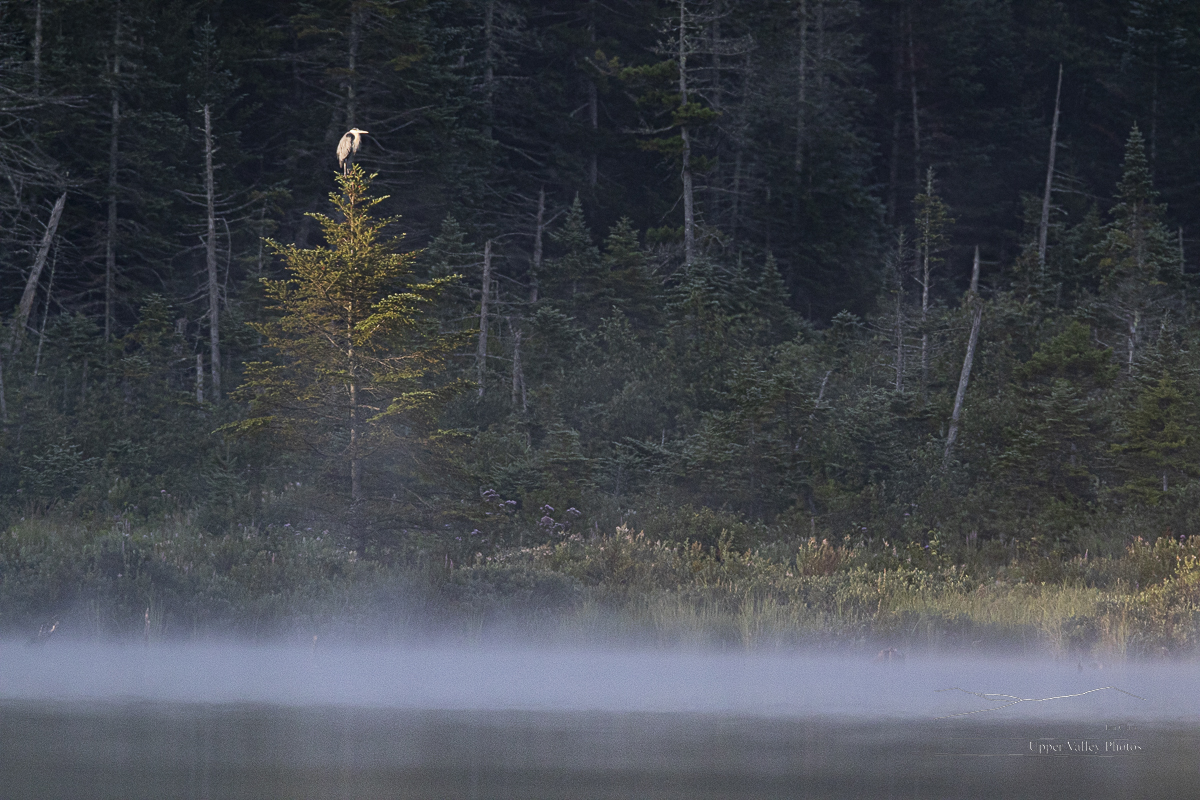
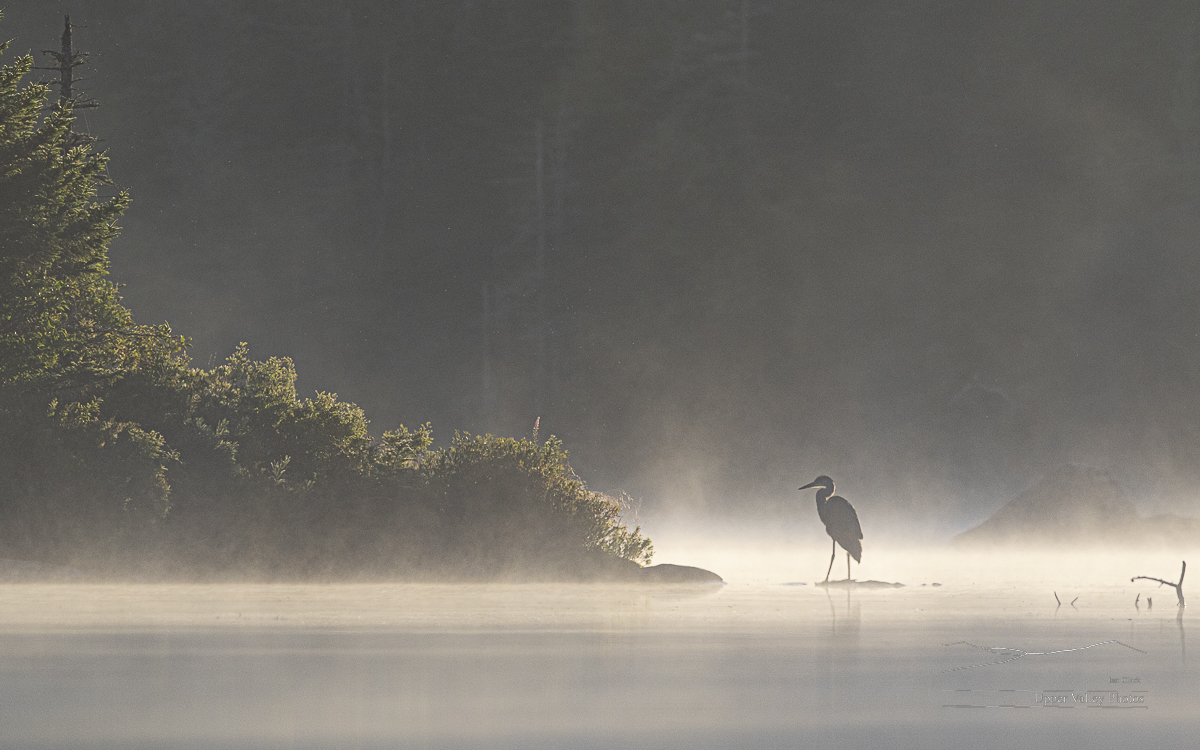

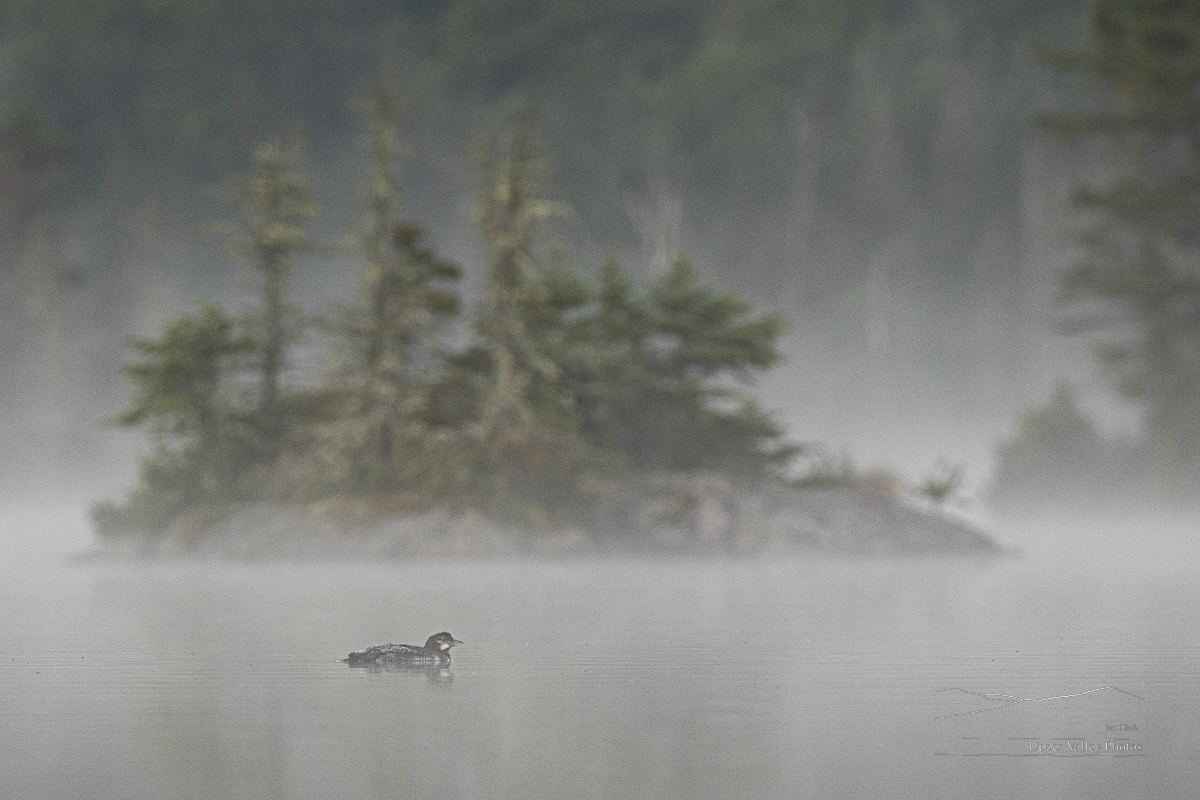
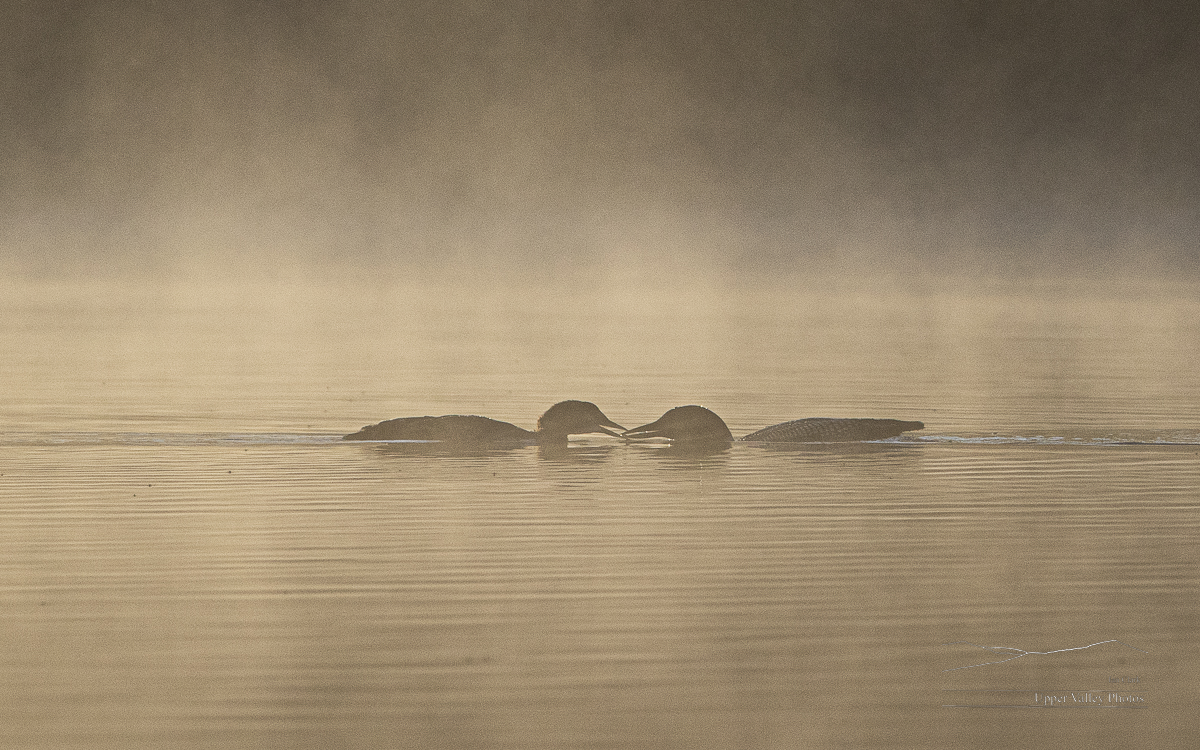
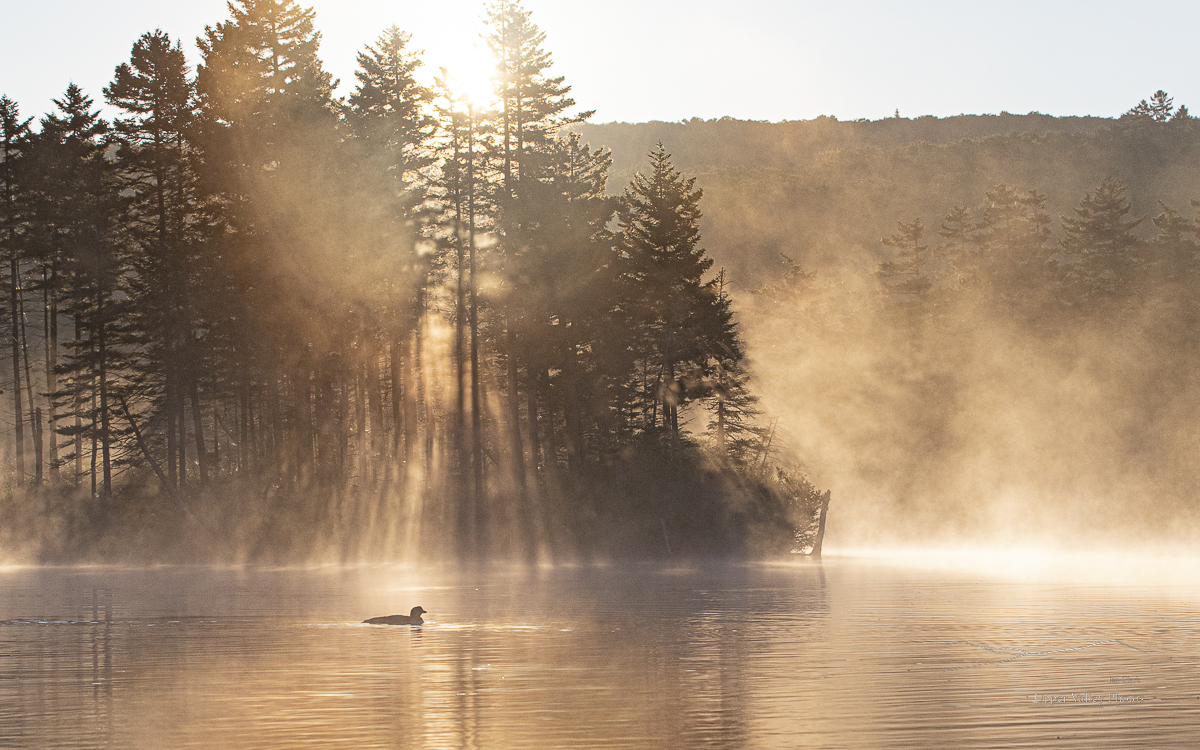
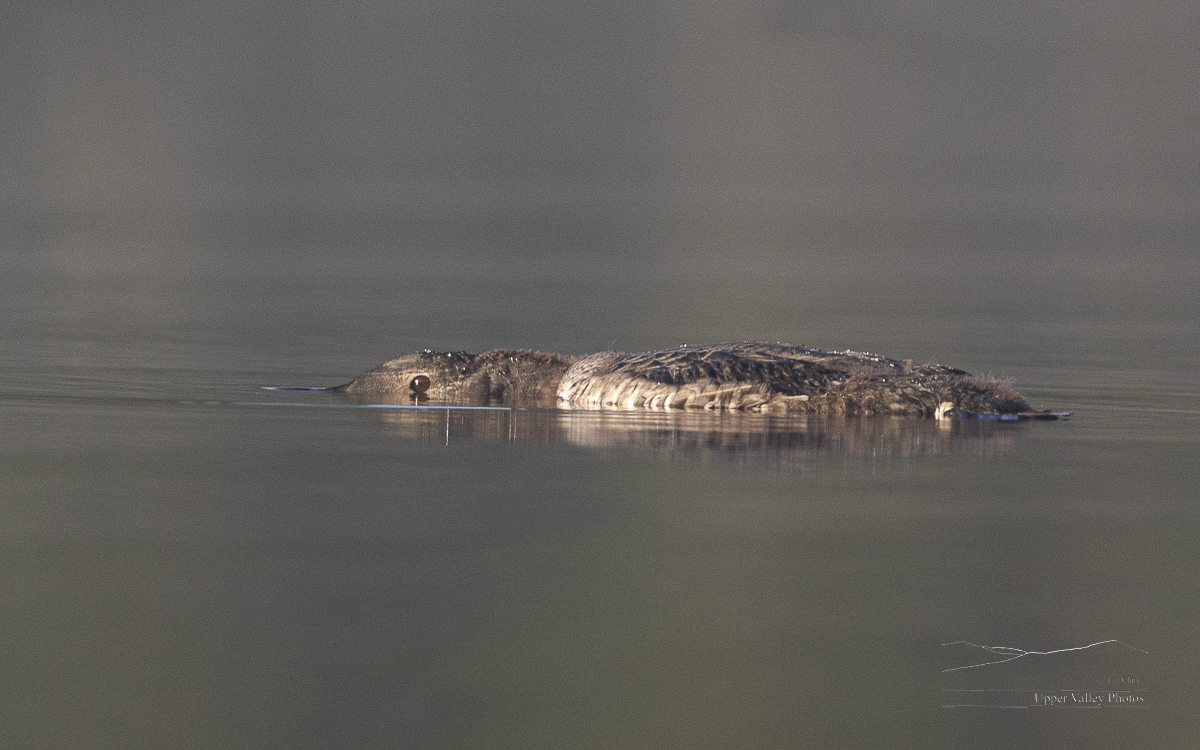
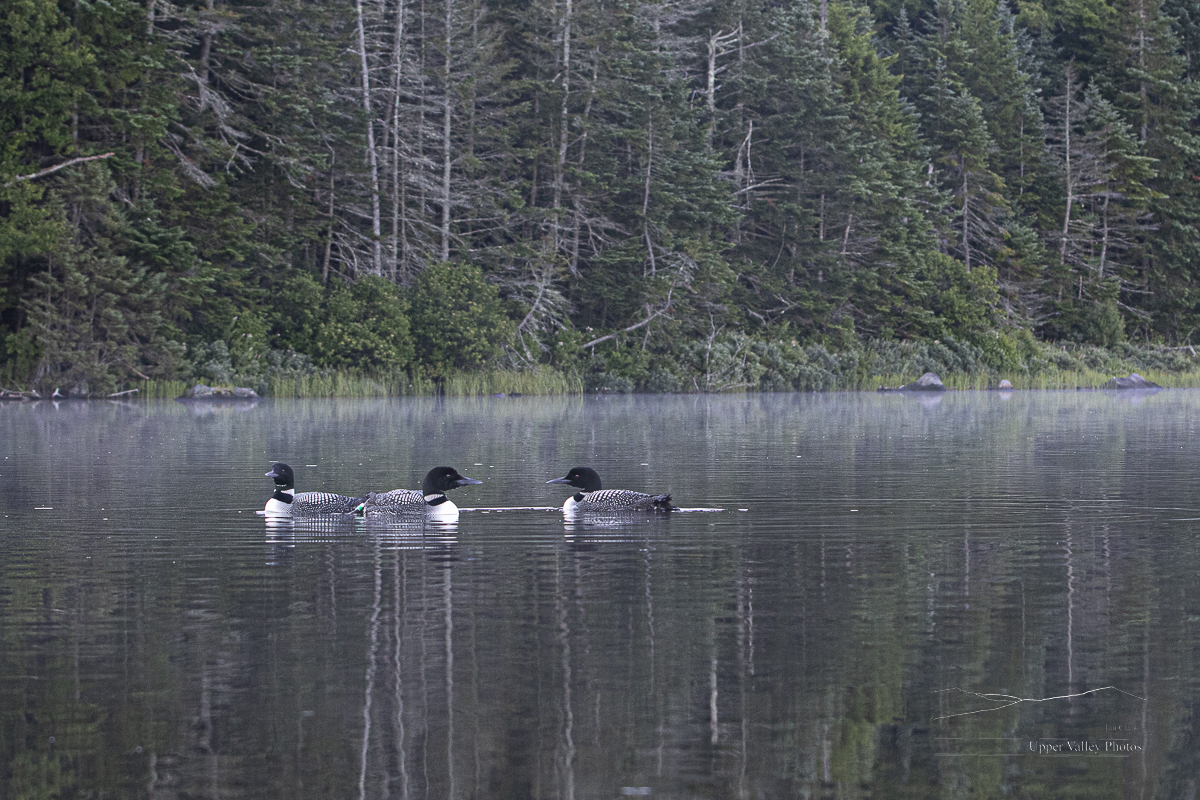
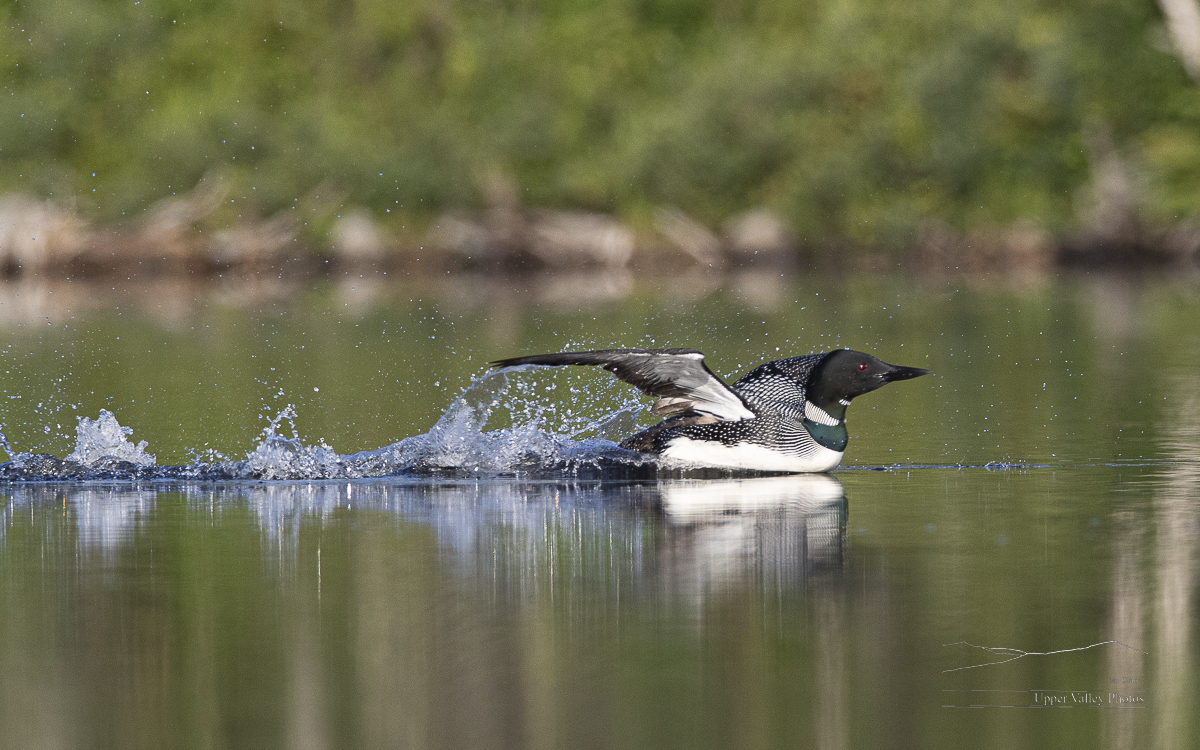
“


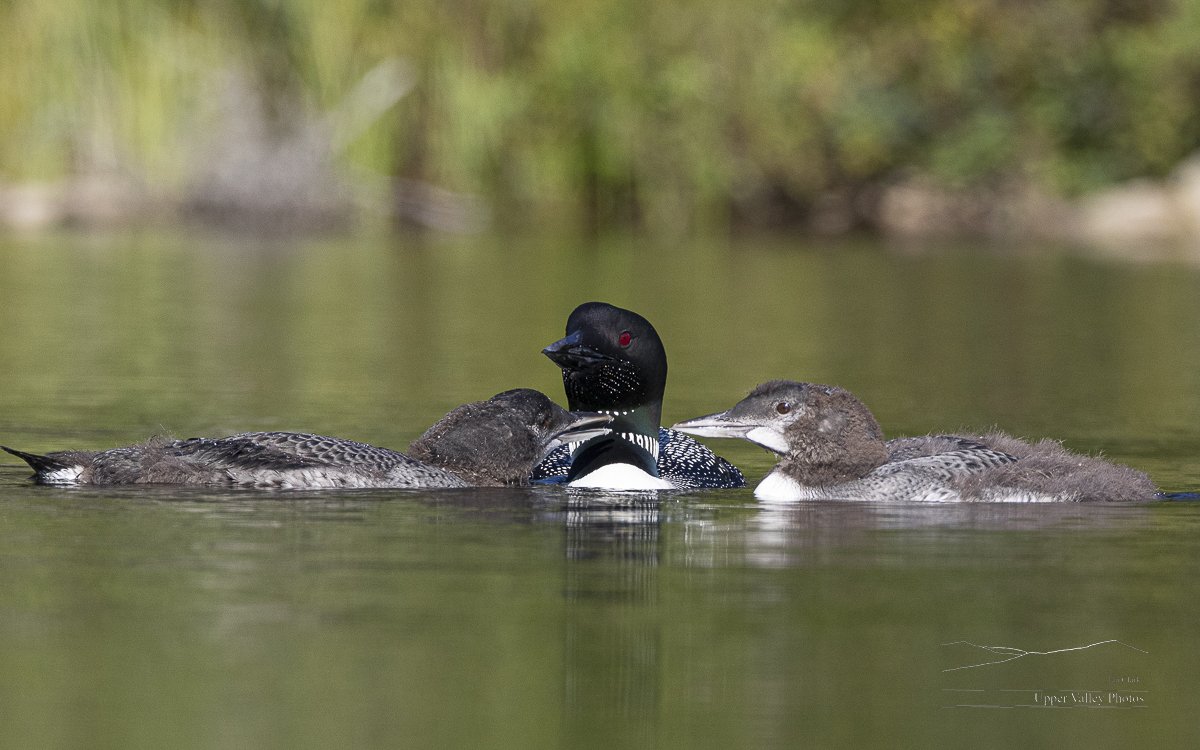
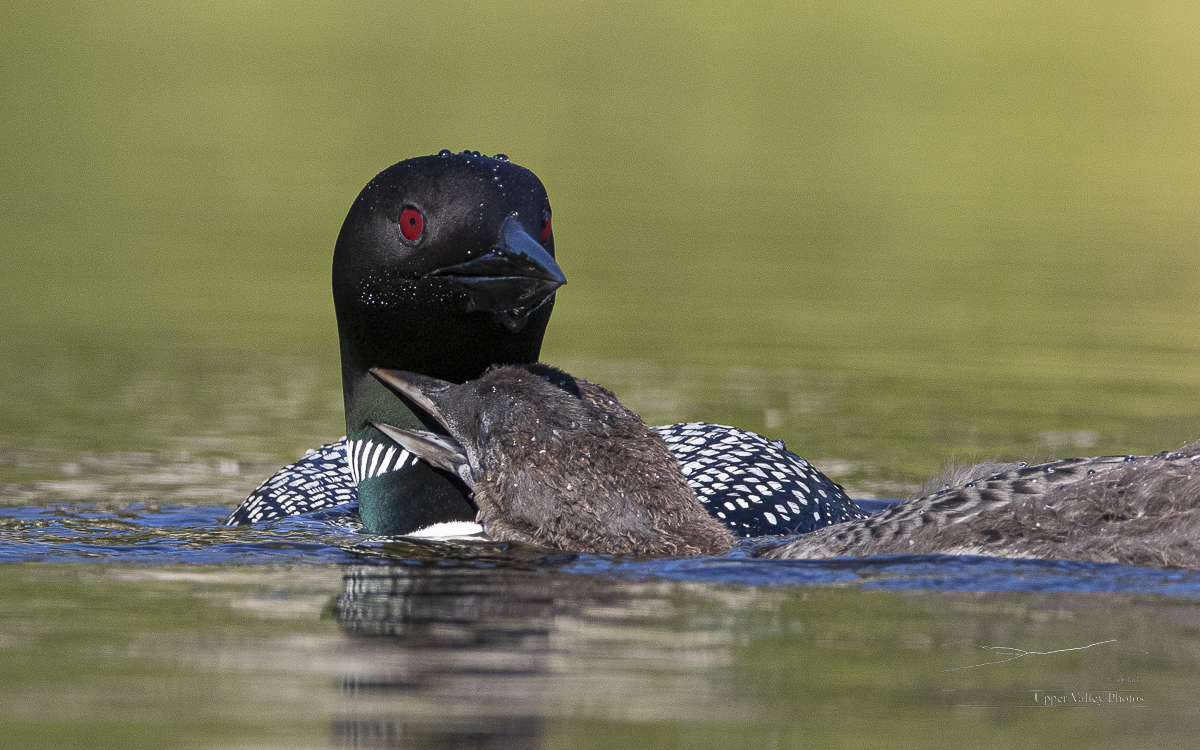

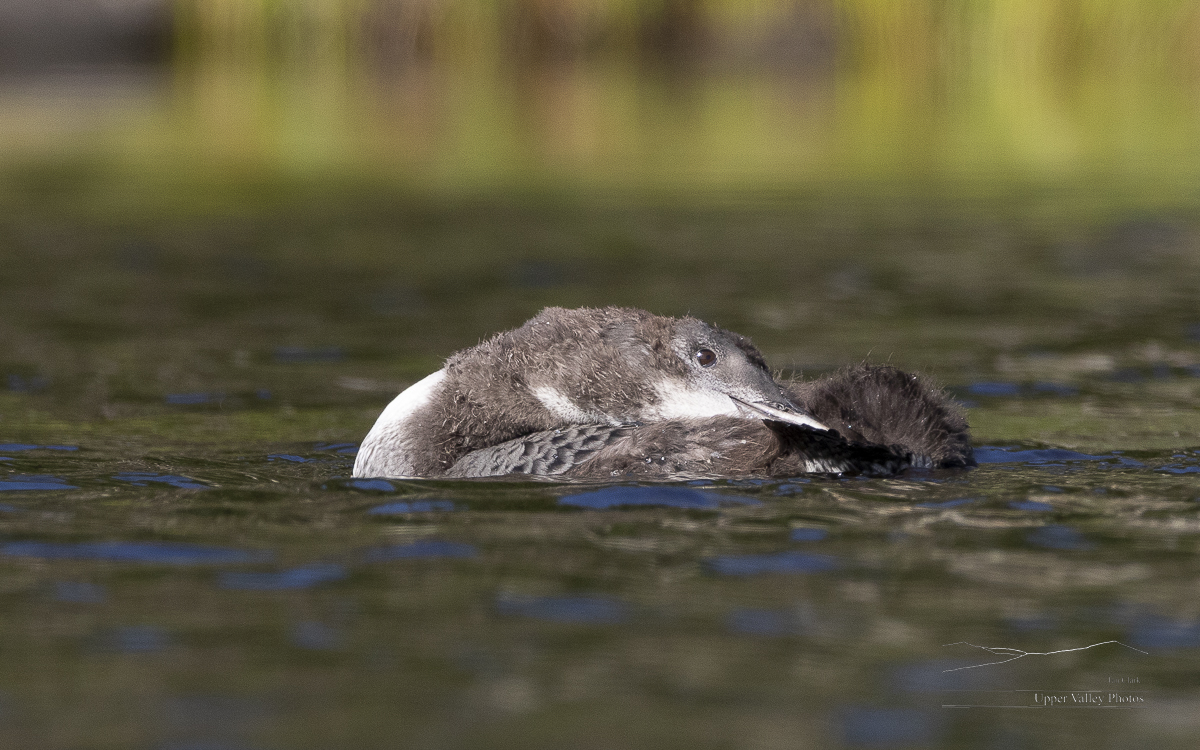
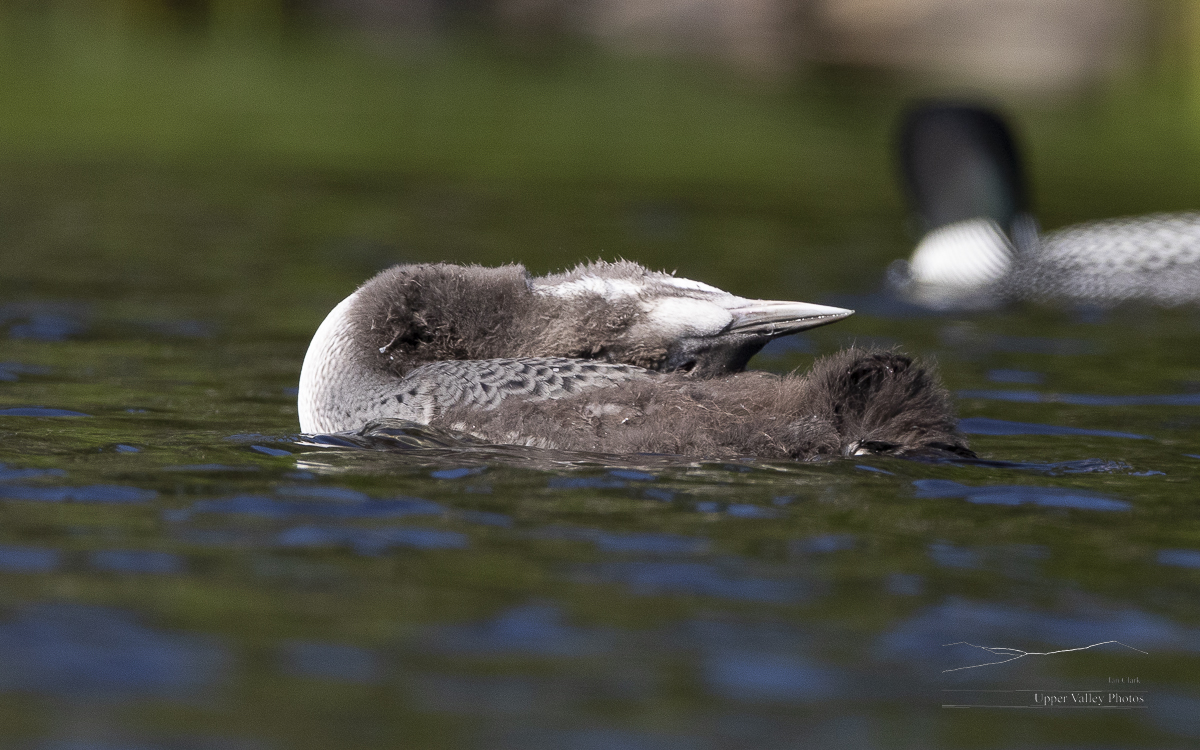
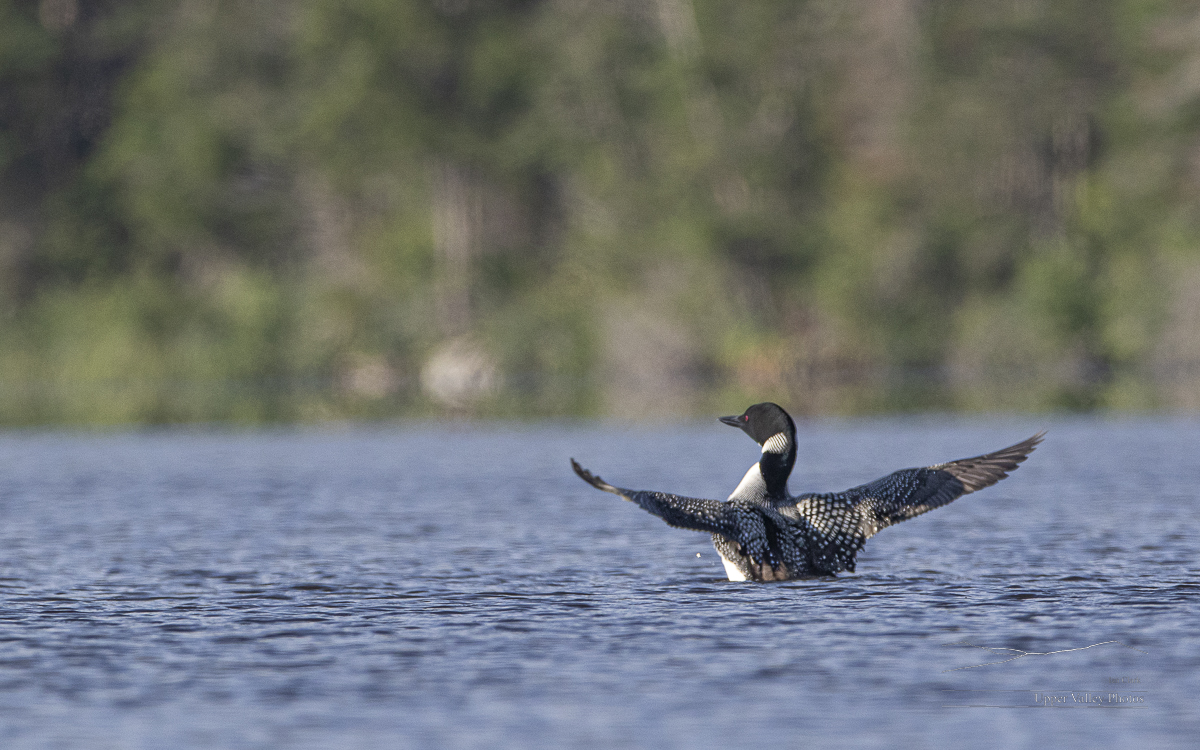
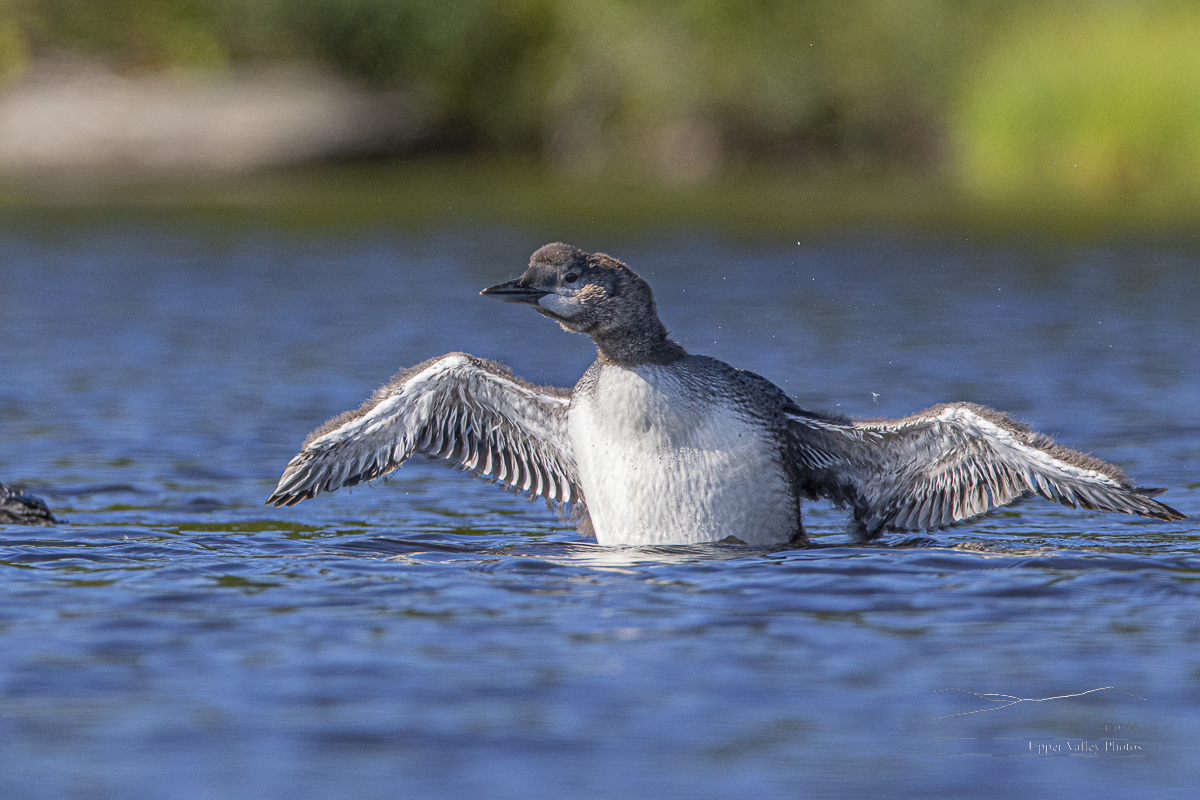
The intruder stayed at the far end of the pond for the remainder of the time I was on the pond. I’m looking forward to getting back up to visit them again.
If you like my posts, please feel free to share them on your social media with the really annoying buttons on the left (they shouldn’t be showing up on mobile devices).
Local Wildlife
Many of the birds around the marsh are nesting, there are lots of parents hauling groceries back their nests, others still sitting on their eggs. The Canada geese have mostly moved on, making the local ponds much quieter places. Let’s see who was out and about this past week.
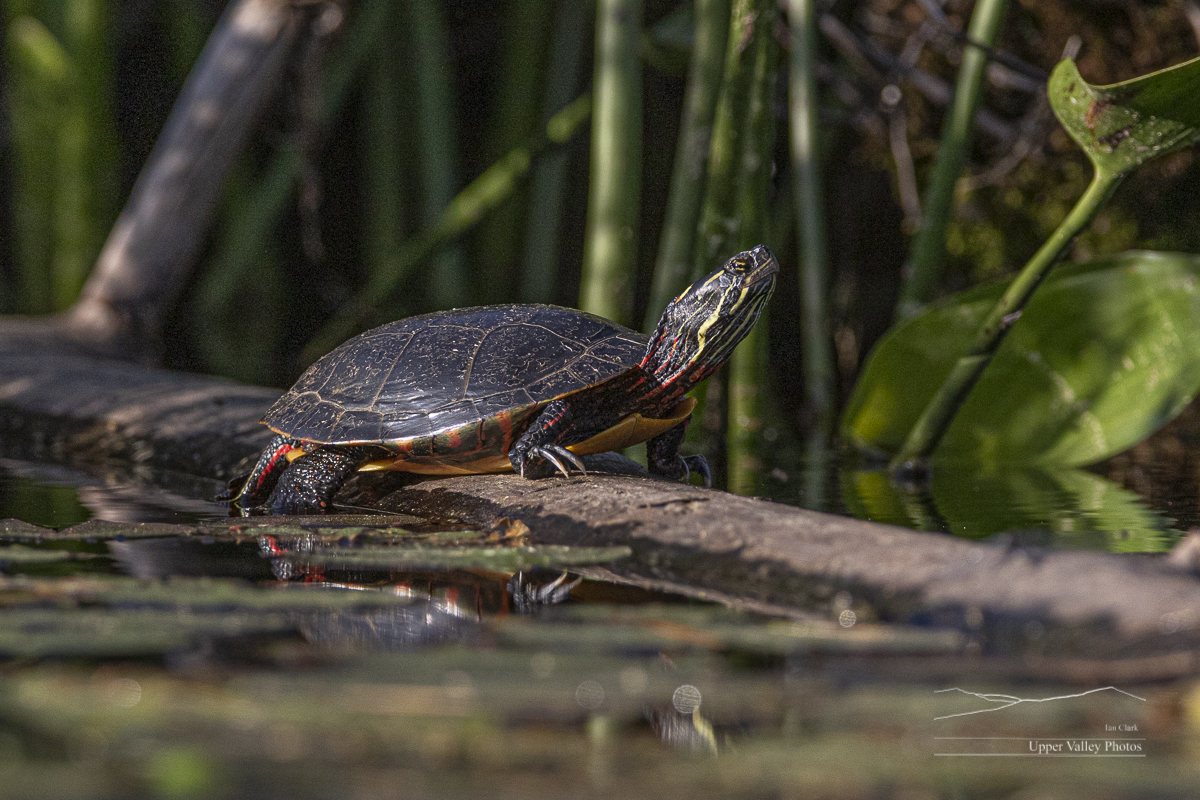
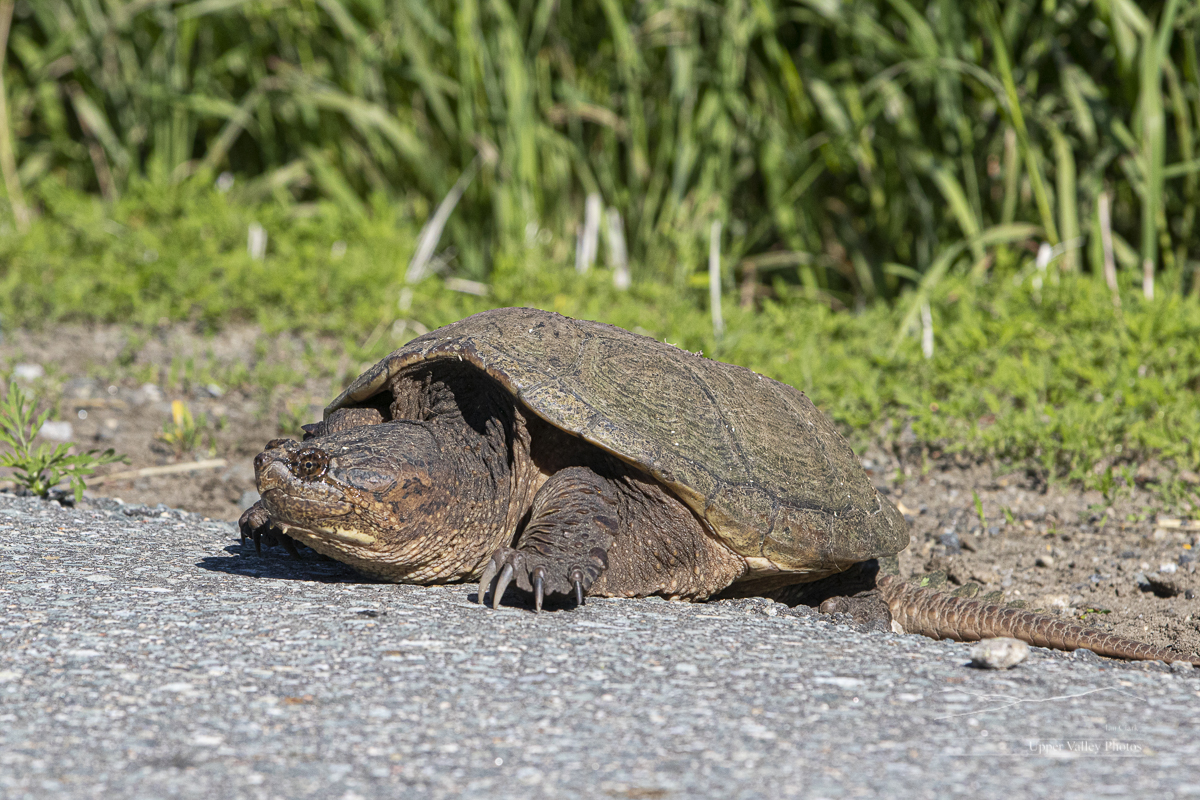
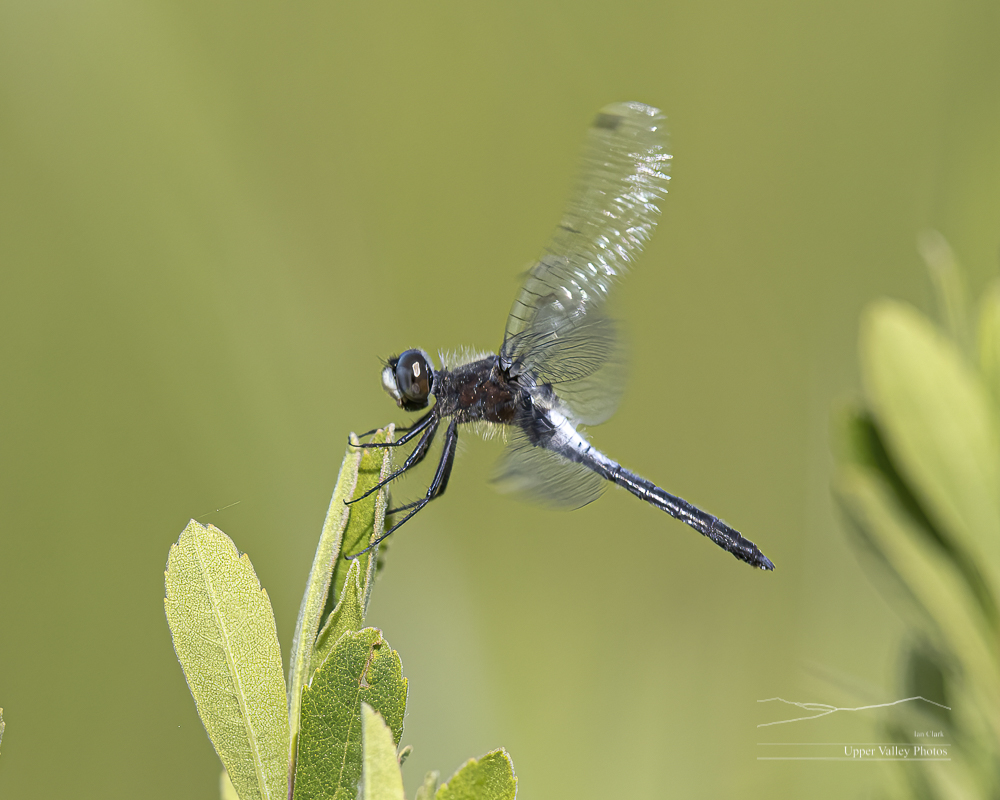
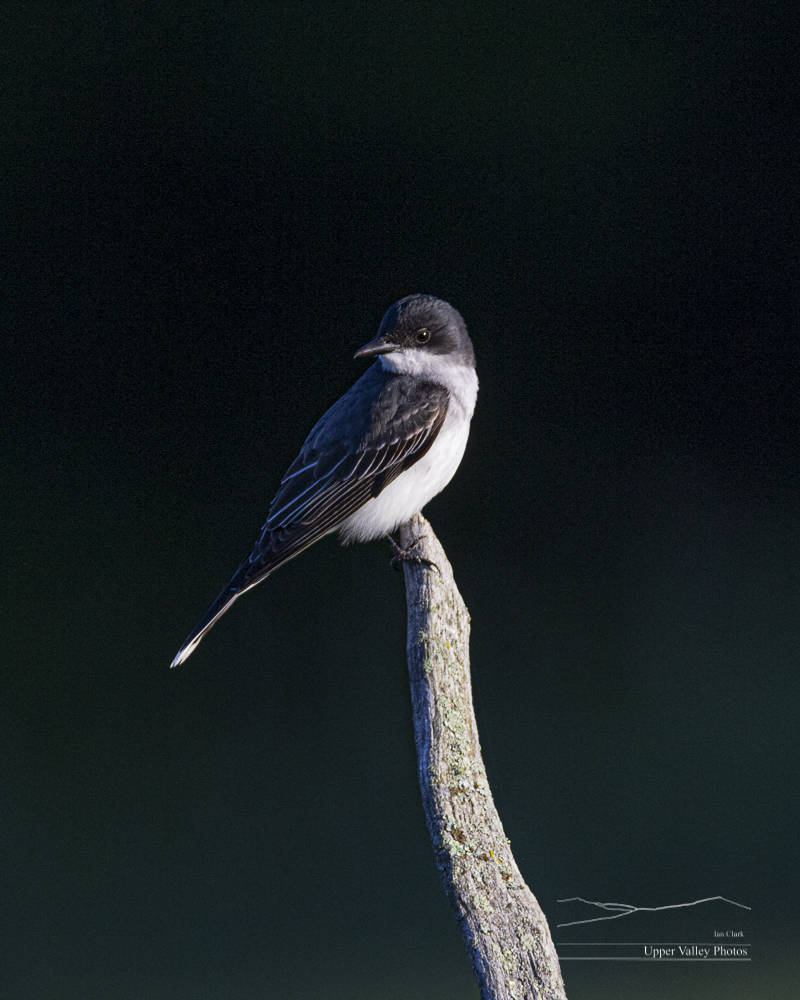
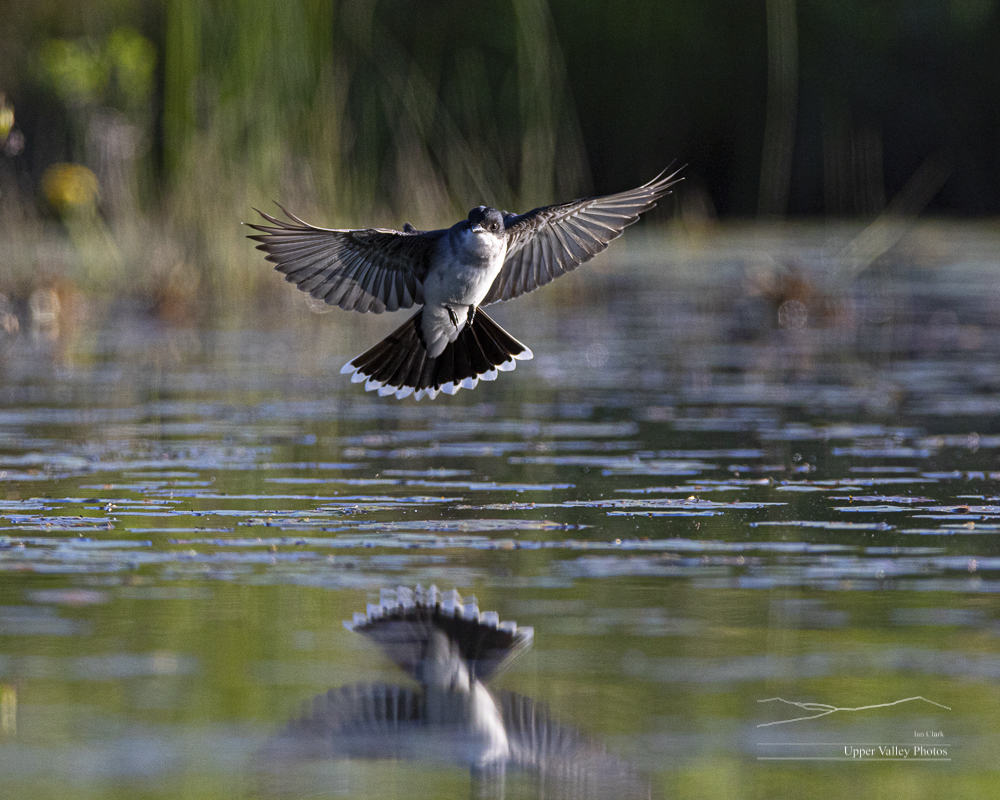

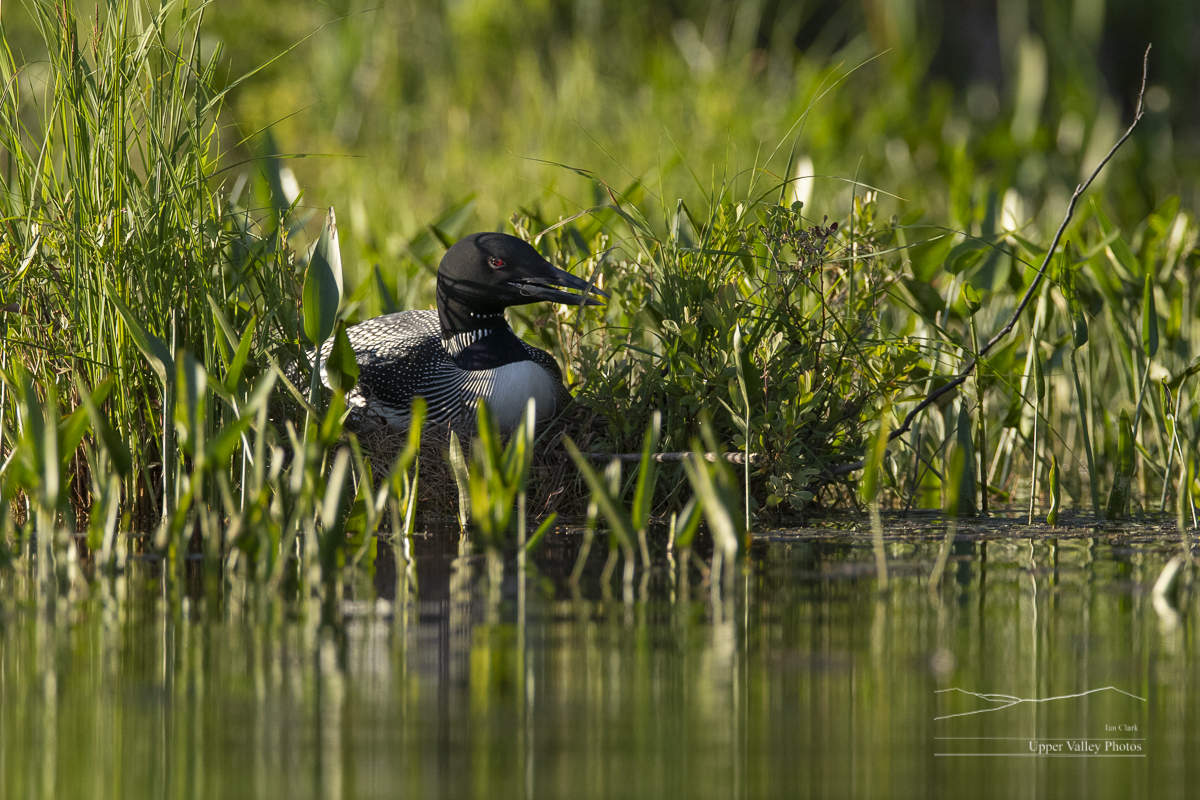
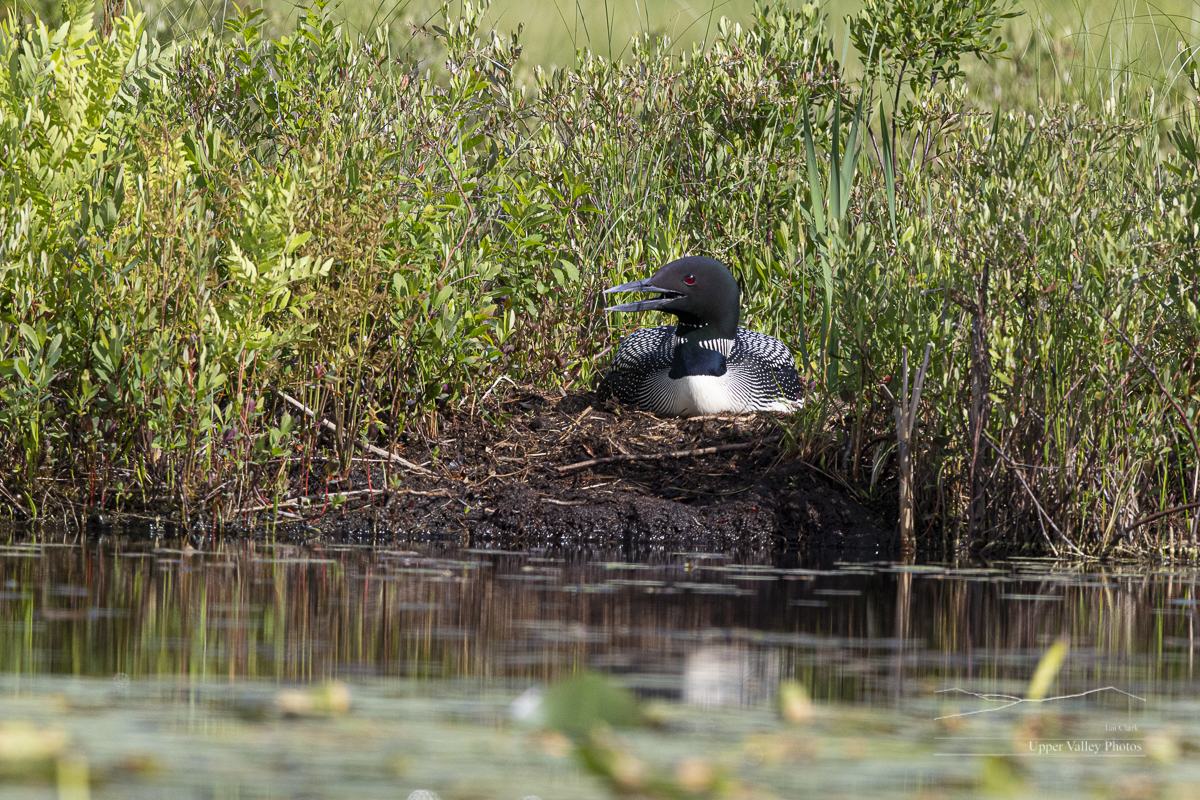
And, of course, no visit to the pond is complete without a couple photos of the loon stretching.
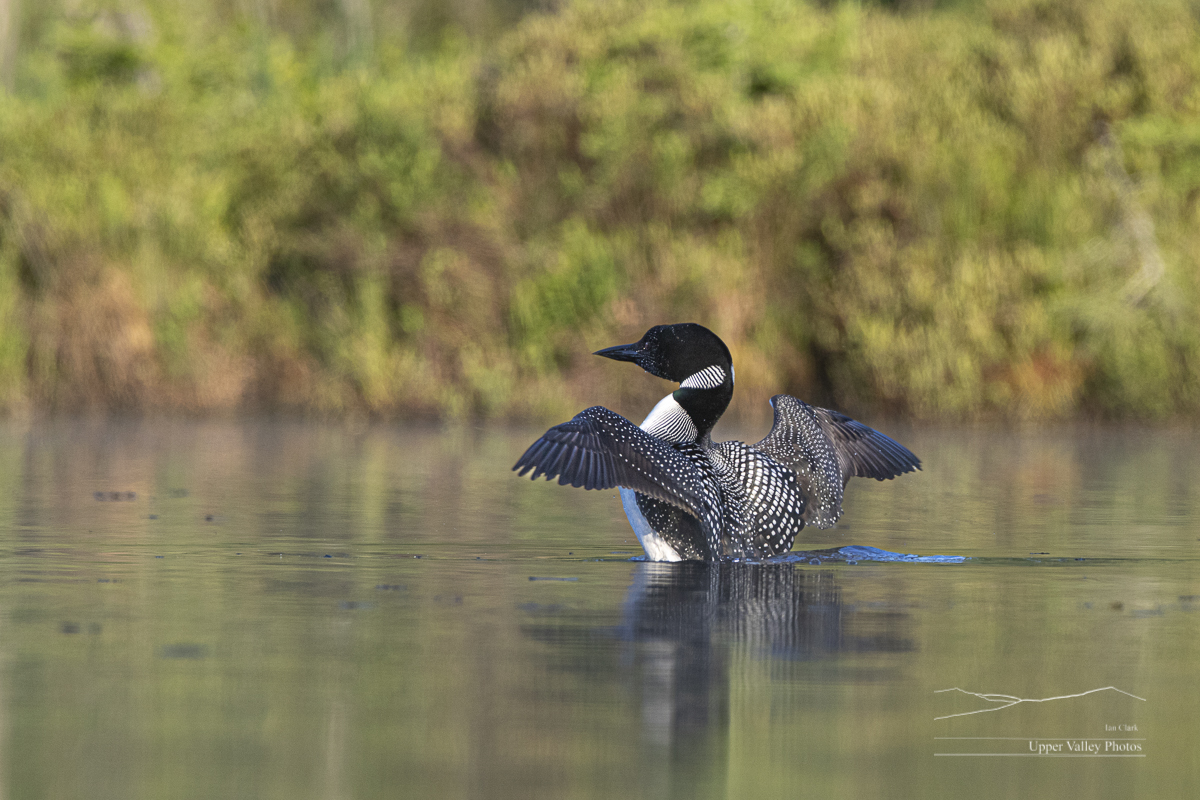
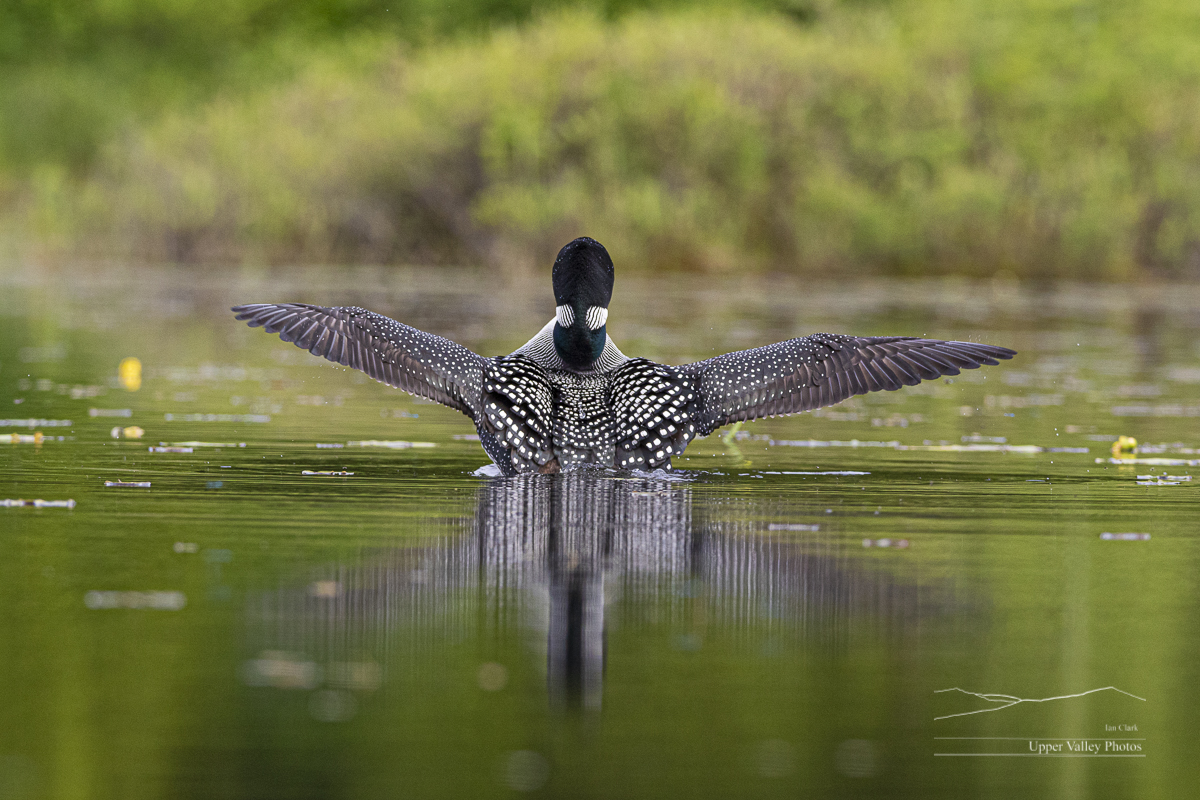
Loons Are Nesting, May 31, 2022
Many of the loons around the area have laid their eggs and are sitting on their nests. I’ve been out on several ponds this last week, checking on them and in some cases, putting out the loon nesting signs. Let’s see what I saw along the way.
Just a reminder to let the loons be. You may have the best intentions, but the loons don’t know what you’re up to and approaching them may stress them. And, while it may be harmless for you to approach the nest to have a quick peek, remember you could be the 20th person getting close enough to stress the loons. All the photos of the loons on or near their nest were shot with a 800mm lens and cropped – I’m back well over 100′.
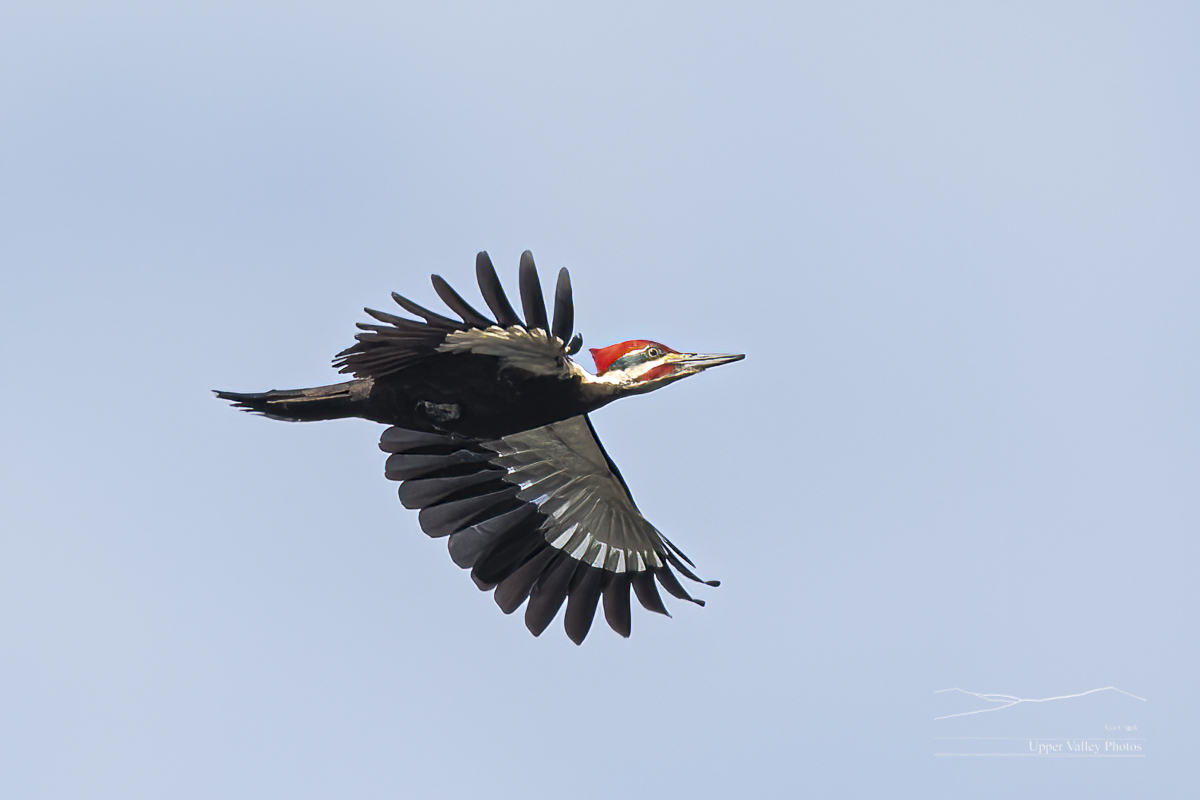
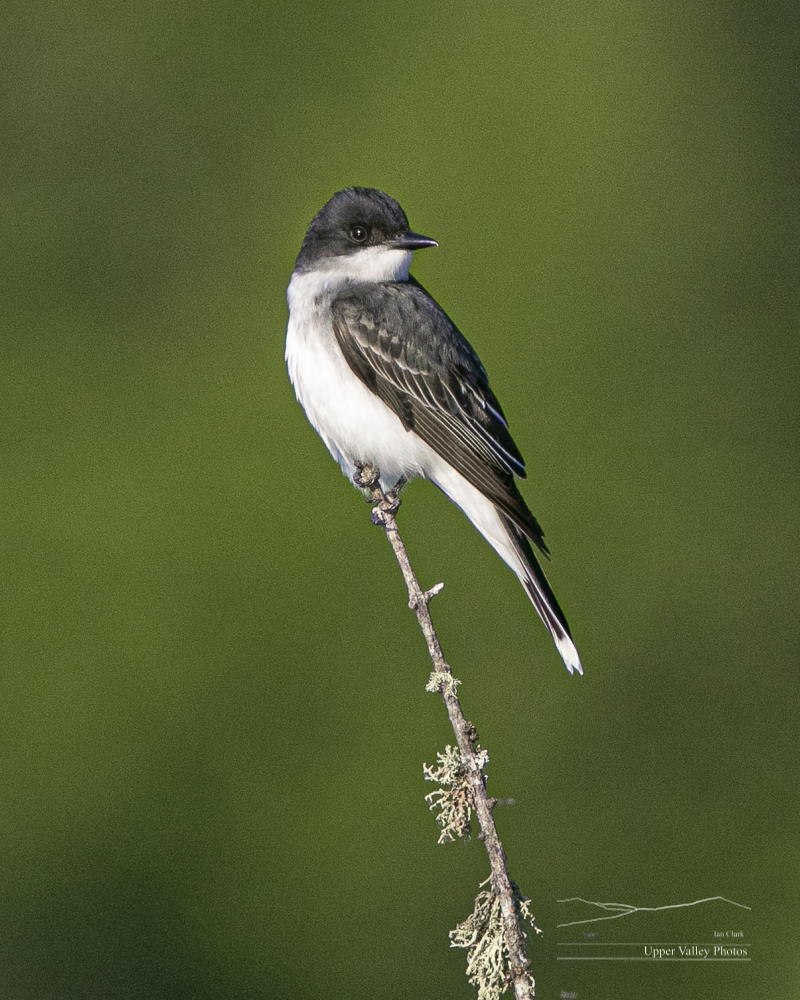

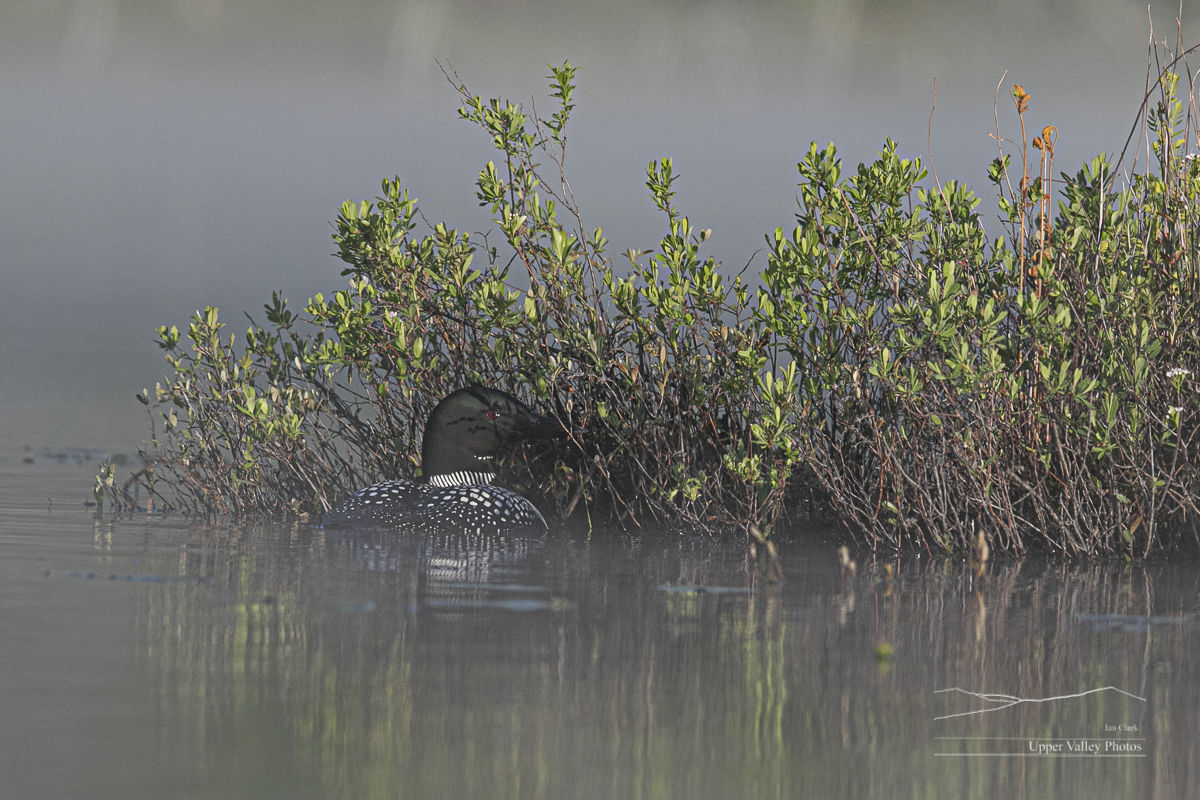
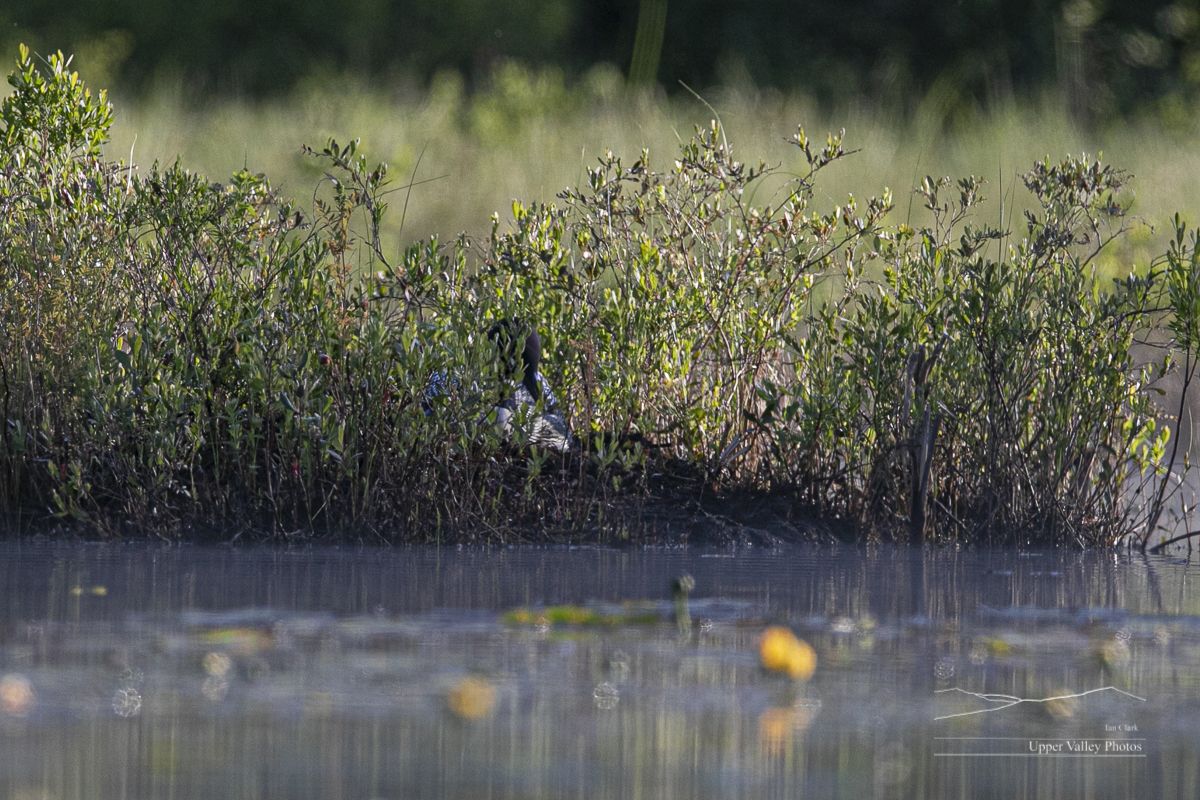
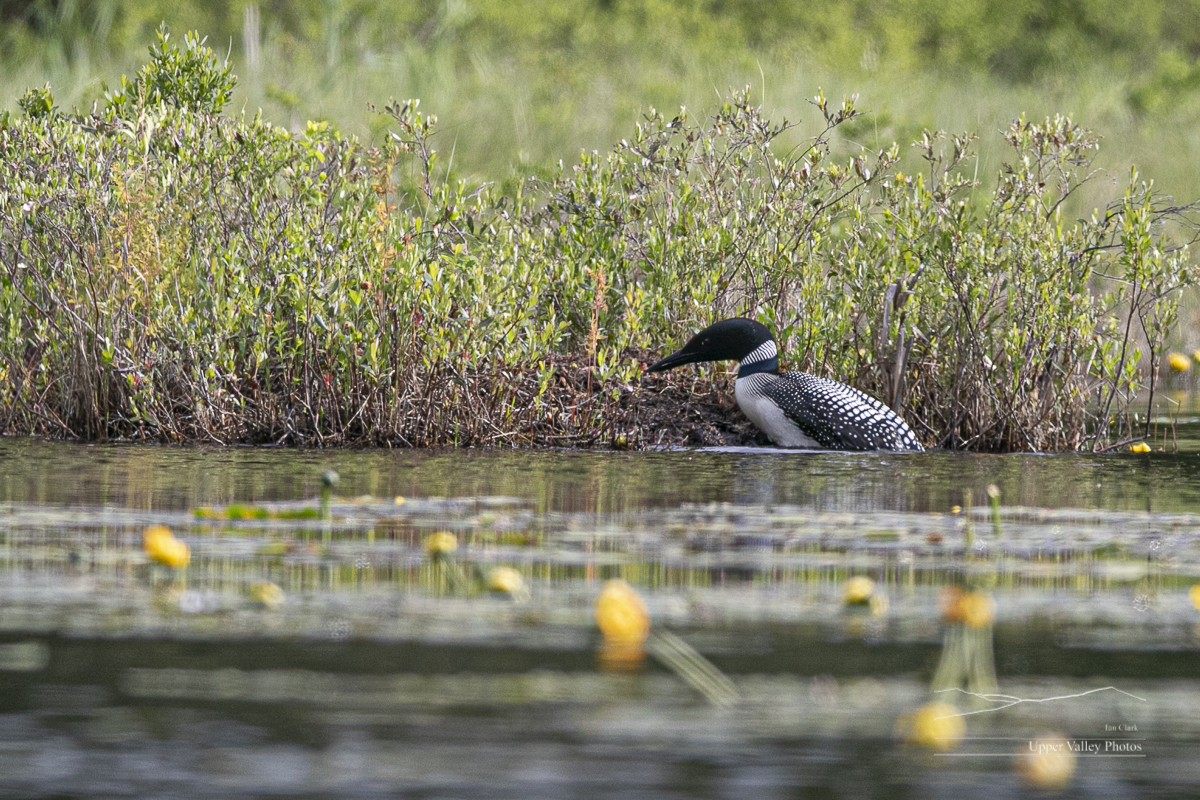
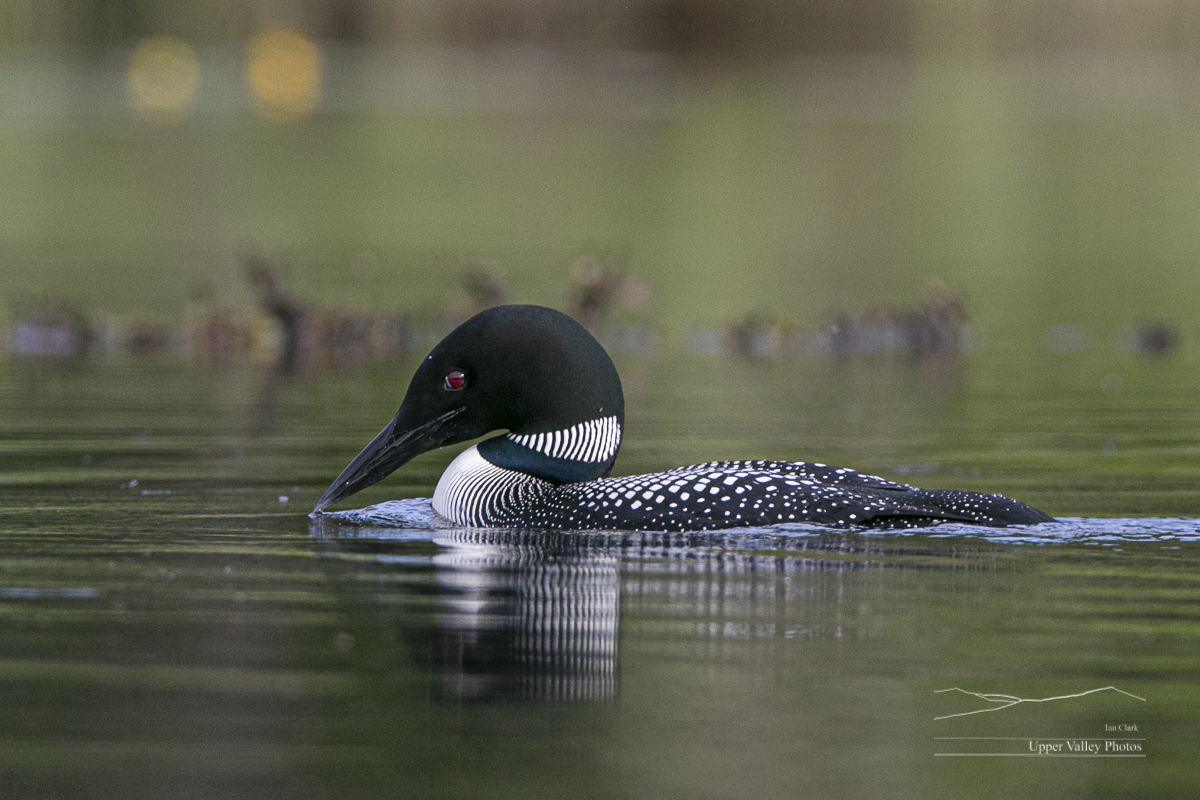

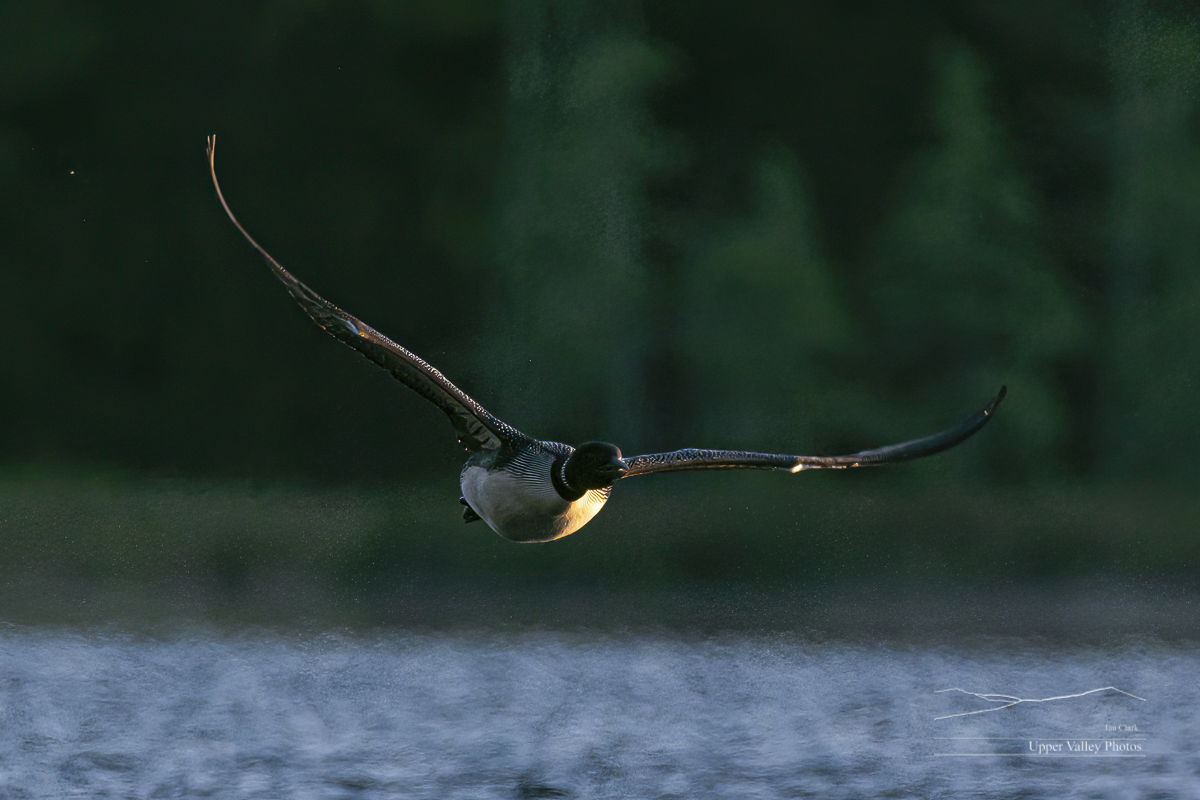

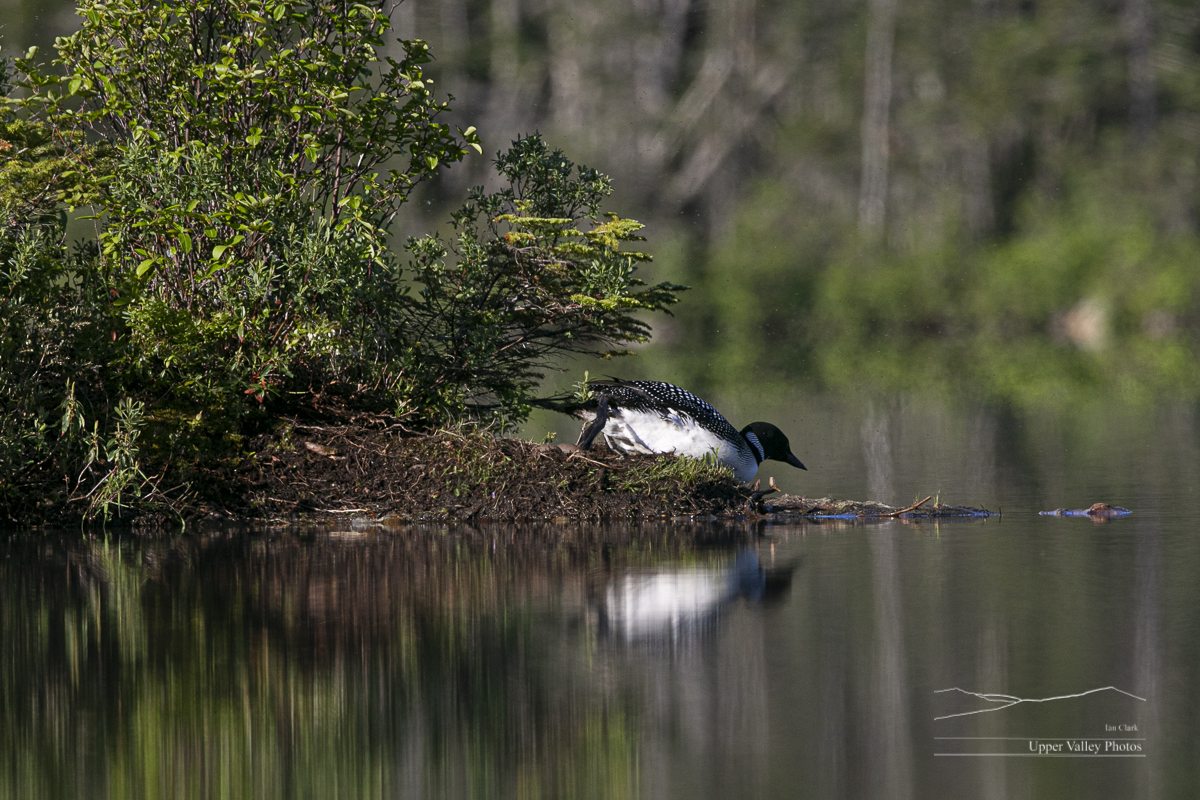
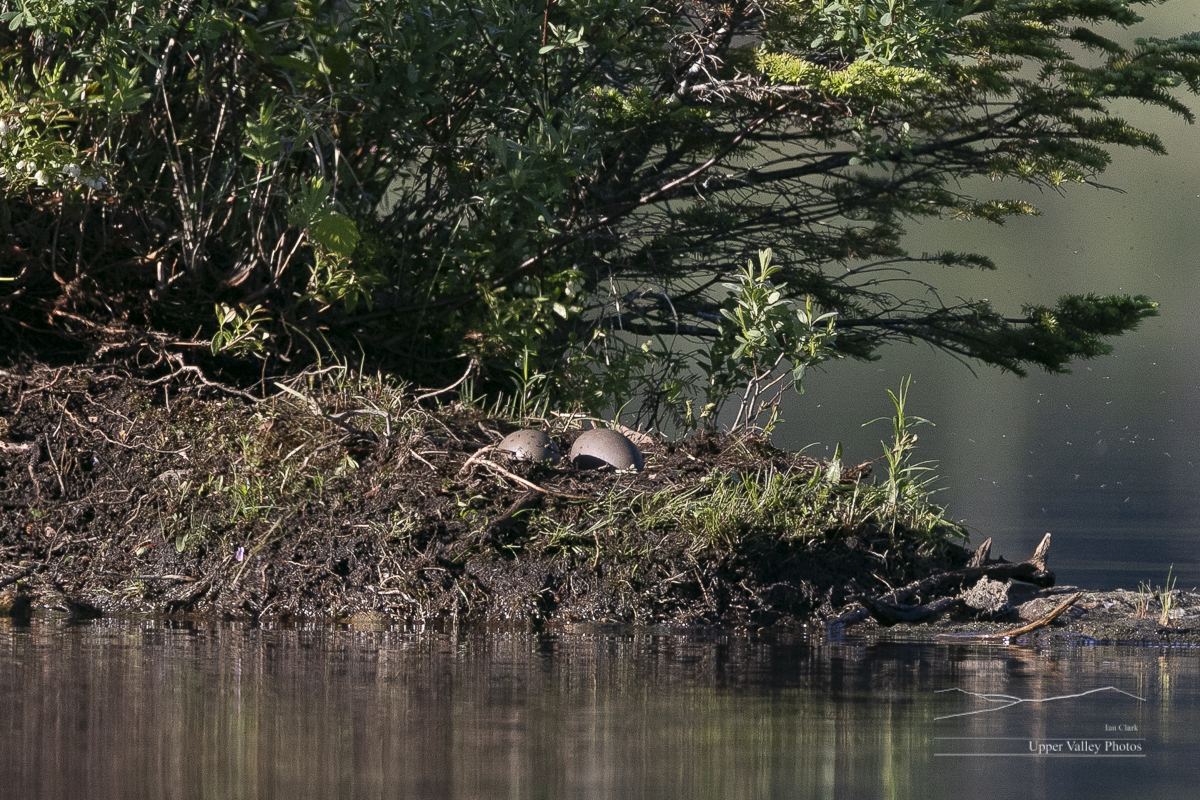
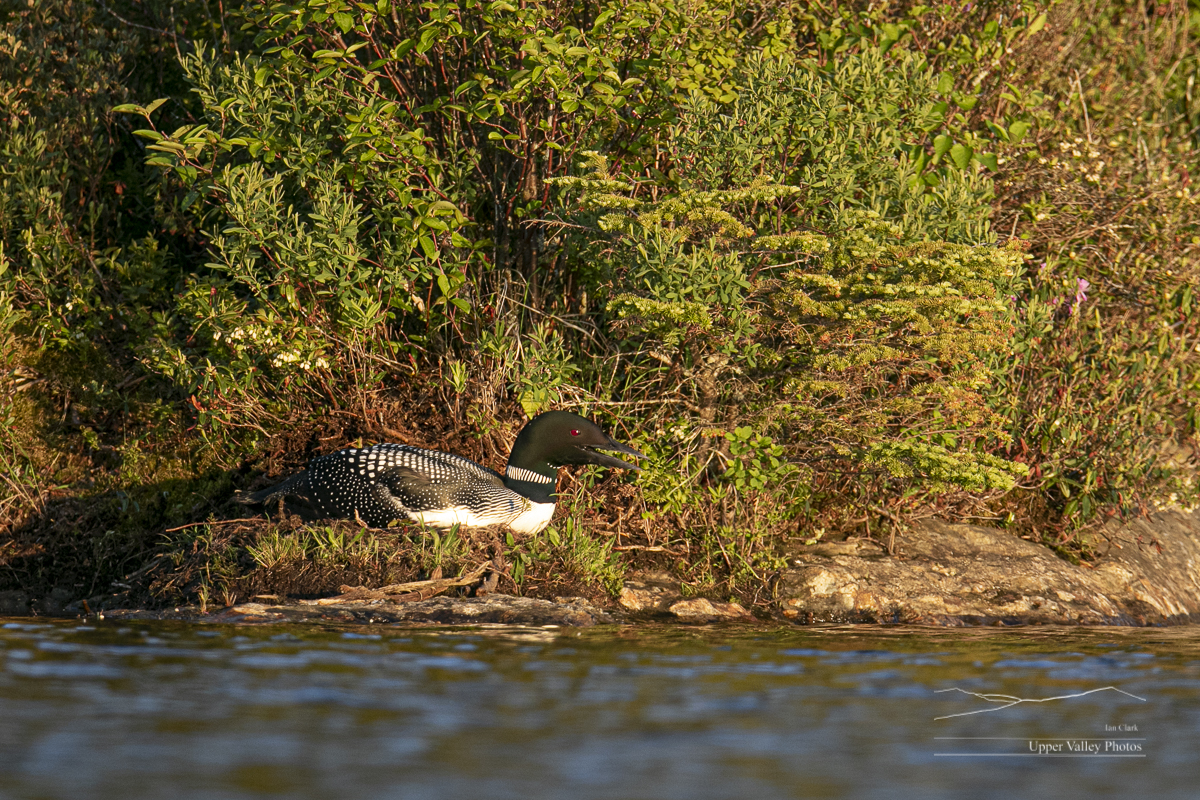
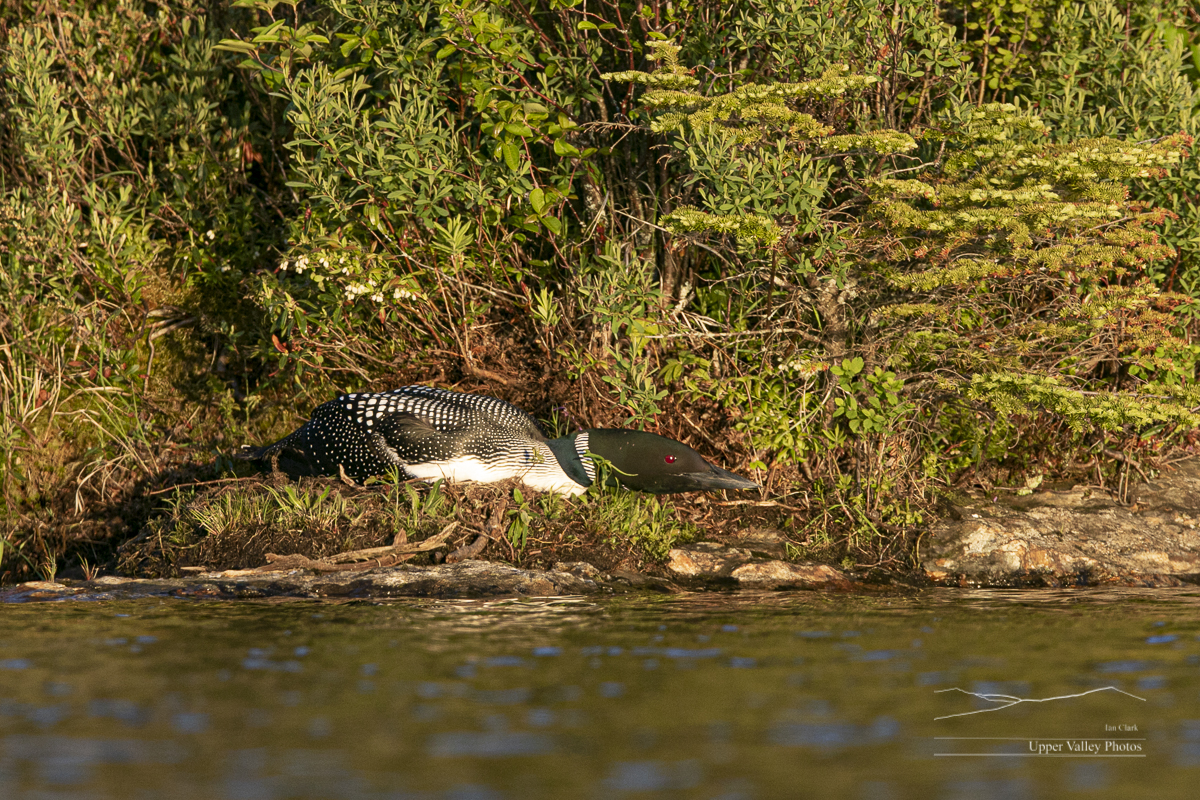
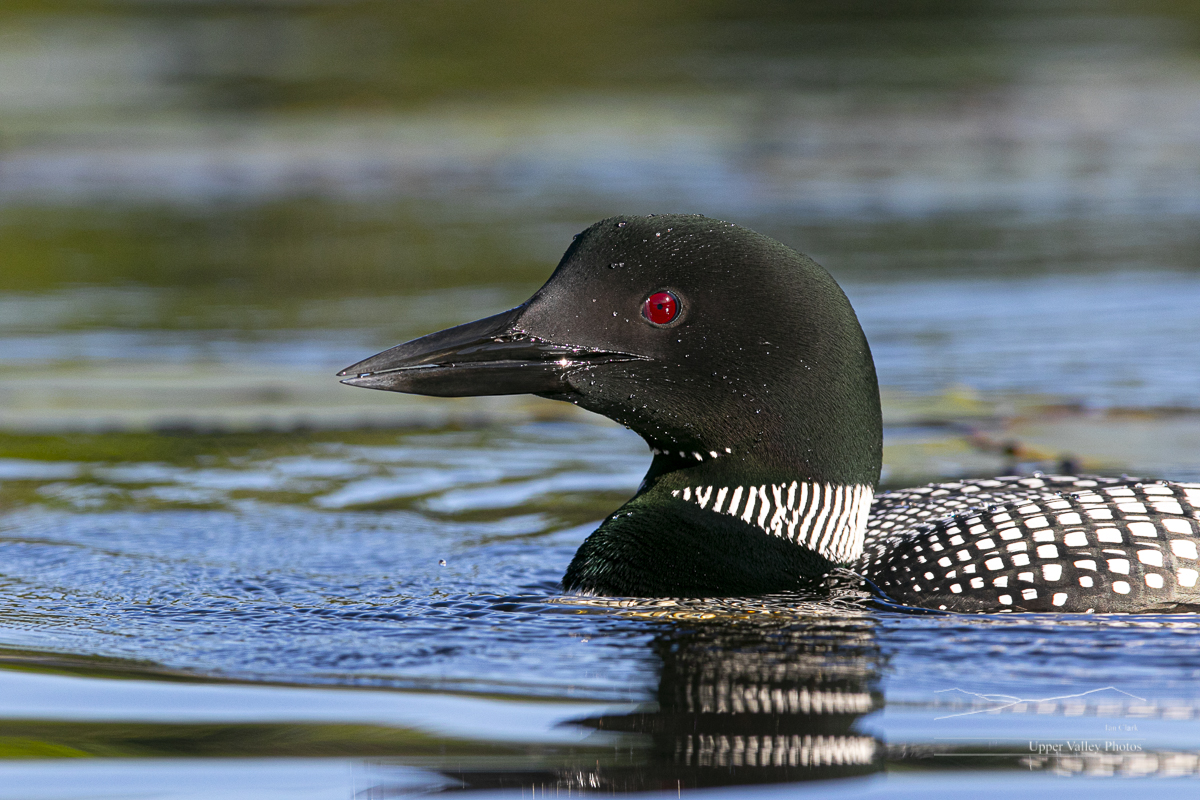


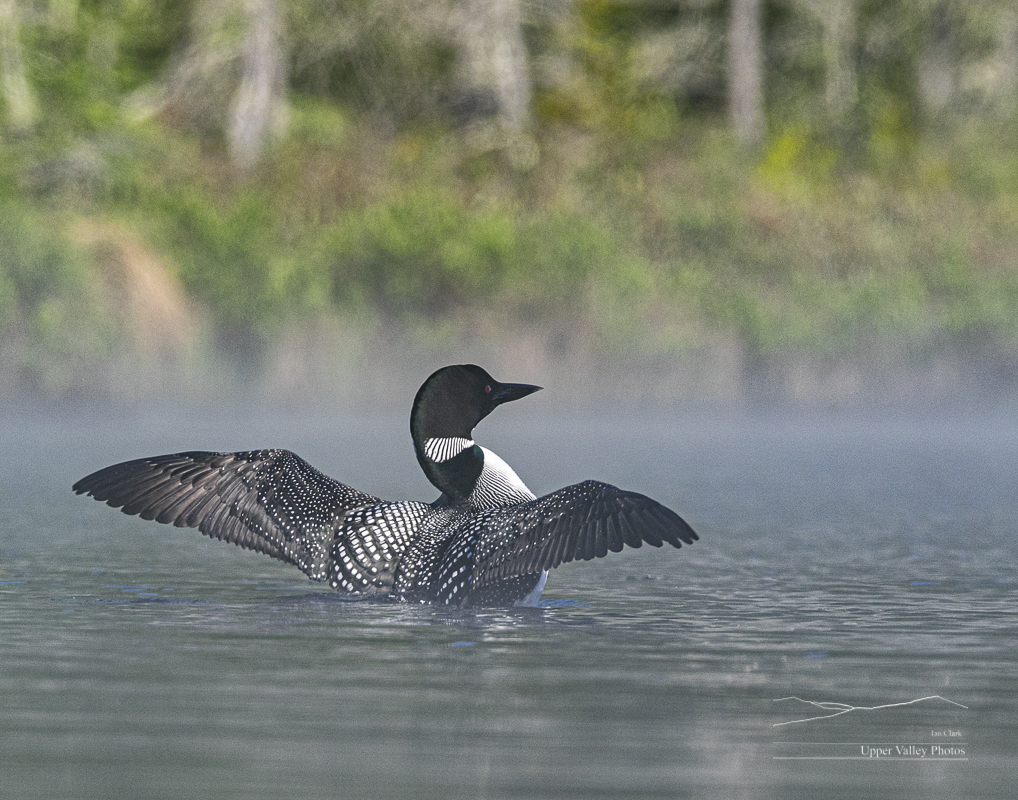

I hope to follow a couple of loon families for the rest of the summer again. Sign up for post updates to keep up with how they’re doing.
You can learn more about loons and conservation efforts on their behalf on the Loon Preservation Committee’s site, the Vermont Center for Ecostudies site or the Adirondack Center for Loon Conservation site.
